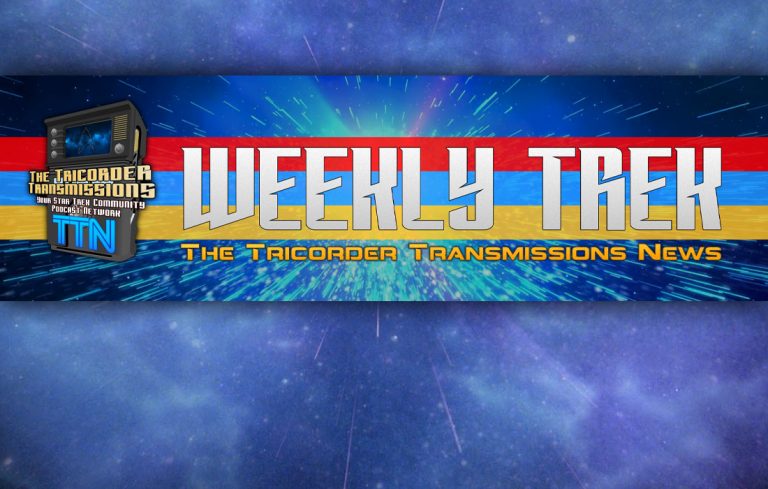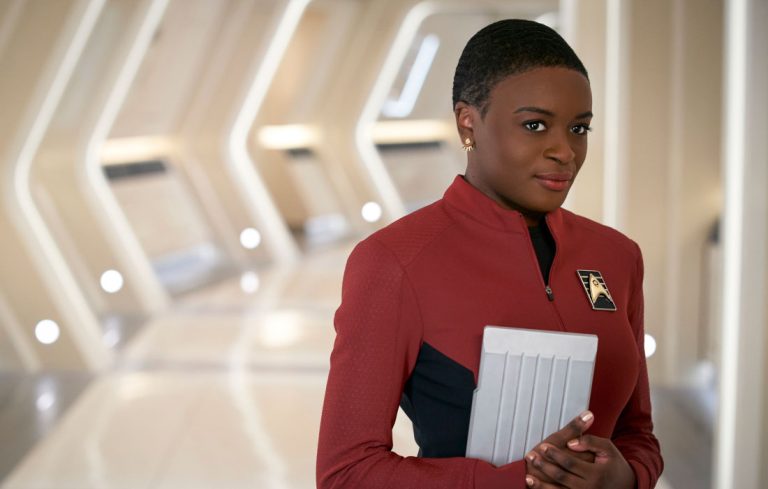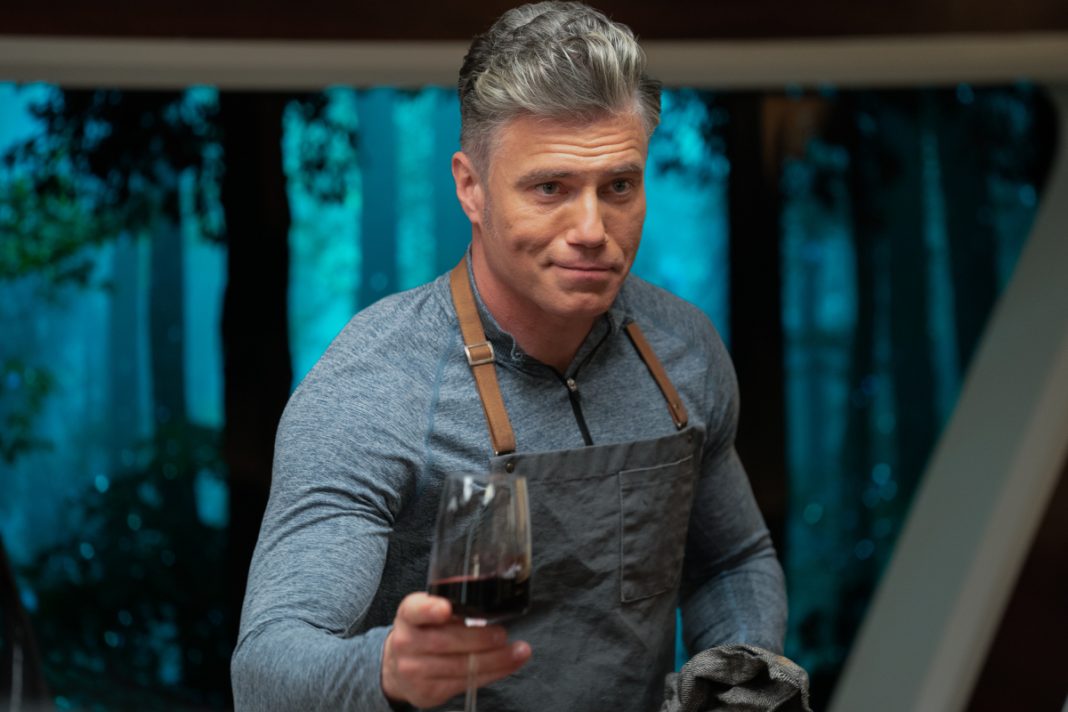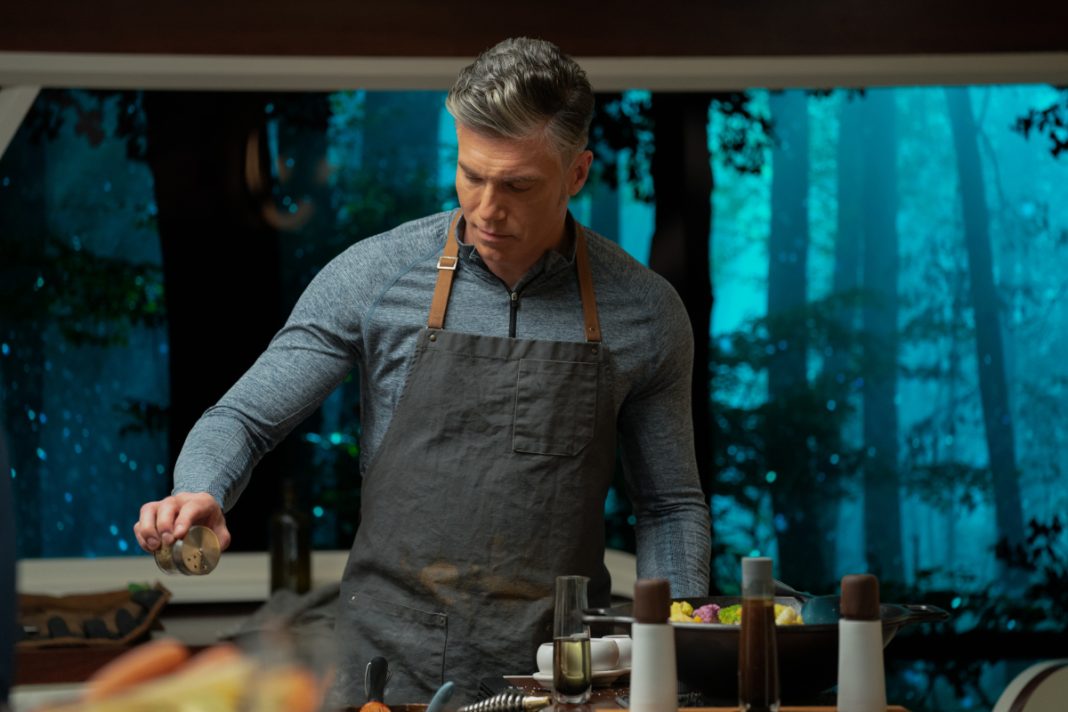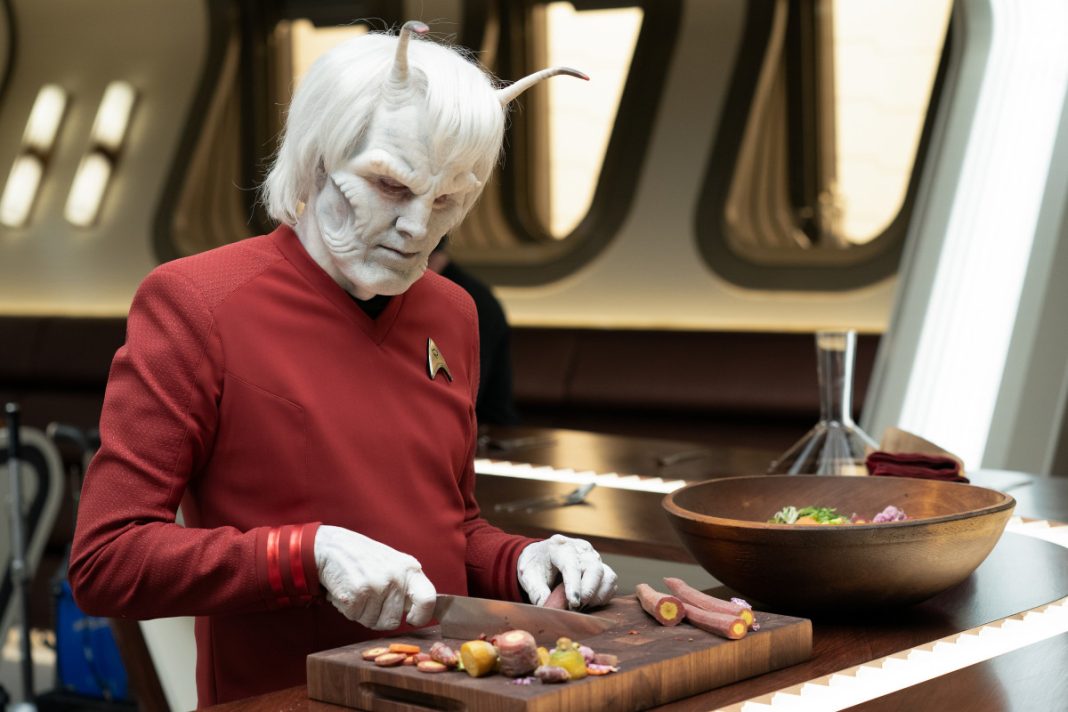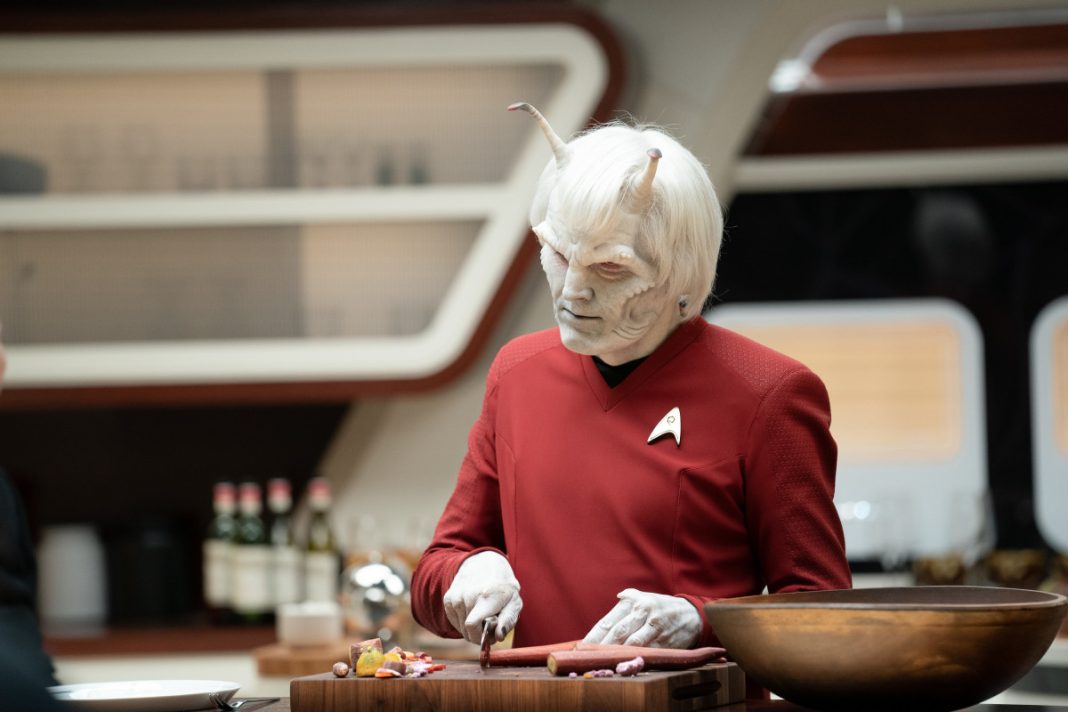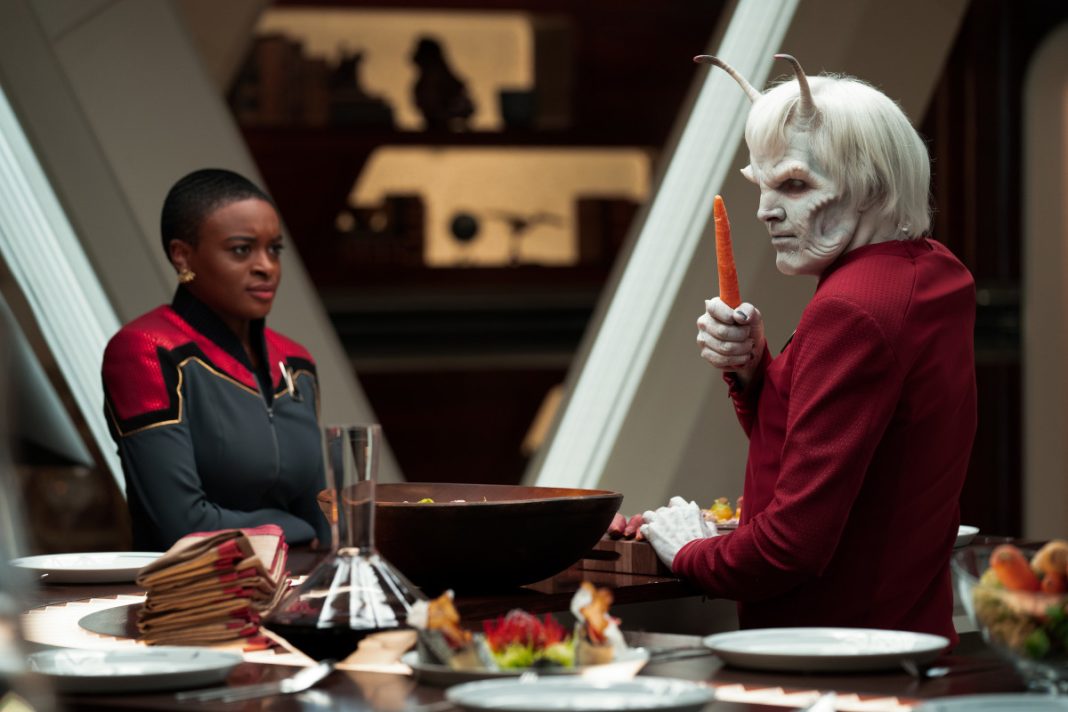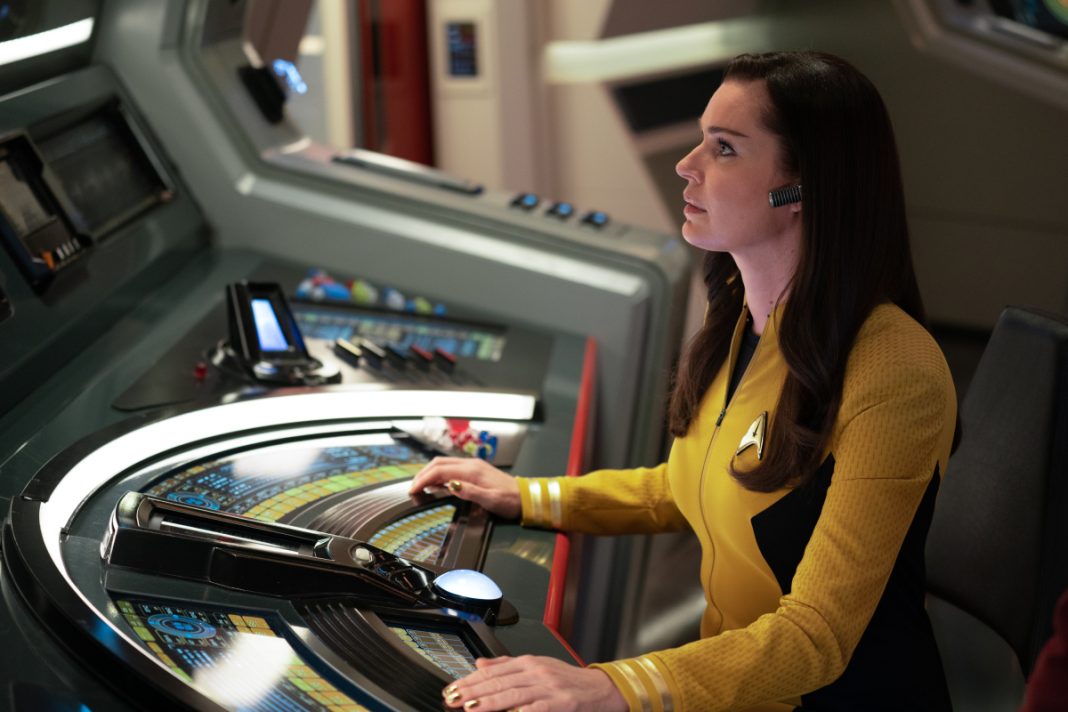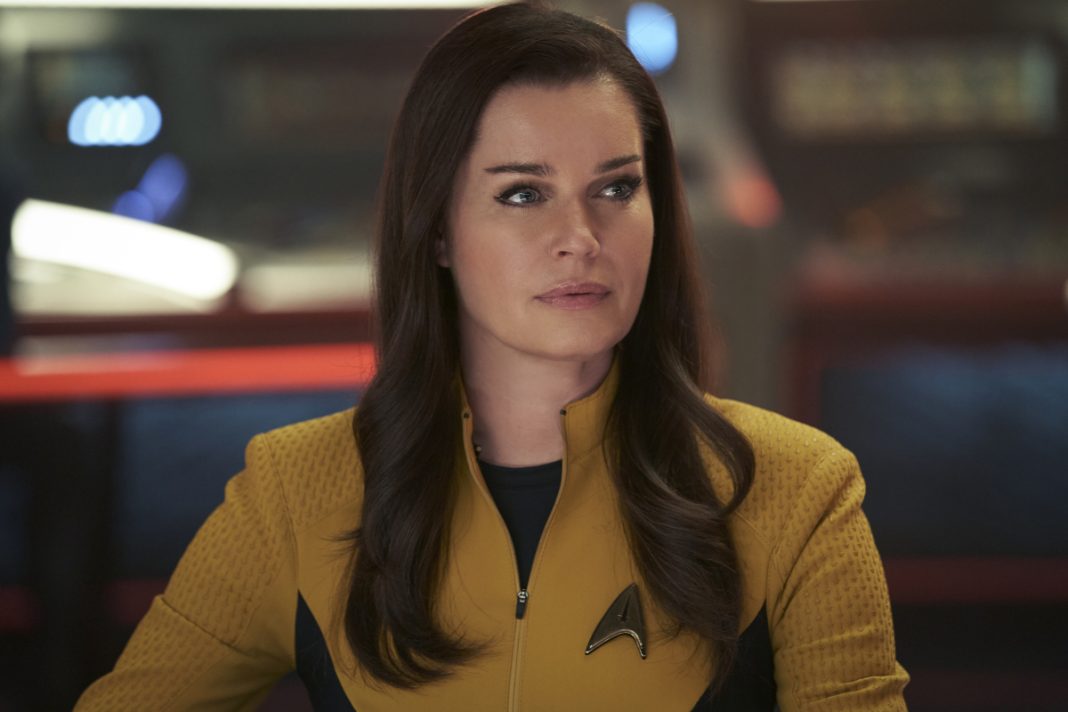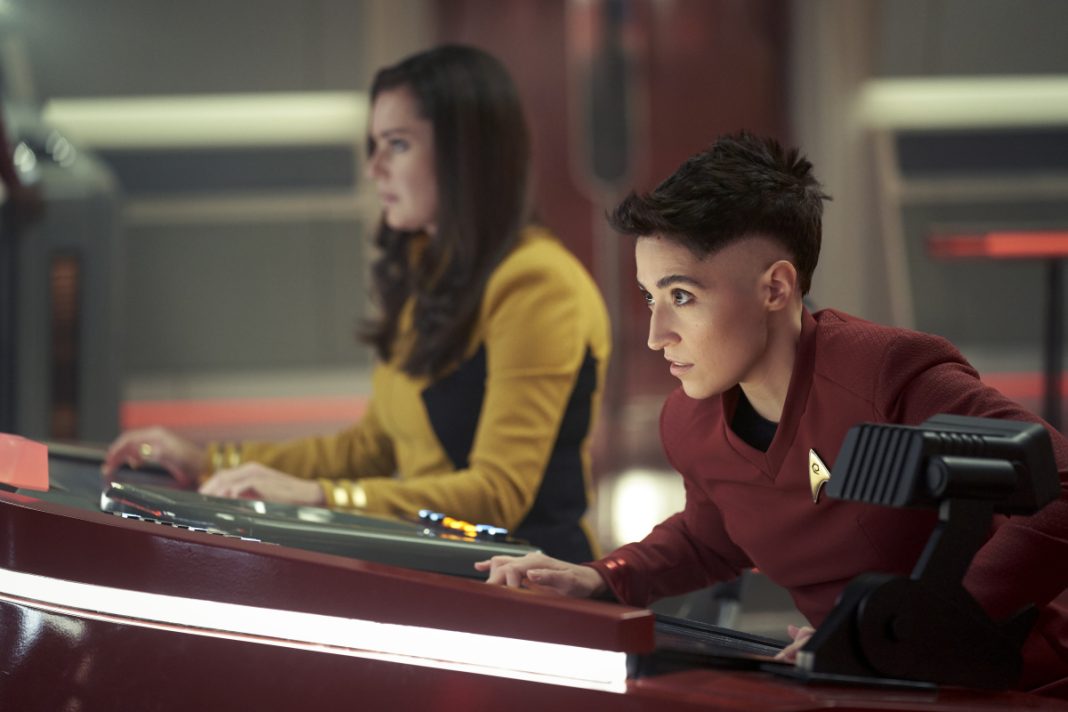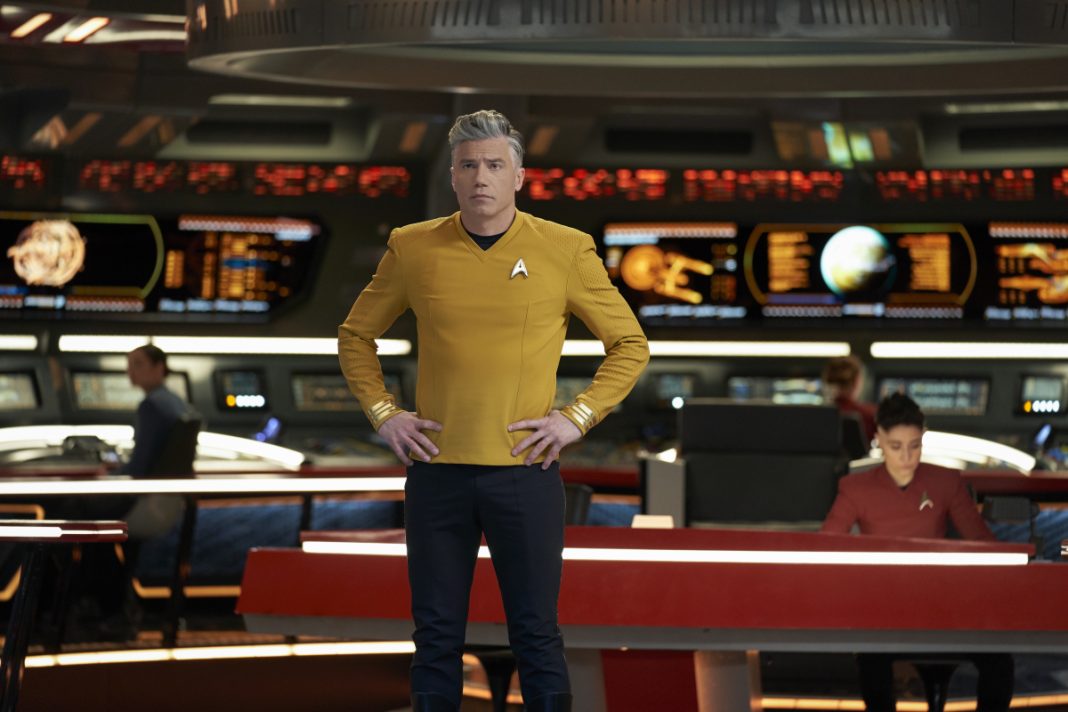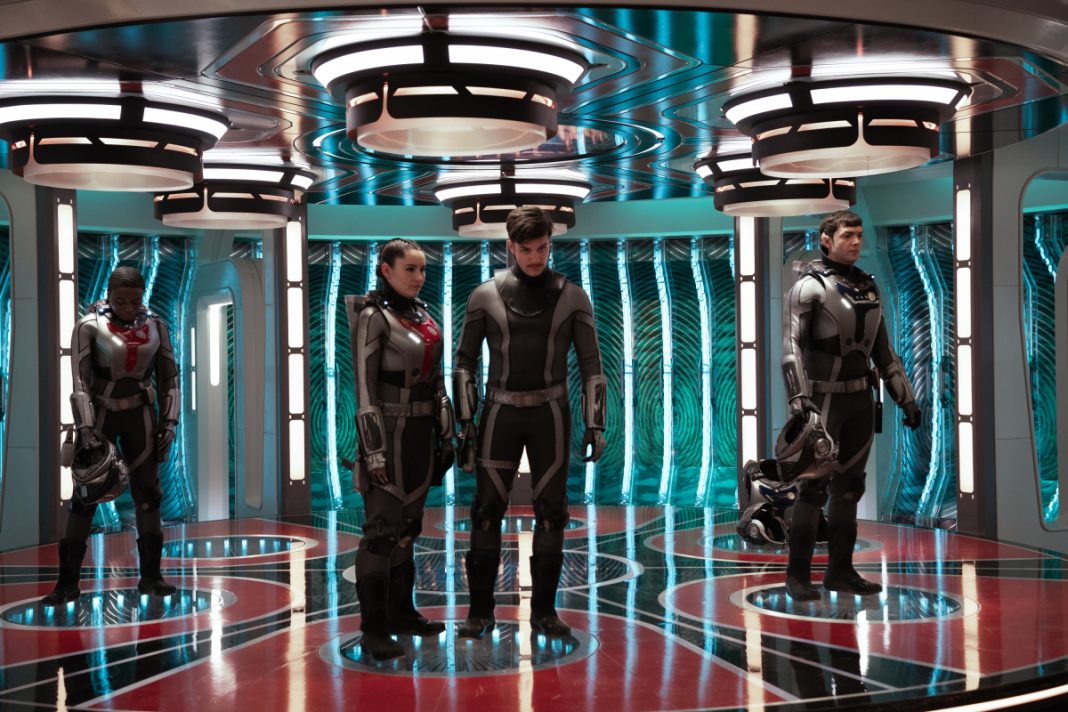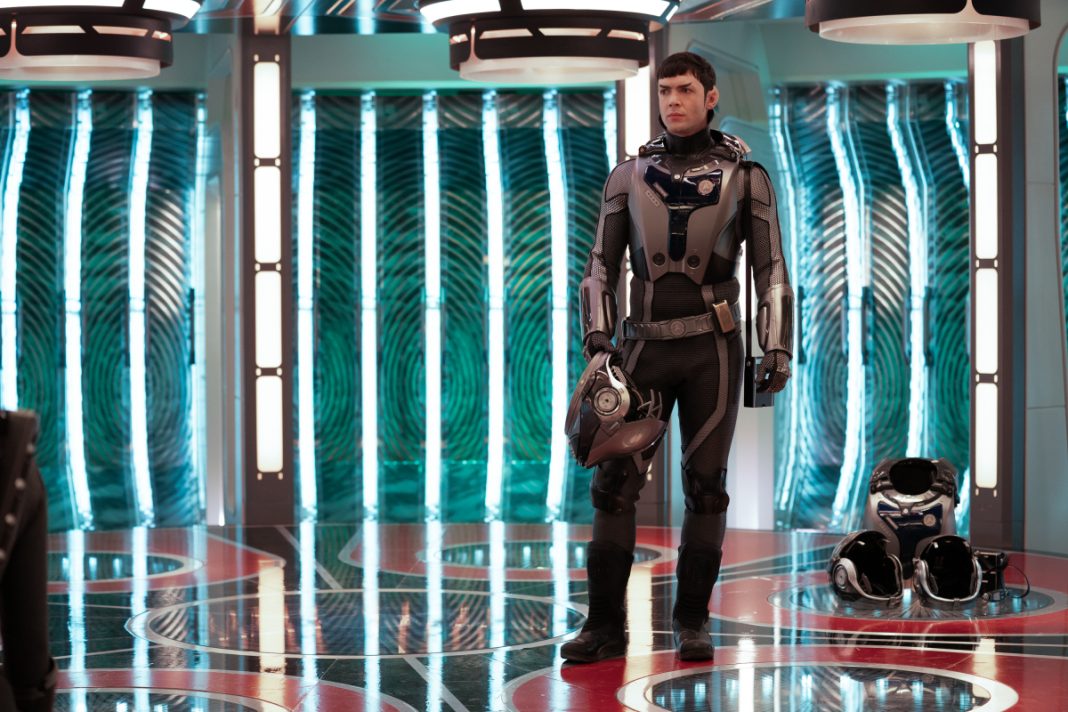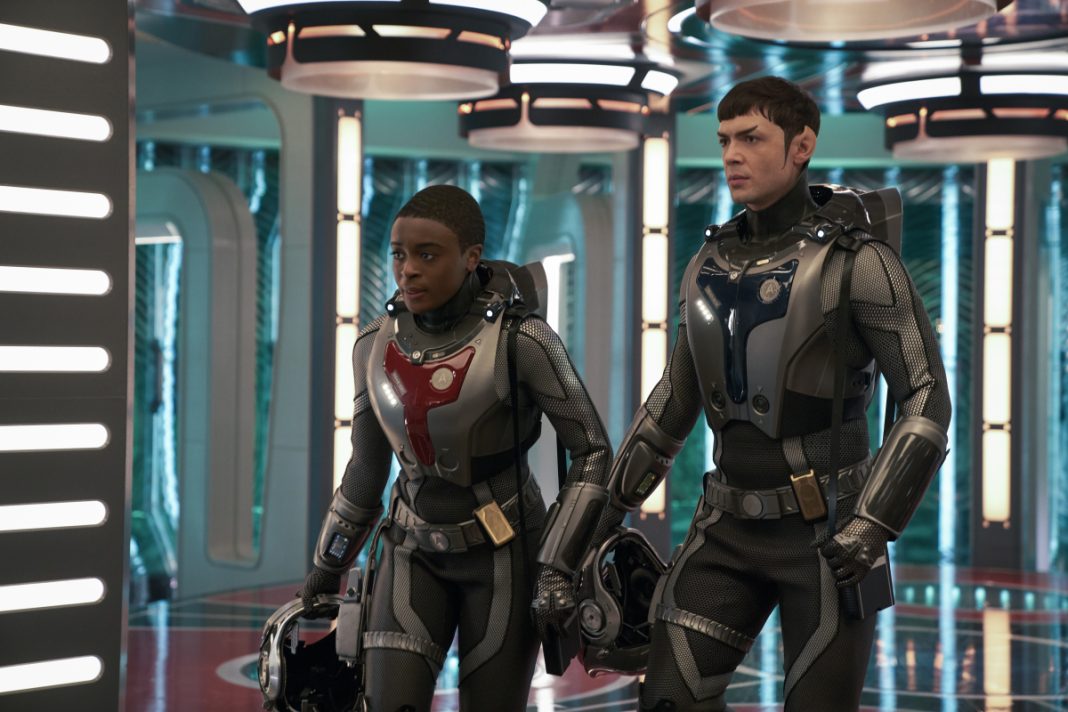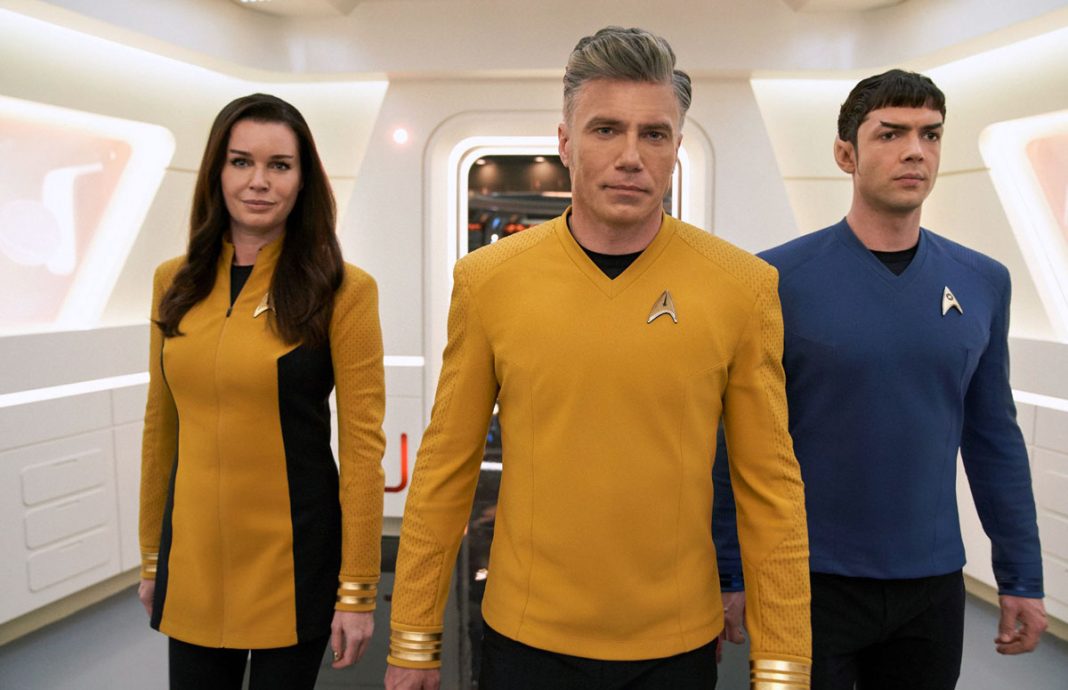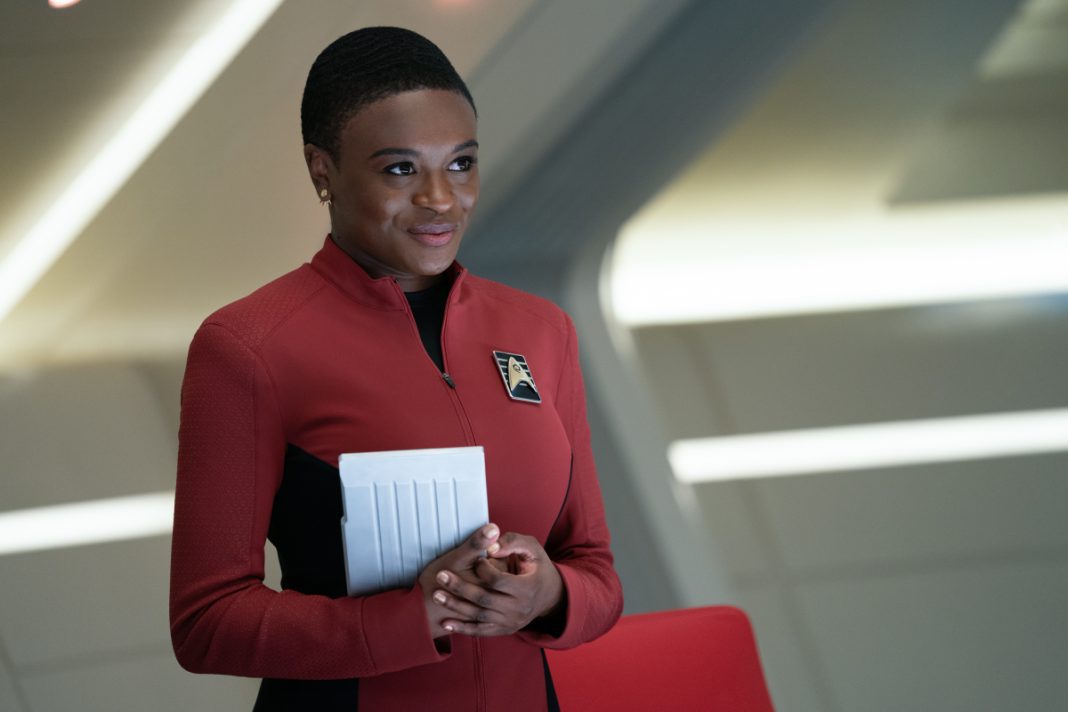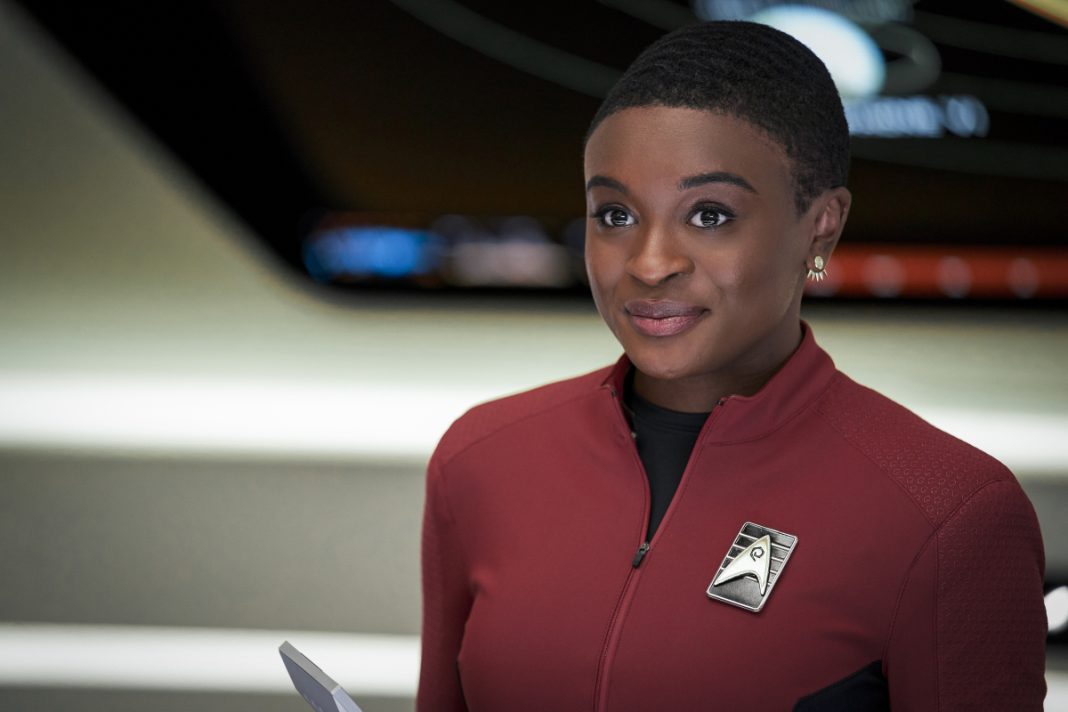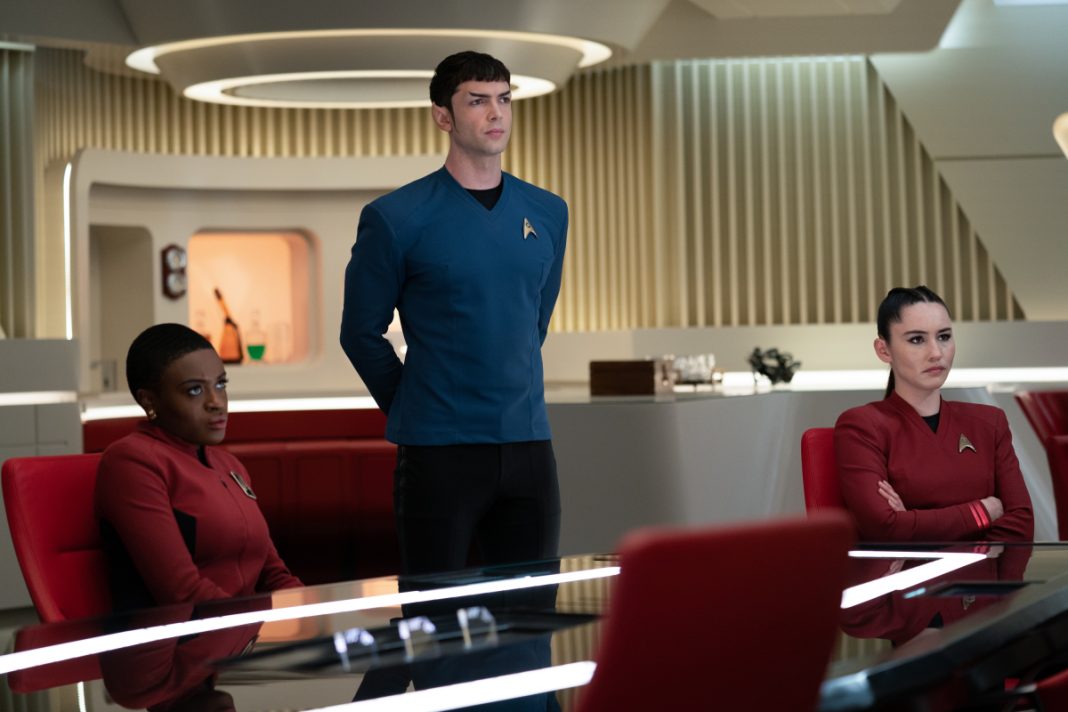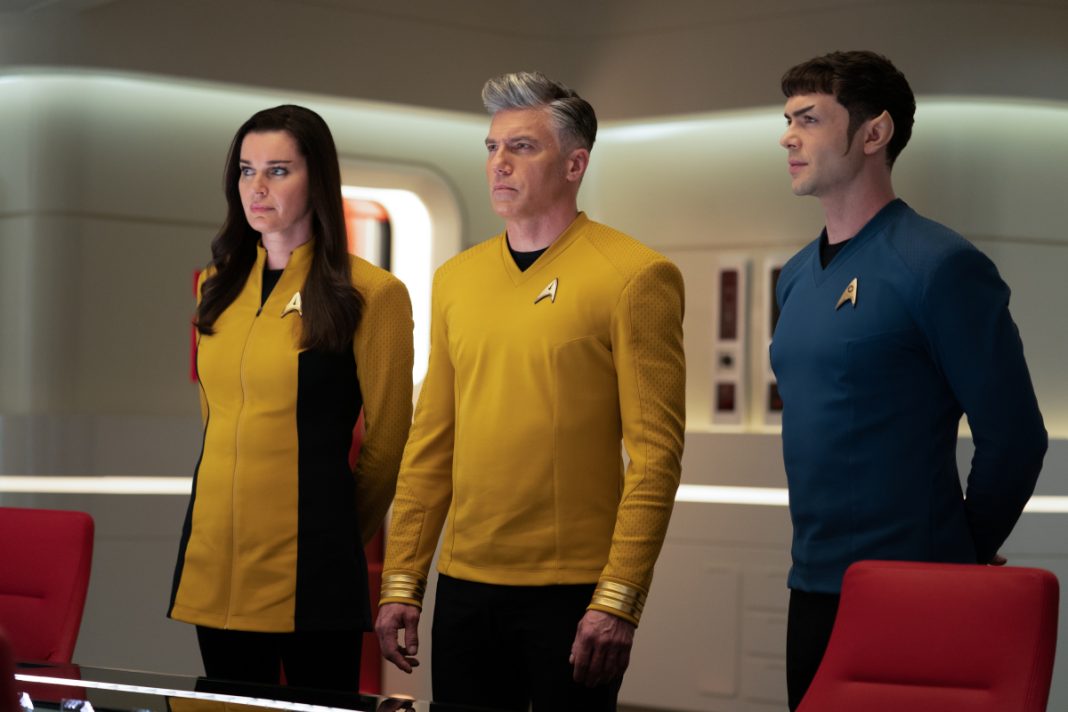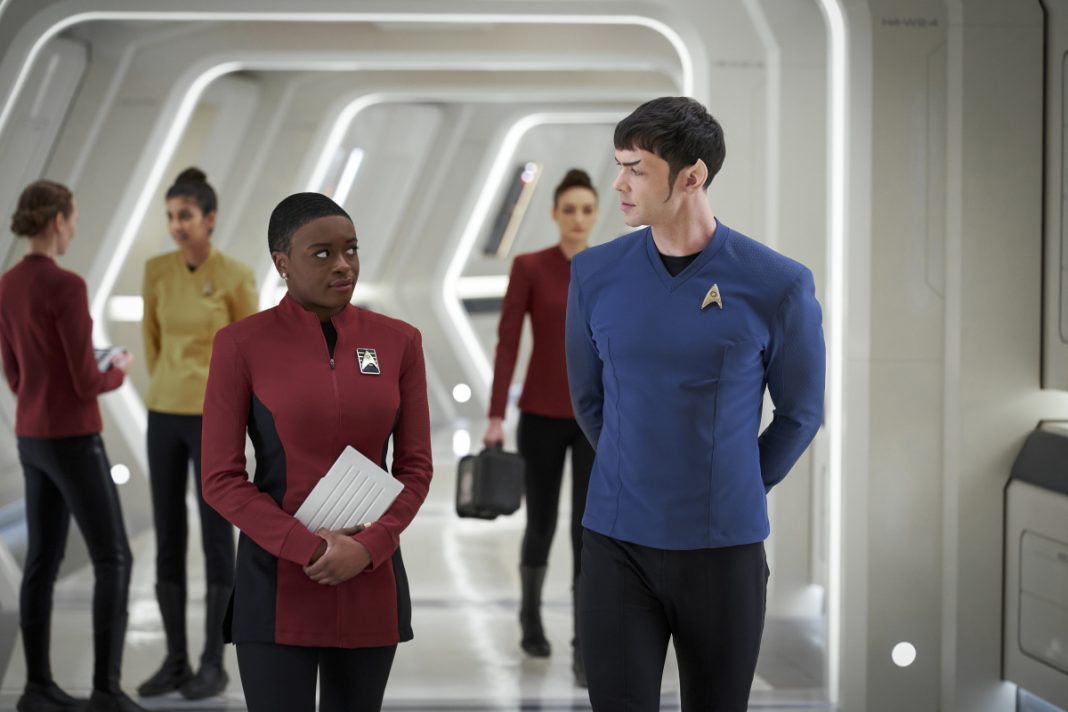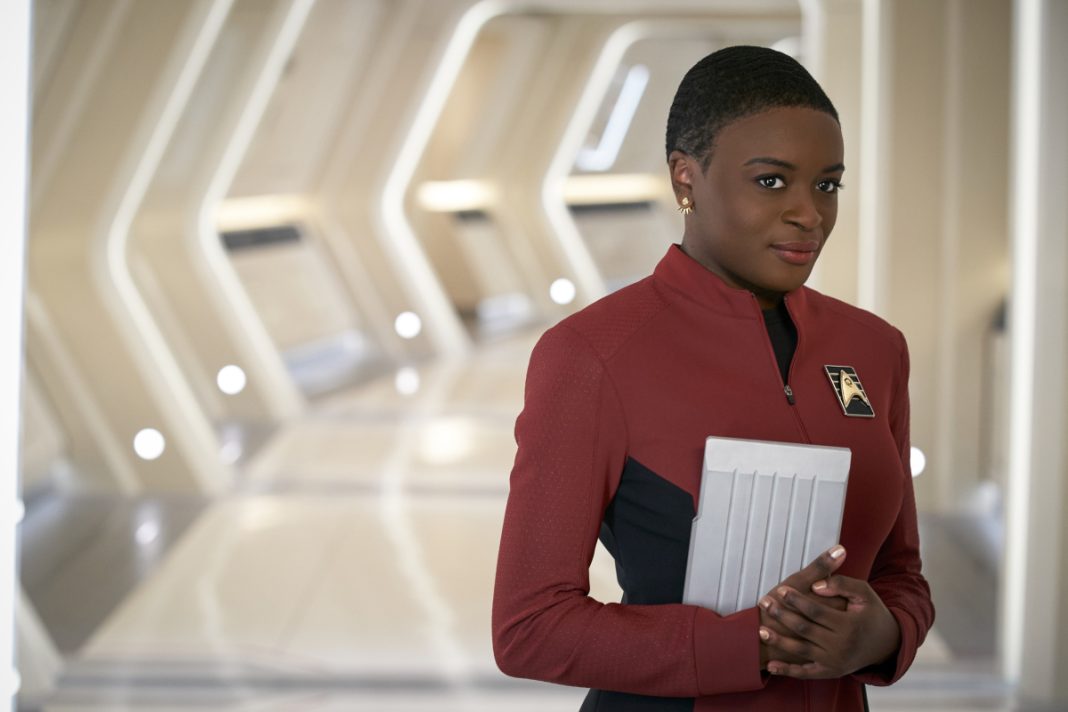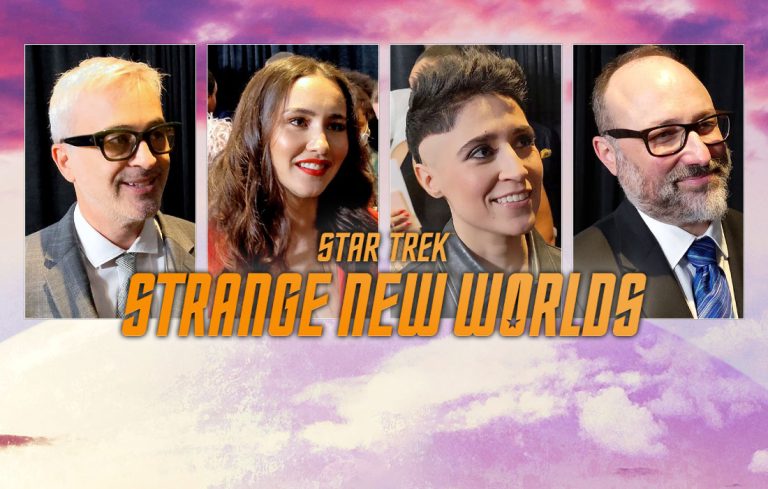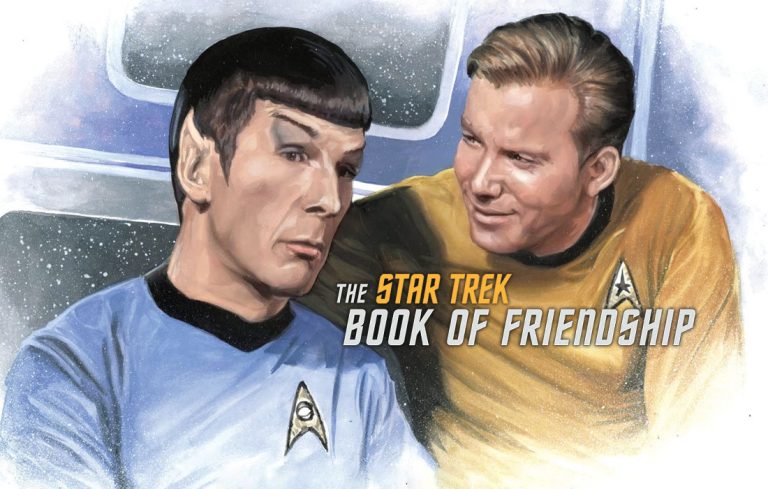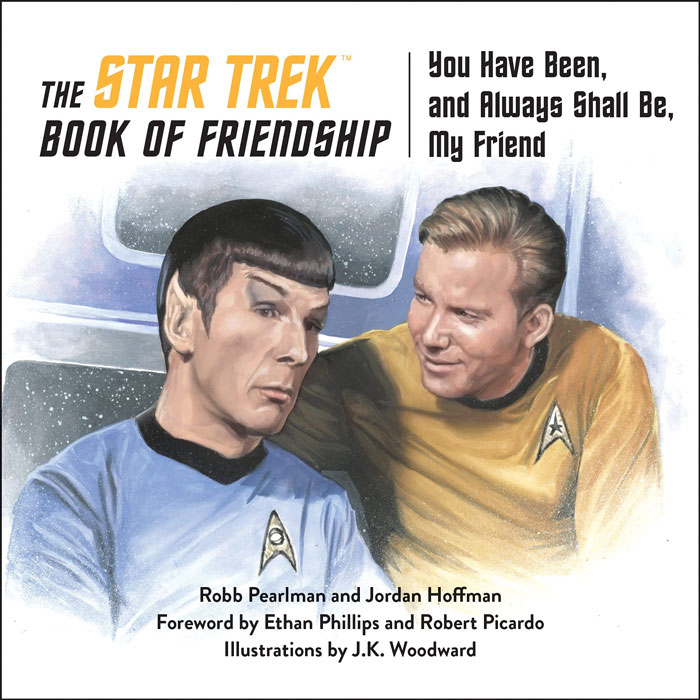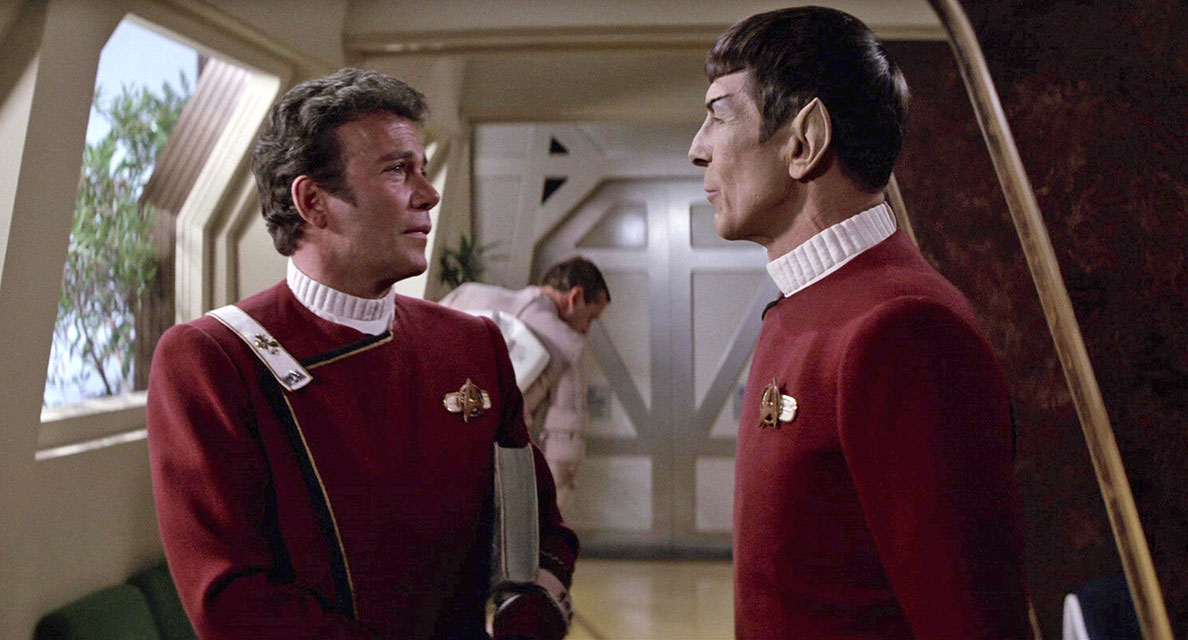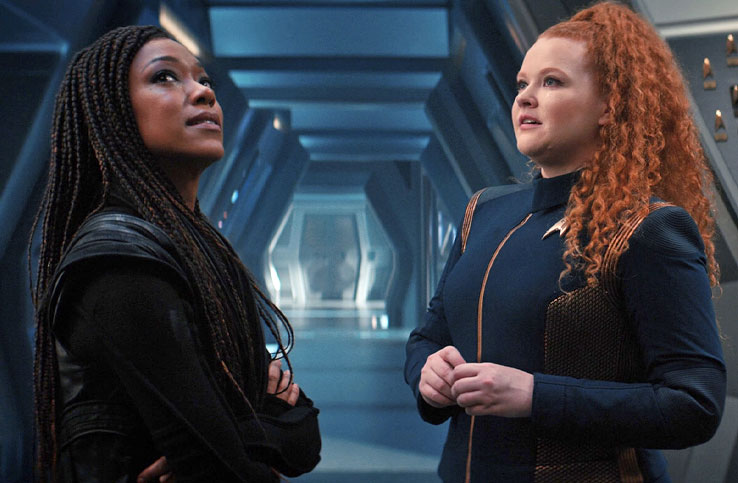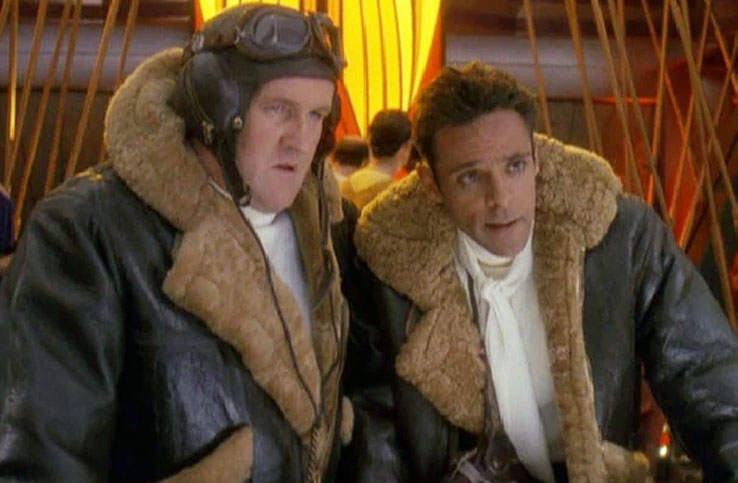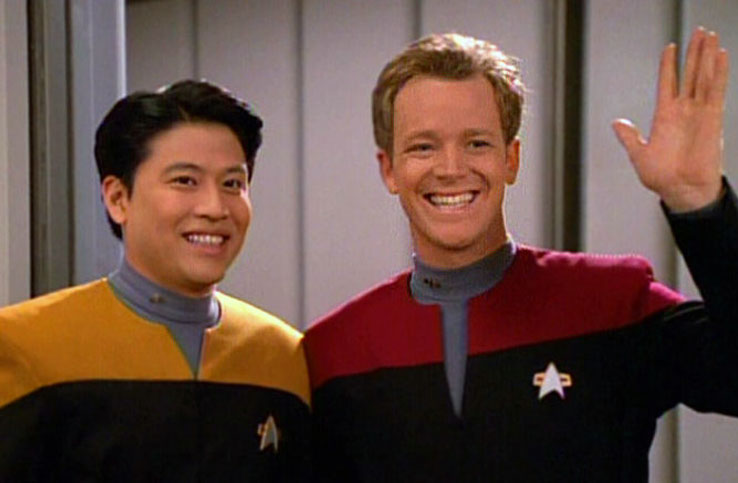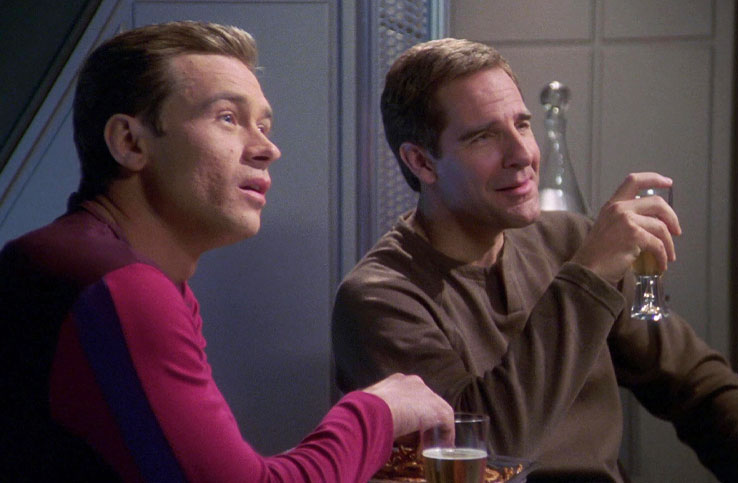“Ghosts of Illyria” is a perfectly enjoyable, engaging, and interesting medical mystery — the additions to Number One’s backstory and the lore of the universe are great — but it’s also tied into a confusing allegory for medical bigotry that seems oddly tacked onto the sides and end. It’s a fun episode, though, with Rebecca Romjin taking center stage in this first Una-focused story.
Enterprise is investigating a mysterious abandoning Illyrian colony on planet Hetemit IX, at the edge of the Federation space. The Illyrians are a pariah species to the UFP, vilified for their prodigious use of bioengineering and augmentation to improve their genetics — all of which goes against the Federation’s anti-eugenics ethics. With a standing Starfleet order to investigate Illyrian sites, the crew heads down to check out the planet.
They are, however, forced to leave in a hurry to avoid an ion storm, nearly losing most of the landing party to interference before Hemmer (Bruce Horak) can save them with a little engineering genius. It’s a nice setup for a mystery, with special cliché touches like a faulty transporter, and mysterious glowing dust attaching itself to a hapless ensign confirming the homage to the classic medical mystery episodes of decades past.
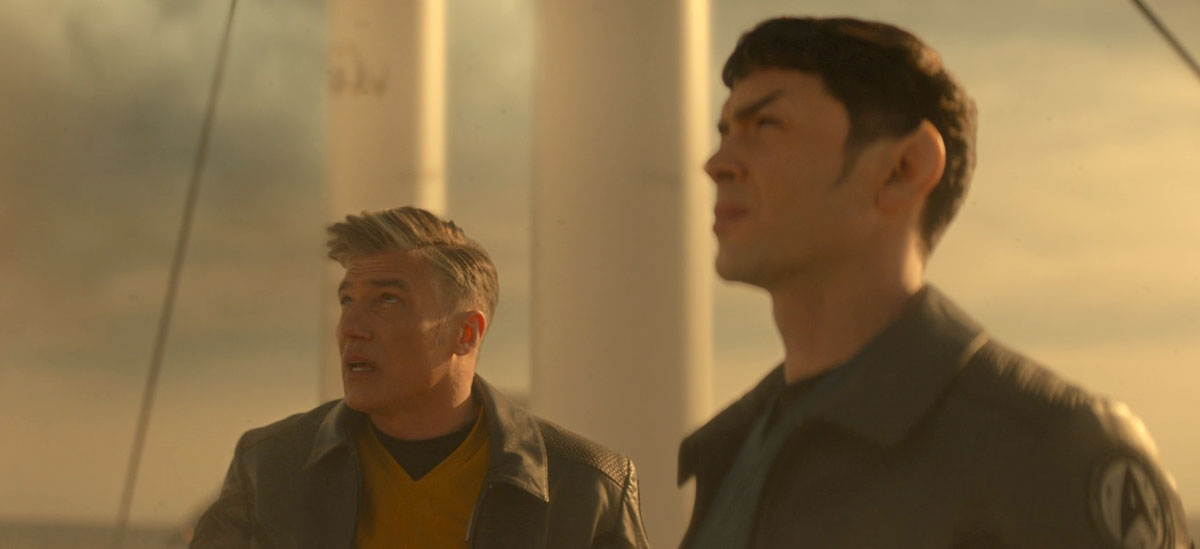
The storm ramps up before the full landing party can be recovered, leaving Captain Pike (Anson Mount) and Spock (Ethan Peck) on the planet’s surface as Una (Rebecca Romijn) takes command in the captain’s absence. While Pike and Spock run for cover, a new crisis emerges on the Enterprise: those who beamed back to the ship fall victim to an overwhelming addiction to light, first driving poor Ensign Lance (Daniel Gravelle) to smash his head through a wall lighting panel in desperation.
Even Una seems to fall victim to the mysterious ailment for a short time, until an energetic glow beings to shine from her body — seemingly curing the officer, but we’ll get back to that later — but putting her on edge as she’s called to sickbay for examination. Cleared for duty by Dr. M’Benga (Babs Olusanmokun), Una begins researching classified Illyrian science until La’an (Christina Chong) arrives and the pair discuss the security chief’s childhood issues about her ancestral relationship to Khan Noonien Singh.
The light addition soon begins to spread quickly around the ship, as La’an’s mild rant against Illyrian bioengineering trails off as the lieutenant begins to jam her face into a nearby desk lamp; it’s a slightly-unnerving moment that only science fiction can pull off successfully.
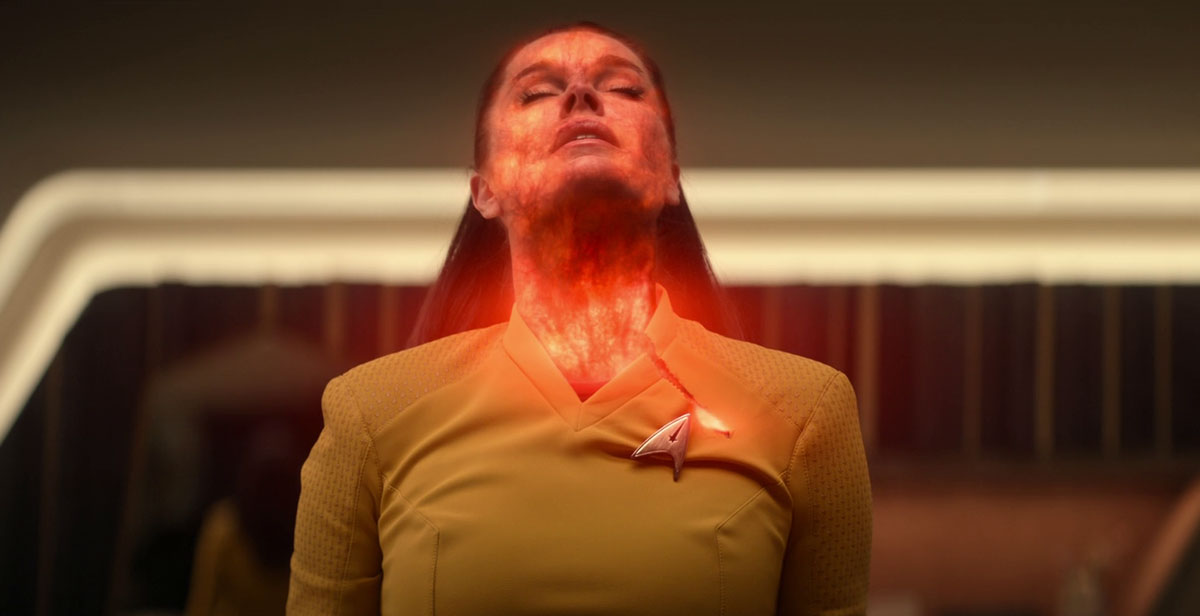
While things start to unravel up in orbit, Pike and Spock have found shelter in the abandoned colony’s library. Spock’s consultation of the records shows that these Illyrians wanted to join the Federation but were unfortunately wiped out as they tried to “de-engineer” themselves to get around the ban on genetic modification. As fascinating as this is, Pike and Spock are a little more distracted by the wailing light beasts that appear to be emerging from the storm in their direction.
Marooning Spock and Pike together was a fun B-plot, especially as we get to see them begin to get on each other’s nerves a little as they batten down the hatches. Stellar as it was on Discovery, Mount and Peck’s chemistry only gets better with every episode of Strange New Worlds, and it excels here as the pair banter over their fate — and that of the colonists.
Back on the Enterprise, Una does some detective work after Uhura (Celia Rose Gooding) finds her bunkmates huddled around a holographic star — and finds that the virus spreads through light waves. After that incident and the results of Nurse Chapel’s (Jess Bush) contact-tracing report, M’Benga initiates a full lockdown. (Deja vu, anyone?)
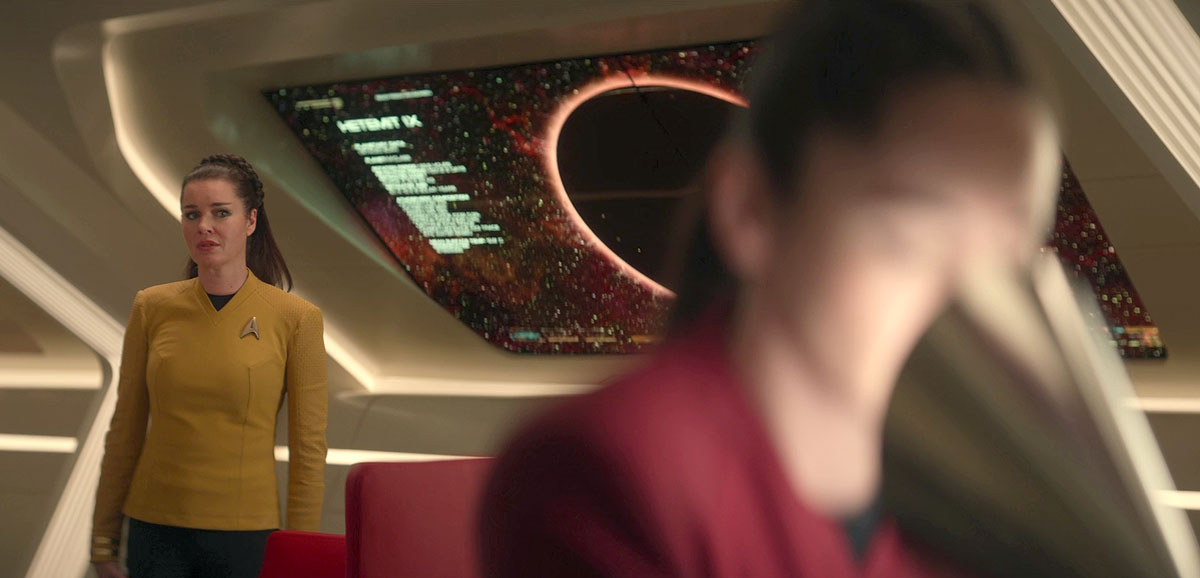
Number One is, however, still holding back — throughout the episode, we can constantly tell she’s hiding something, and the hints we see of her researching Illyrian healing augmentation matching the strange body magic that healed her gives us a fair idea of what the twist might be before it comes.
Rebecca Romijn, however, makes us earn that twist, and we get a clear sense of her internal conflict and fear without a single word being uttered on the subject. Even her apprehension at the short term solution — shutting off all the lights — seems to be qualified by whatever she is holding back. Romjin sells it all beautifully.
Meanwhile, Pike and Spock have barricaded themselves into prevent the light monsters from getting to them. Spock’s attempt to “arm himself with knowledge” is futile, however, when the light beasts break through the doors… and proceed to protect him and Pike from being injured by the ion storm. It’s an unexpected swerve, perhaps leaning on the benevolent energy beings we have seen in prior shows (such as the Companion).
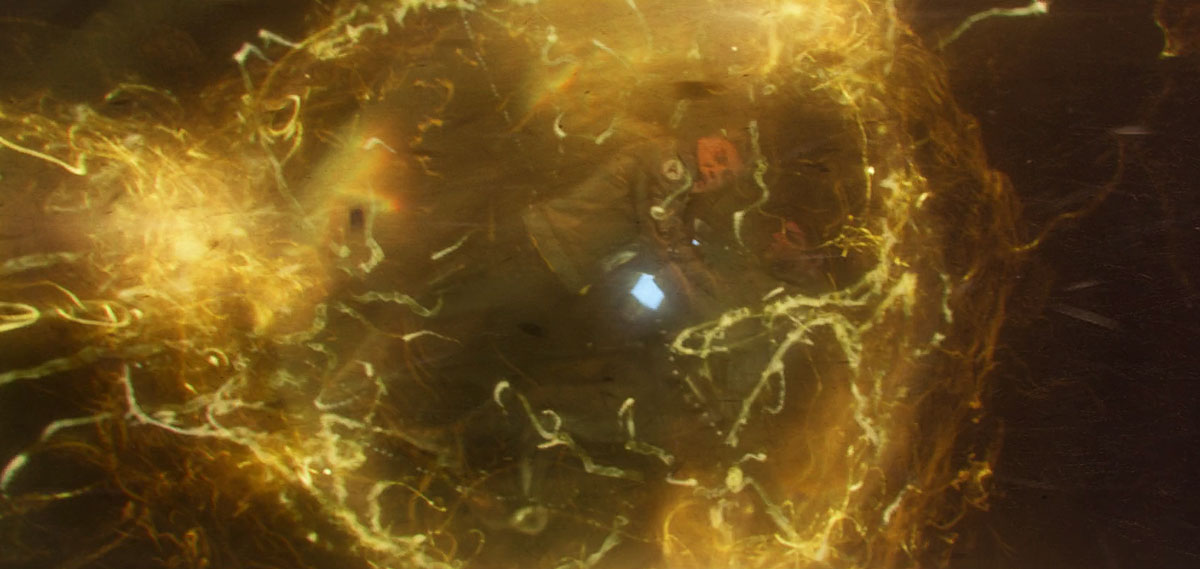
But with Hemmer succumbing to the virus and M’Benga soon after, Una reveals the reason she managed to survive unscathed: she’s an Illyrian herself, engineered to resist any infection. Her heritage, which should prevent her from serving in Starfleet at all, may now hold the key to saving the day. This confirmation of a long-standing ‘beta canon’ backstory for Una, if in a slightly different form to its appearance in Vulcan’s Glory, is a very nice addition to the narrative.
It doesn’t appear to be much help, though, as her augmented immune system cannot help the crew. We do, however, get a nice little speech from Doctor M’Benga about the pointlessness of bigotry, before Una must run off the solve the last, big crisis: La’an has escaped, and nearly creates a warp core breach while chasing that light-addicted high.
Is it a bit nuts to go straight to the warp core when a desk lamp could do instead? Yes. Is it fitting with the usual absurdity of strange viruses in Star Trek? Also yes! At the very least, it does give us a great fight scene, backdropped by the surging warp drive and enhanced by La’an’s rather vicious reactions to Una’s genetic heritage.
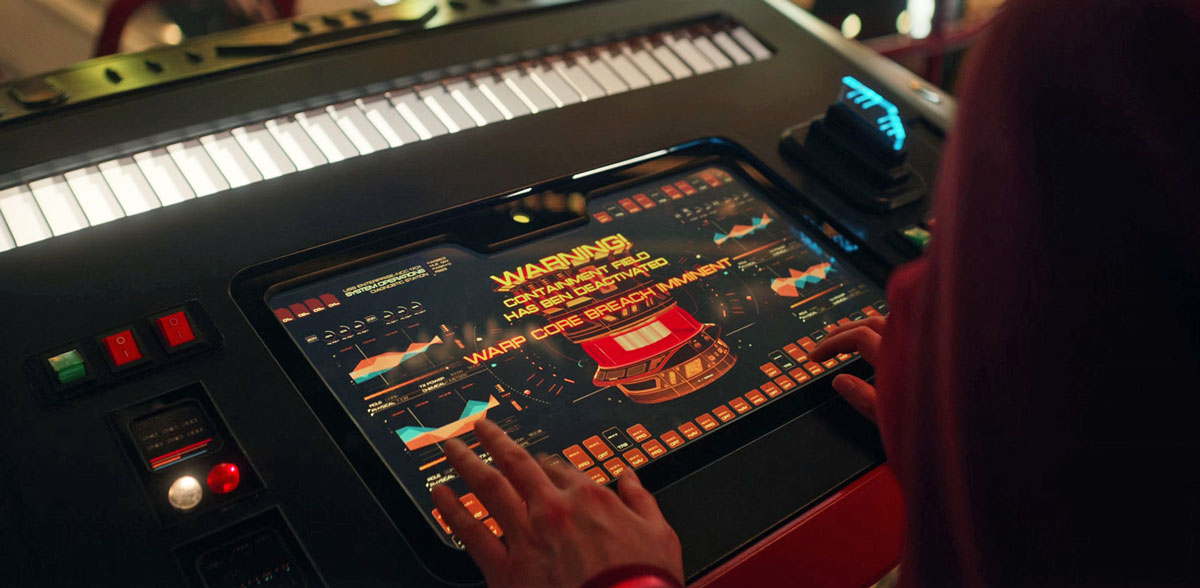
Her close contact with La’an requires Una’s body to once again flare up and fight off infection, but this time that healing effect spills over to the security chief — a secondary healing process that finally gives Chapel something to use in creating a shipwide cure, giving the nurse another opportunity to show off her genetic skillset (following the alien disguises she created back in the season premiere).
Number One’s augmented genes have saved the ship, even if they have done damage to her relationship with La’an. Their make-up conversation in the still-unnamed ship’s dining hall is brief and blunt, revealing a little more about the security chief’s past, and how she was bullied for her ancestry. We also get some sense of how difficult Una’s past has been, and the difficulties of hiding her past from authorities, and from her friends.
She knows why the Illyrians have a different ethical code — how their justifications can be understood to be benevolent, and at odds with the supremacist agenda of Khan and his Augments — but she is still afraid of how Federation society views her. I think it works, really; we know the danger augments are from both the Original Series and in Enterprise, but pointing out their flaws may be unique. As we saw in Deep Space Nine, the UFP’s fear of them blinds them to even more dangerous acts of bigotry.
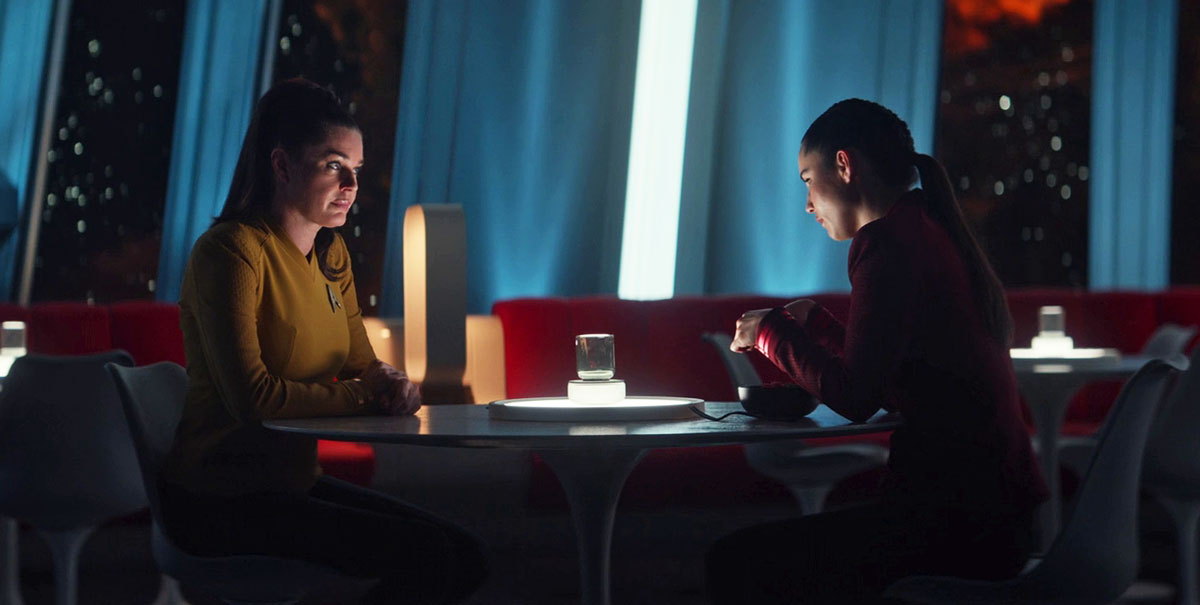
This point about conviction and belief is hammered home by Spock’s conclusion about the Illyrian colonists, whose own good-faith act likely led to their own demise. They were doomed by their principles and chose to pass on with their integrity intact, and this self-belief in the face of a hopeless situation — something that is very clearly becoming a consistent theme in Strange New Worlds — rings home to Captain Pike.
With her true heritage revealed, Una attempts to surrender herself to Starfleet’s judgment. Pike’s refusal to accept her resignation is a good scene, if a bit by the numbers; to him, Una is the exception, as much a counter to Starfleet’s idea of Illyrians as the colonists were — and that is worth protecting her from regulations.
Even though her position is safe aboard the Enterprise, this view doesn’t sit well with Una she’s deeply uncomfortable with her heroism being the thing that saves her; in a strong callout of the politics of the model minority belief; Una longs for the day when she doesn’t have to worry about being thought of as “one of the good ones” and Illyrians can simply just be accepted for who they are.
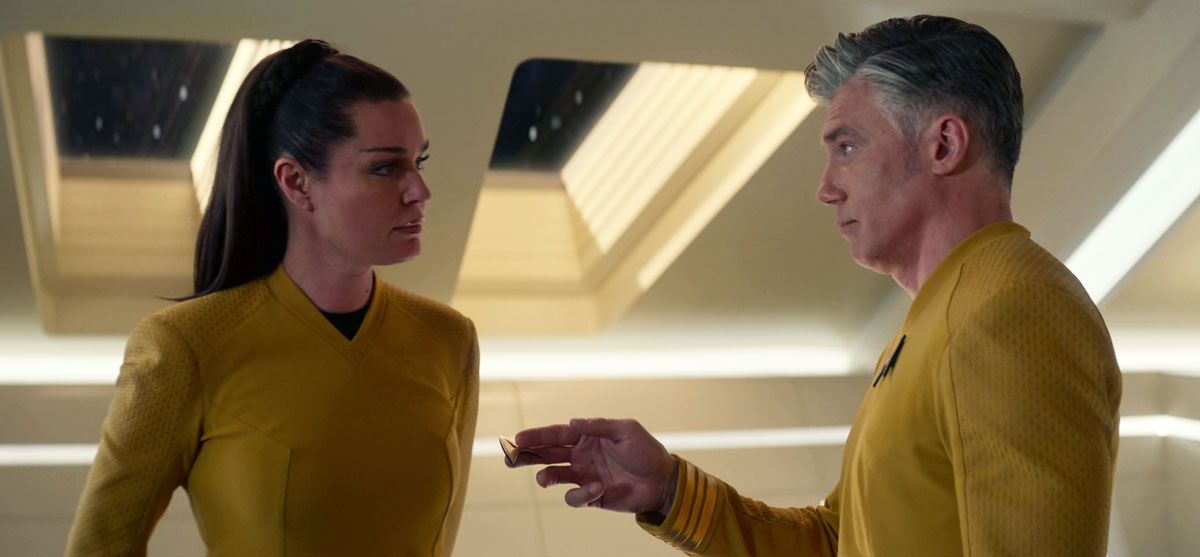
Considering the (possible) allegory between Illyrian affliction and Sinophobic reactions to the spread of COVID-19, an active call out of exceptionalism like this was refreshing, even if it felt a little tacked on right at the end of the episode. On the other hand, it does point towards Una’s heritage and its conflict with Starfleet regulations and Federation bigotries becoming an ongoing plot point in the future.
But Una’s place in Starfleet isn’t the only open question the episode leaves us with, as we learn that M’Benga’s medical transporter systems allowed the ‘light virus’ to get aboard the ship in the first place. It seems that the good doctor wouldn’t allow anyone to modify its systems during the last visit to Spacedock… because he’s keeping his daughter in transporter stasis within its pattern buffer!
Clearly the beginning of a long-term story, this certainly gives us all a deeper insight into the extreme efforts M’Benga is willing to employ to save his family, but let’s hope that — beyond the ethical and moral quandaries that emerge from freezing a kid in a transporter — the writers don’t forget there’s a kid in there the next time there’s a shipwide disaster.
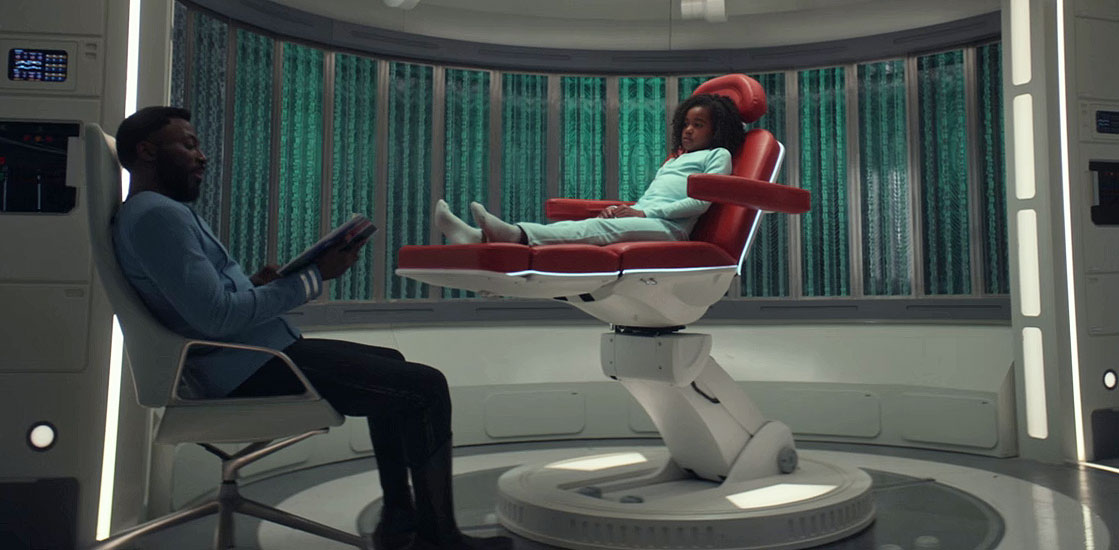
CAMP NONSENSE OF THE WEEK
This week’s award must go to the Light Virus itself, just for the classic Trek weirdness of people sticking their faces and hands into light fittings, holographic suns, planetary mantle and, um, an impending warp core breach.
OBSERVATION LOUNGE
- This episode takes begins on Stardate 1224.3.
- Ontario Place serves as the real-life filming location for the abandoned Illyrian colony.
- In a sly nod to the universe-crossing mishap in “Mirror, Mirror,” transporter chief Kyle worries “If we try to transport [through an ion storm], who knows what we’d get back!”
- An Illyrian scroll archive prop was showcased at the Strange New Worlds exhibit at the Mission Chicago convention.
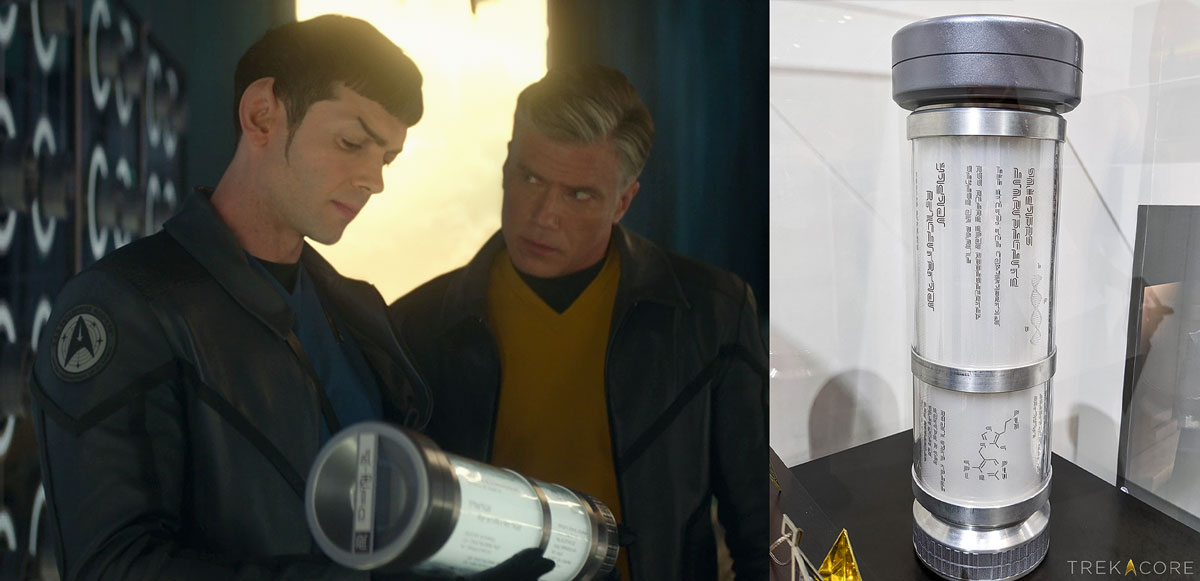
- Una’s manicure features dark blue nail polish with a silver inverted V design.
- Una’s quarters are decorated in a minimalist style, with a few tasteful decorations and a highly-organized vanity shelf in her bedroom.
- Una’s species, the genetically-engineered Illyrians, originated in classic Star Trek tie-in novels including Vulcan’s Glory, Child of Two Worlds, and the Discovery novel Desperate Hours.
- Illyrians were first encountered on-screen in “Damage,” where the crew of the Illyrian vessel in that episode looked quite different. It’s possible this might later be explained away as a genetic difference — or it’s possible the Enterprise-era species just has a similar-sounding name.
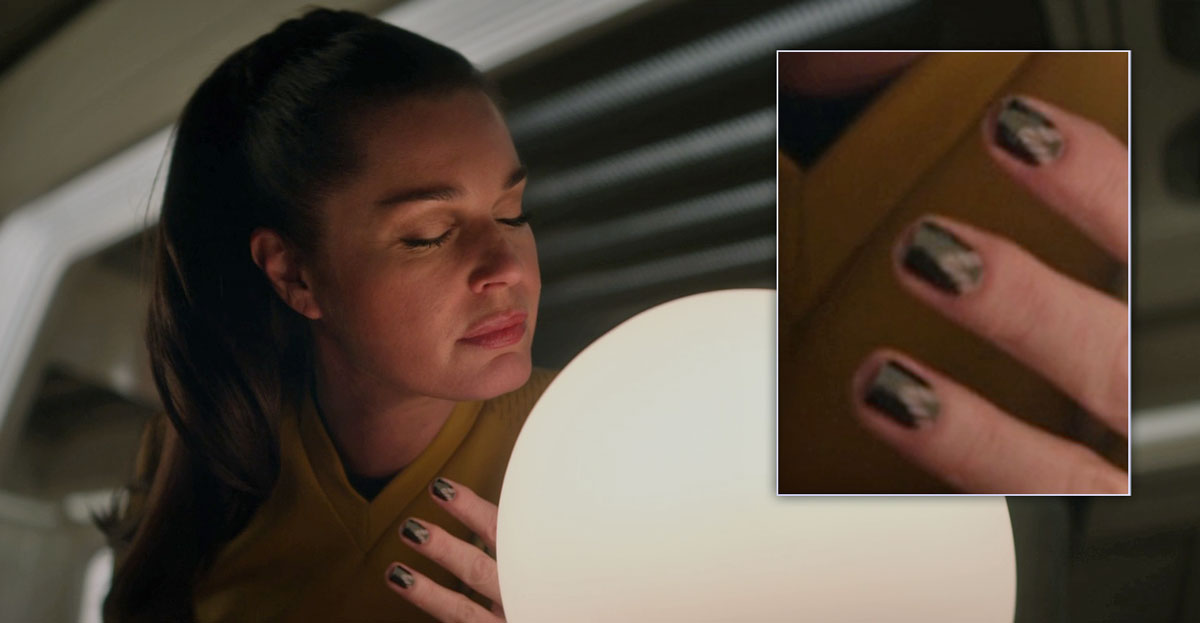
- La’an spits the derogatory term “Augment” at Una after learning Number One is an Illyrian (the same slur used against her as a child thanks to her Khan heritage); this term for genetically-engineer beings came into use in the Enterprise three-part Arik Soong storyline.
- La’an continues to use her nickname for Una (“Chief”); we’ll likely learn more about their backstory in a future episode.
- It’s clear that La’an’s heritage as a descendent of Khan isn’t a secret; how that will play into Spock’s future encounter with the genetic superman in “Space Seed” remains to be seen.
- The Federation’s ban on genetic engineering extends well beyond Earth, it seems, as Illyrians are forbidden to join the Federation due to their society’s use of gene modification science.
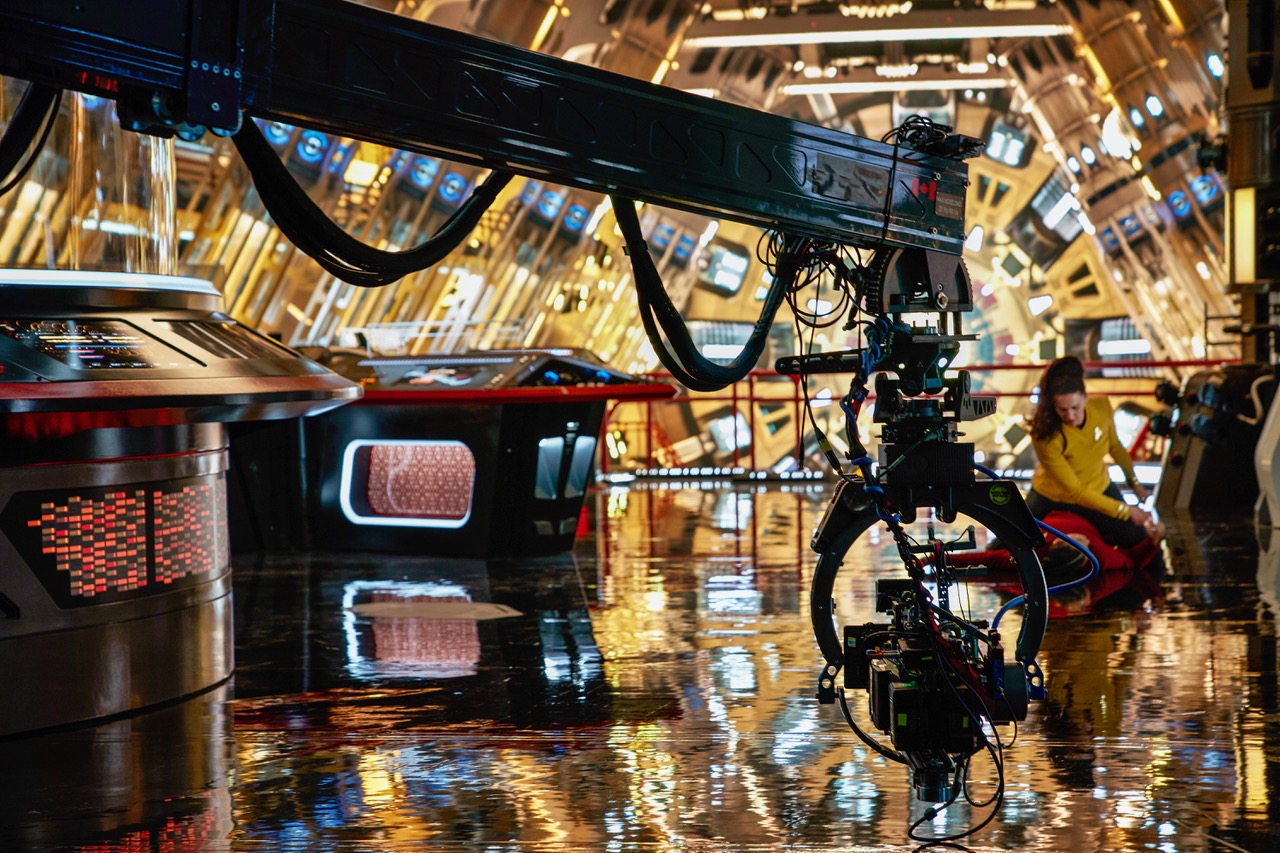
- Uhura shares her quarters with two other low-ranking crewmates, but her bunk features a privacy shutter so she can sleep undisturbed… something the ensigns aboard the USS Cerritos would surely envy!
- In “Dr. Bashir, I Presume,” Chief O’Brien tells Dr. Bashir that he doesn’t “think there’s been a case dealing with [a genetically-engineered Starfleet officer] in a hundred years.” That episode takes place 114 years after “Ghosts of Illyria.”
- M’Benga holds his hand scanner seemingly backwards while examining both Una and La’an in sickbay (with the rotating internal mechanism pointed towards himself). The “reverse” end of the scanner features a lighting element, so it’s possible this end of the scanner has a different function from the rotating side.
- M’Benga’s blood sample hypospray is similar in design to the one used to screen for Changeling infiltrators in Deep Space Nine.
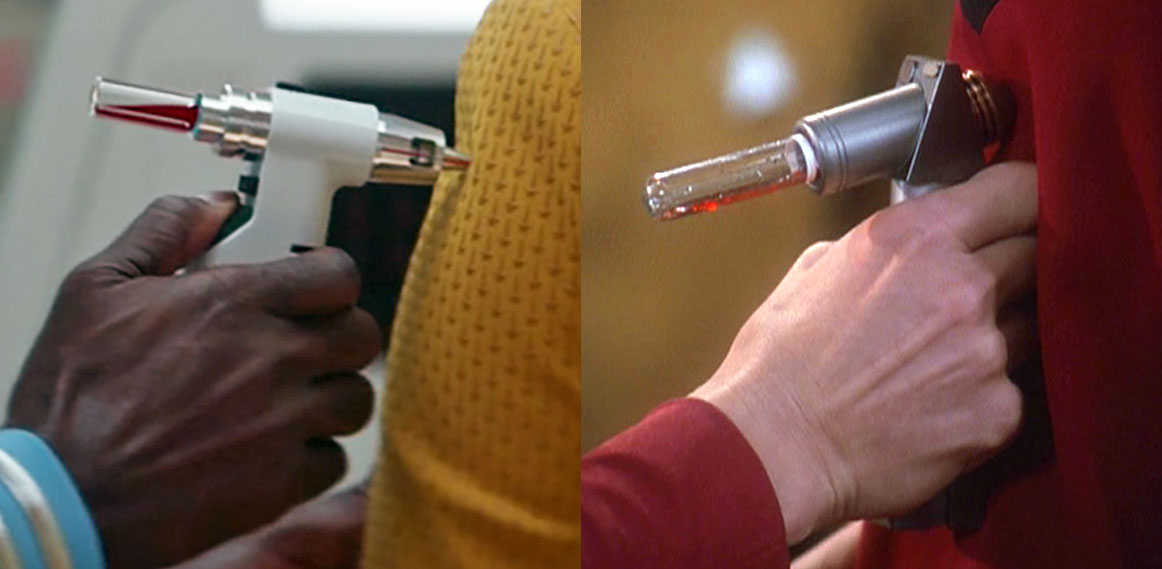
- M’Benga describes a cultural aversion to mixing “human and Vulcan blood,” an idea which first (chronologically speaking) came to a head in the Star Trek: Enterprise “Demons” / “Terra Prime” two-parter.
- Normally closed off, M’Benga’s sickbay has a second-story auxiliary level, available to expand capacity in emergency situations.
- The transporter-buffer stasis process is apparently safe for long-term use, as long as the subject is occasionally rematerialized — perhaps explaining why poor Matt Franklin never made it out of the Jenolan’s buffers in “Relics.”
- M’Benga’s daughter, Rukiya (Sage Arrindell) is being held in transporter stasis to slow the progression of a disease called “cygnokemia.”
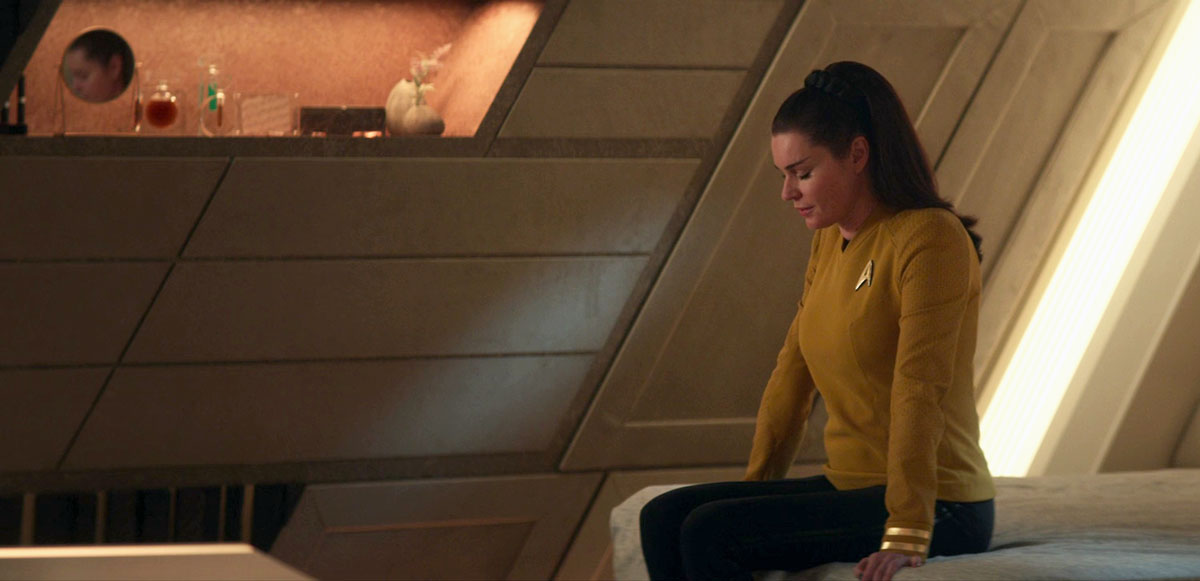
I honestly wanted a bit more from “Ghosts of Illyria.” The introduction of the Illyrians themselves — both through the legacy of the colonists, and Una’s heritage — was a great addition to the Star Trek universe, with the questions it raises about medical bigotry and longstanding societal fear, and I just wish that they hadn’t felt tacked on to the end of the episode and had been weaved deeper into the narrative.
While we got some taste of La’an’s anti-Augment, it would have hit home harder had those preconceptions about Illyrians been more thoroughly laced within the narrative. On the other hand, this neat, fun, and exciting medical mystery will serve — hopefully — as a jump-off point to explore both Una and M’Benga’s characters in the future.
![]()
Star Trek: Strange New Worlds returns with “Memento Mori” on Thursday, May 26 on Paramount+ in the United States, Australia, Latin America, and the Nordics, as well as on CTV Sci Fi Channel in Canada.
The series will arrive to the UK and Ireland on Paramount+ on June 22; additional international distribution has not yet been announced.

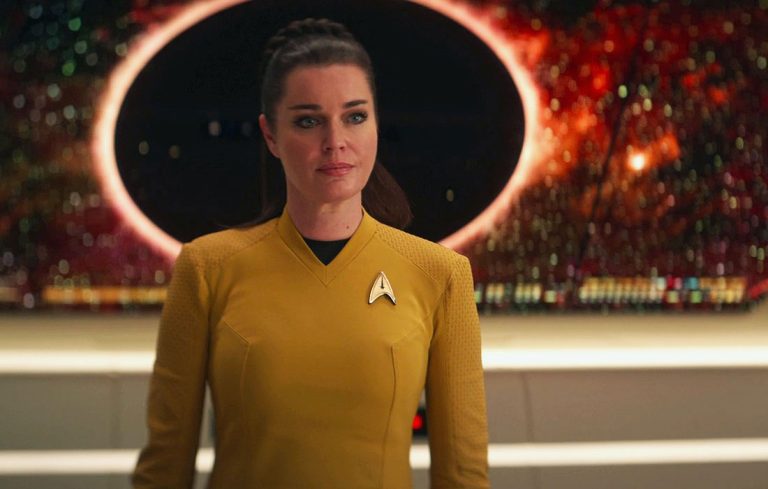
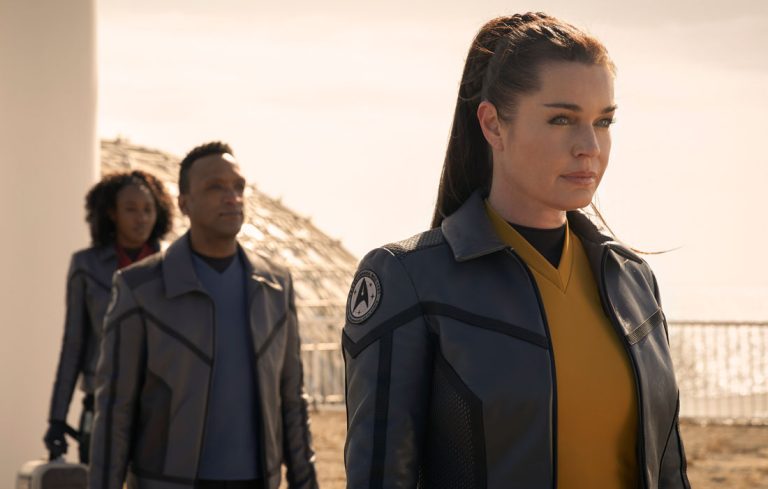

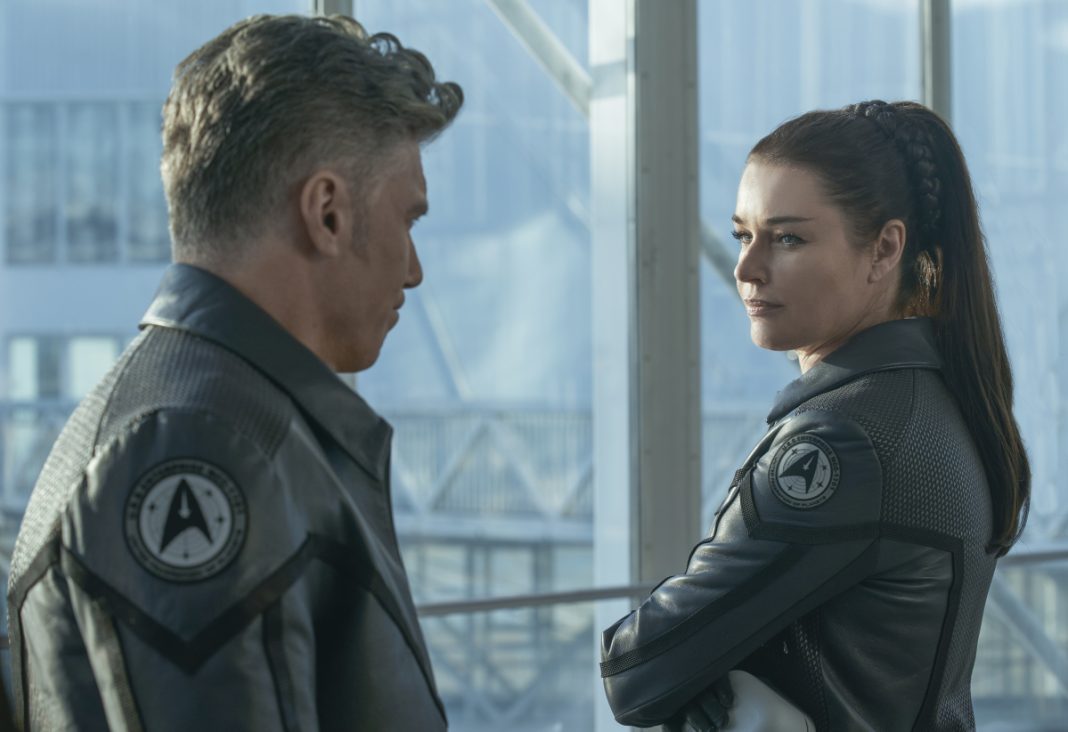

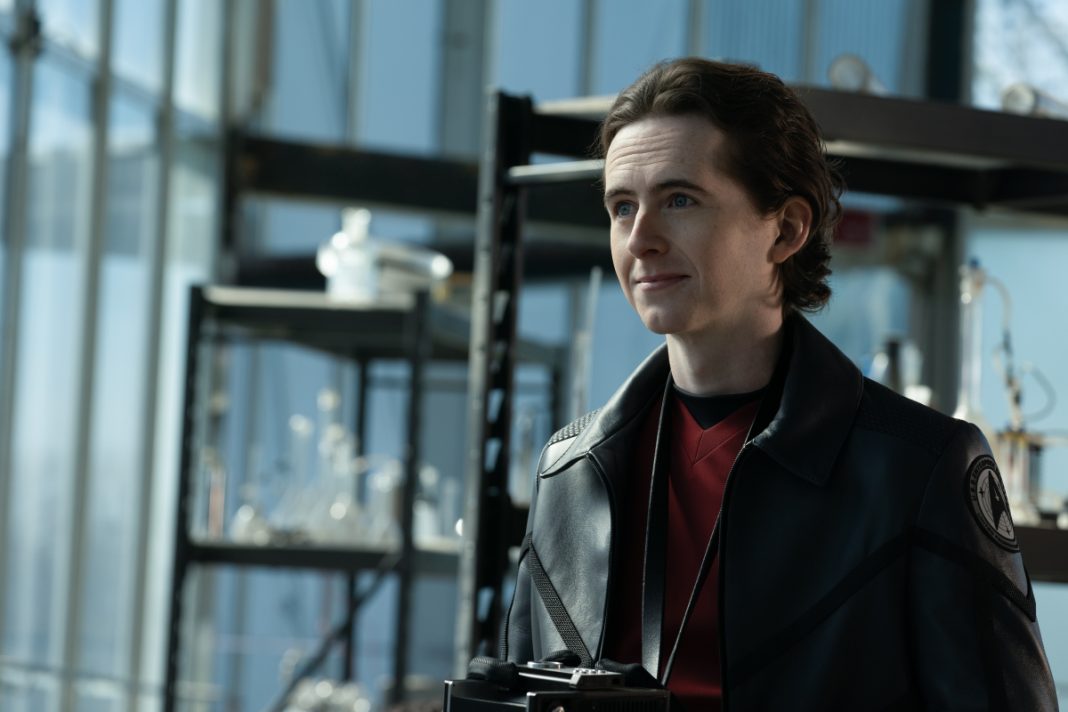
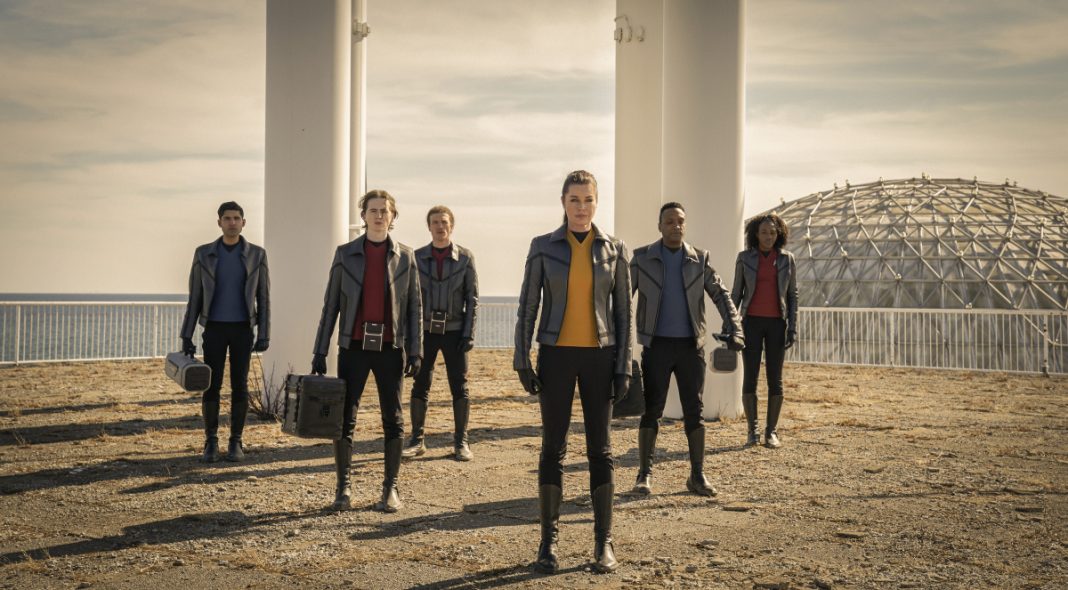
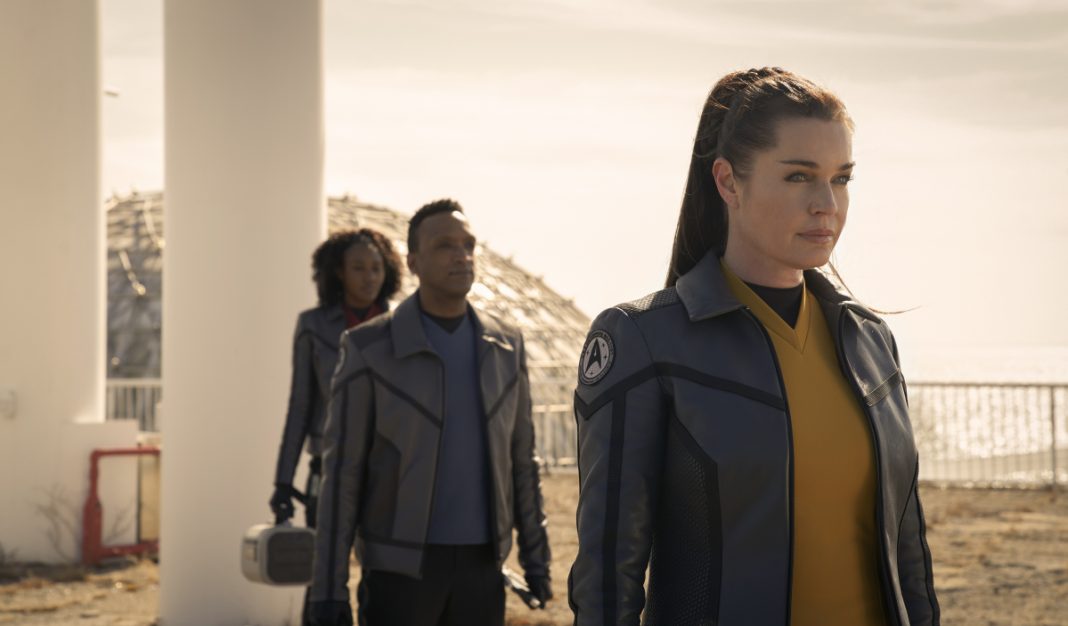
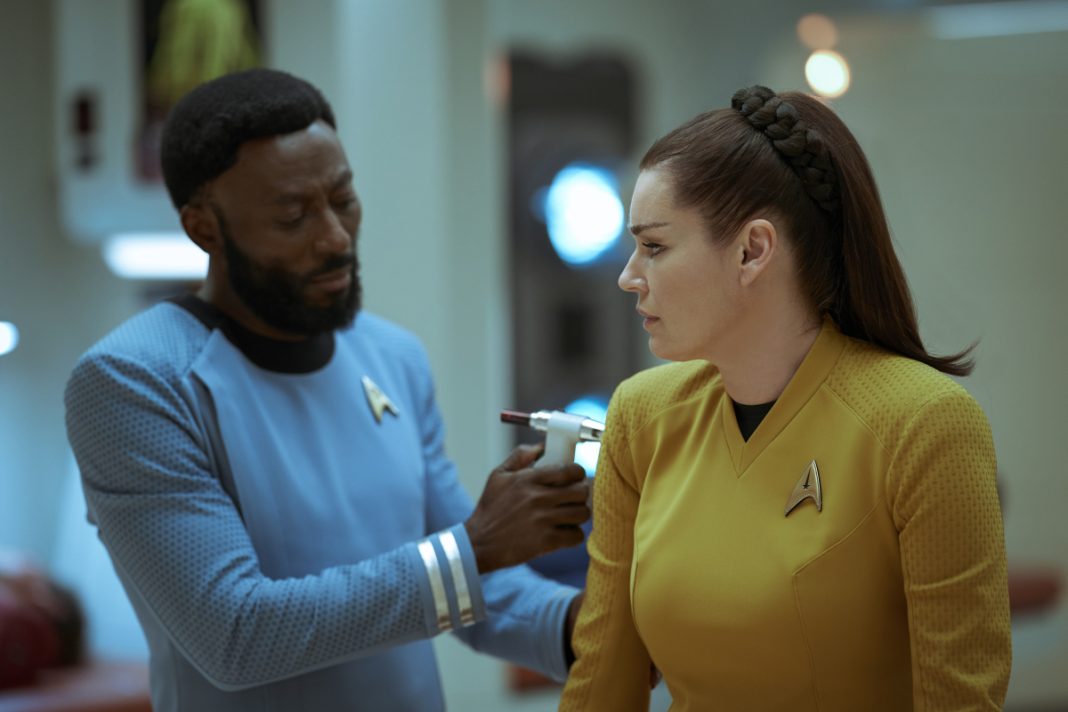
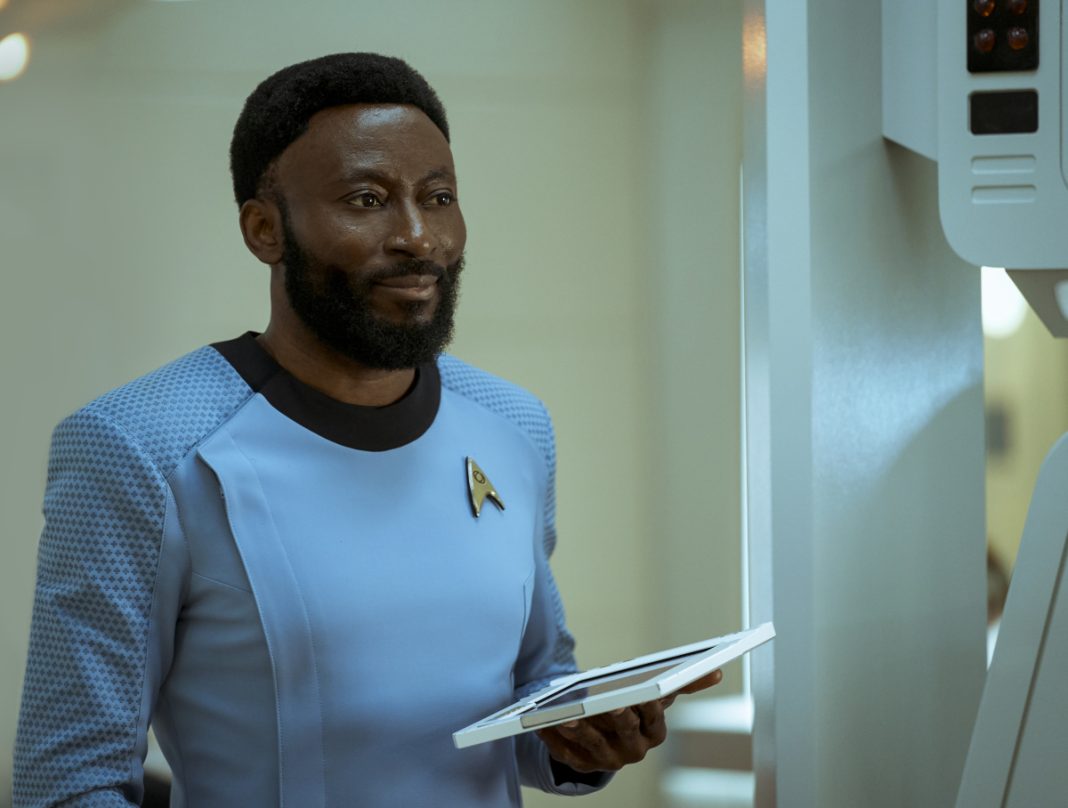
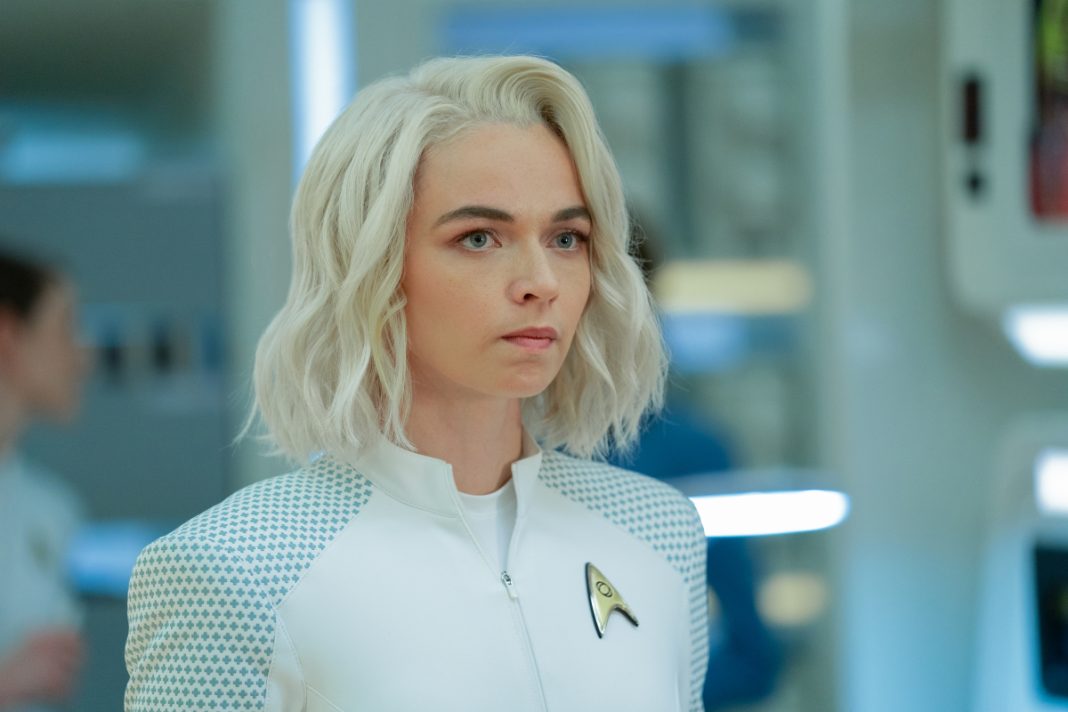
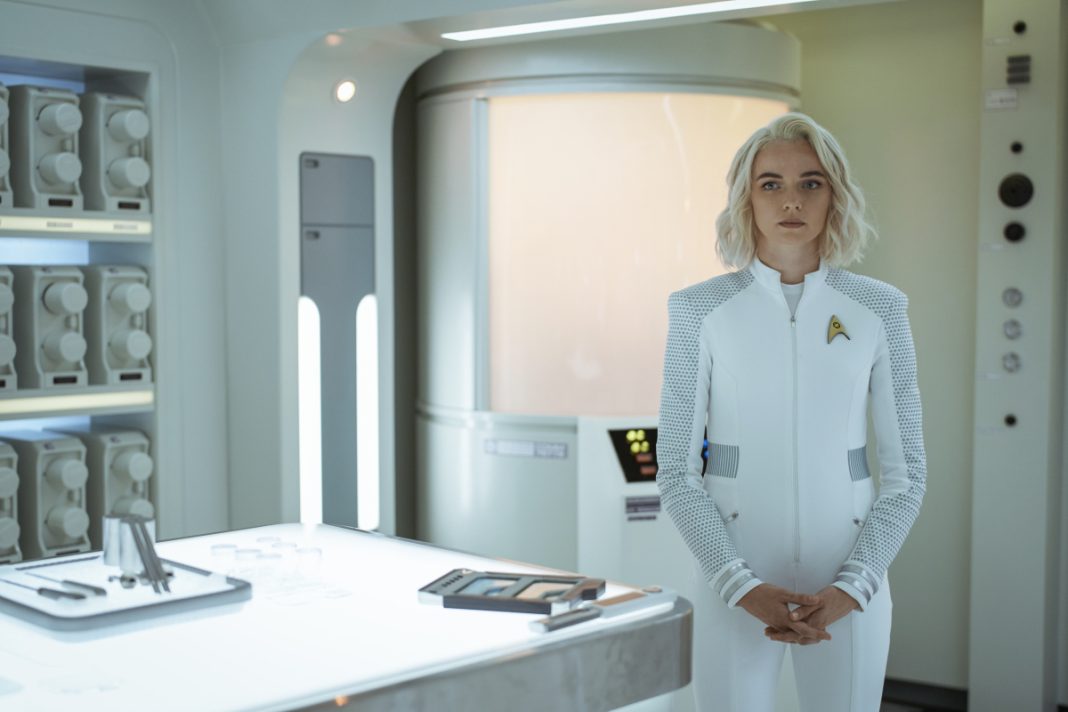
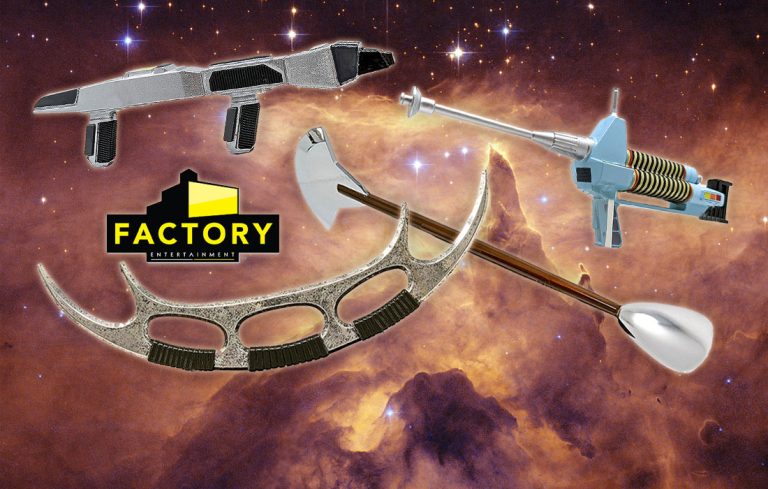
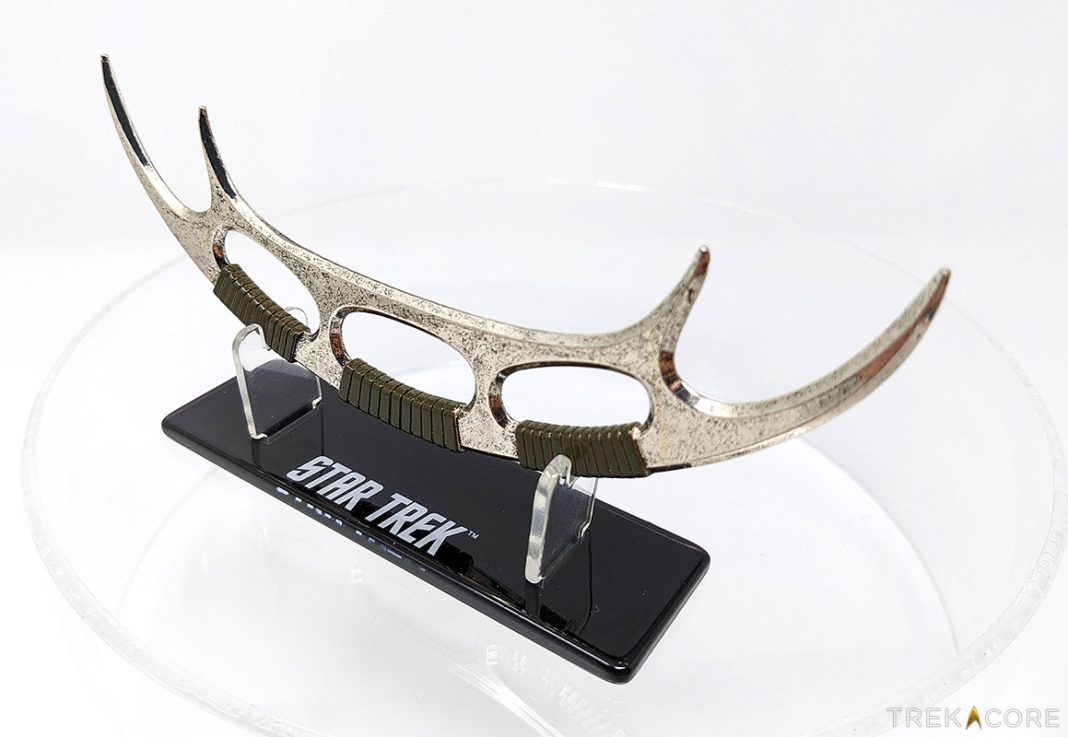

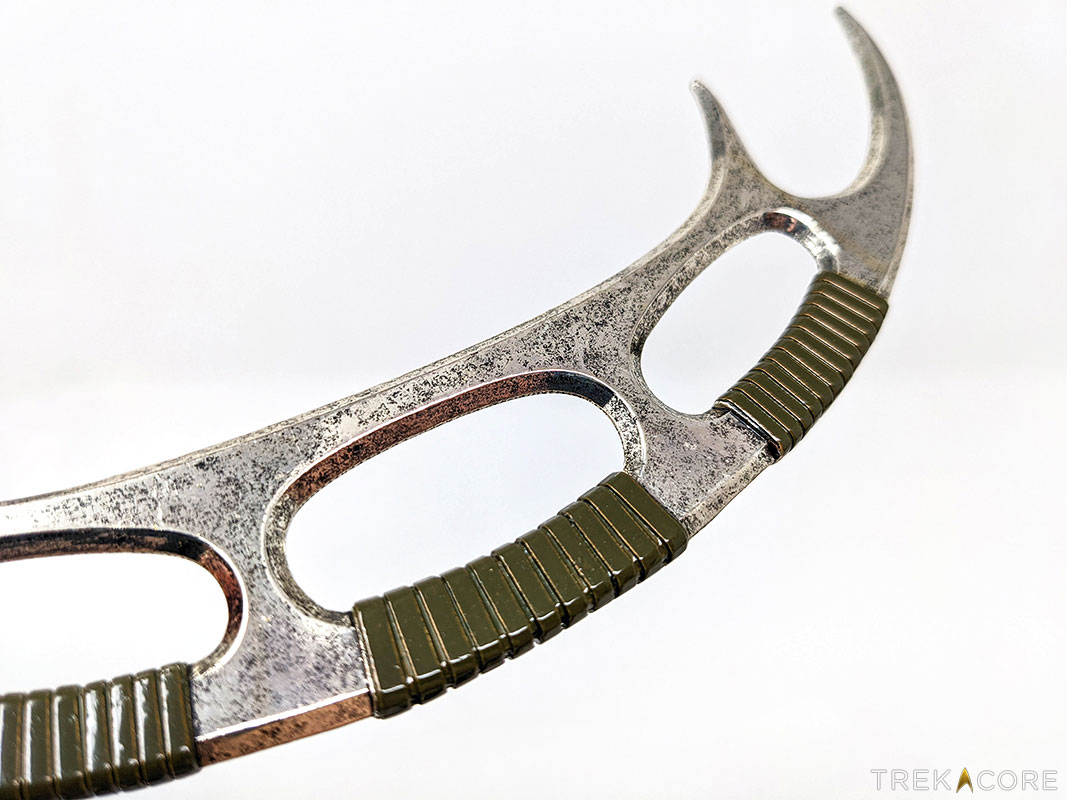
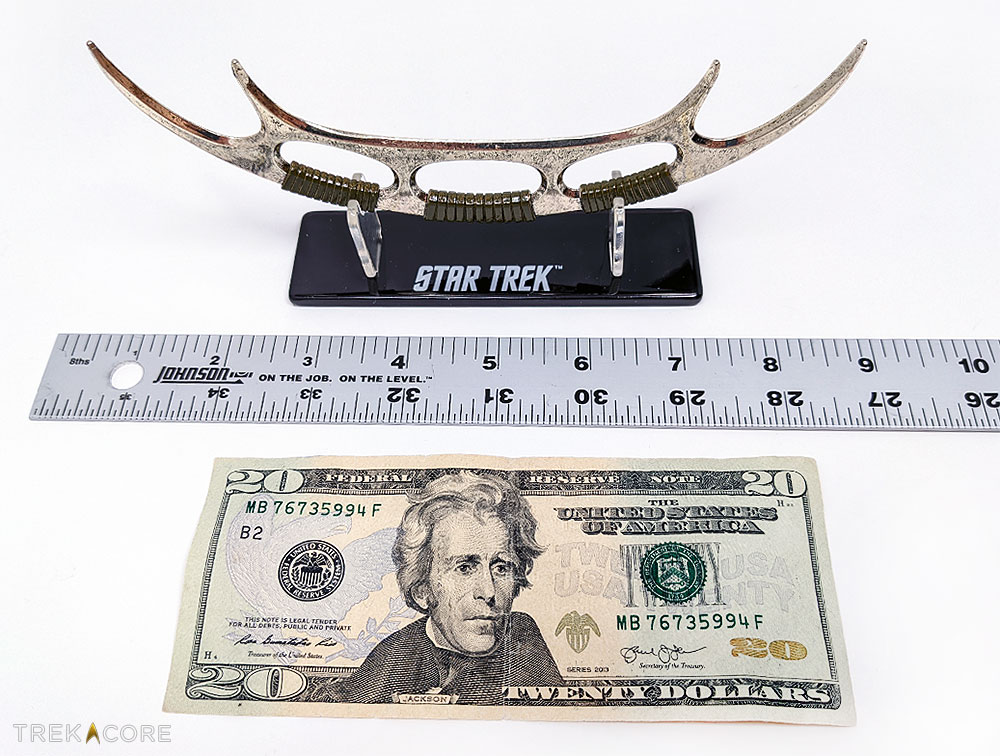
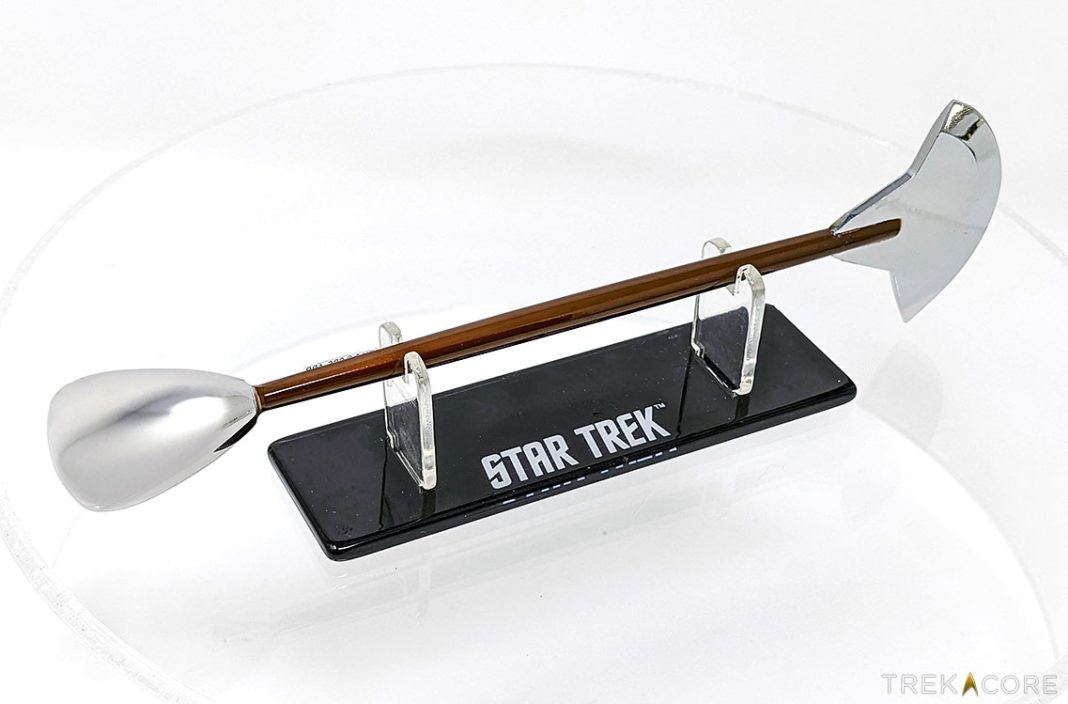
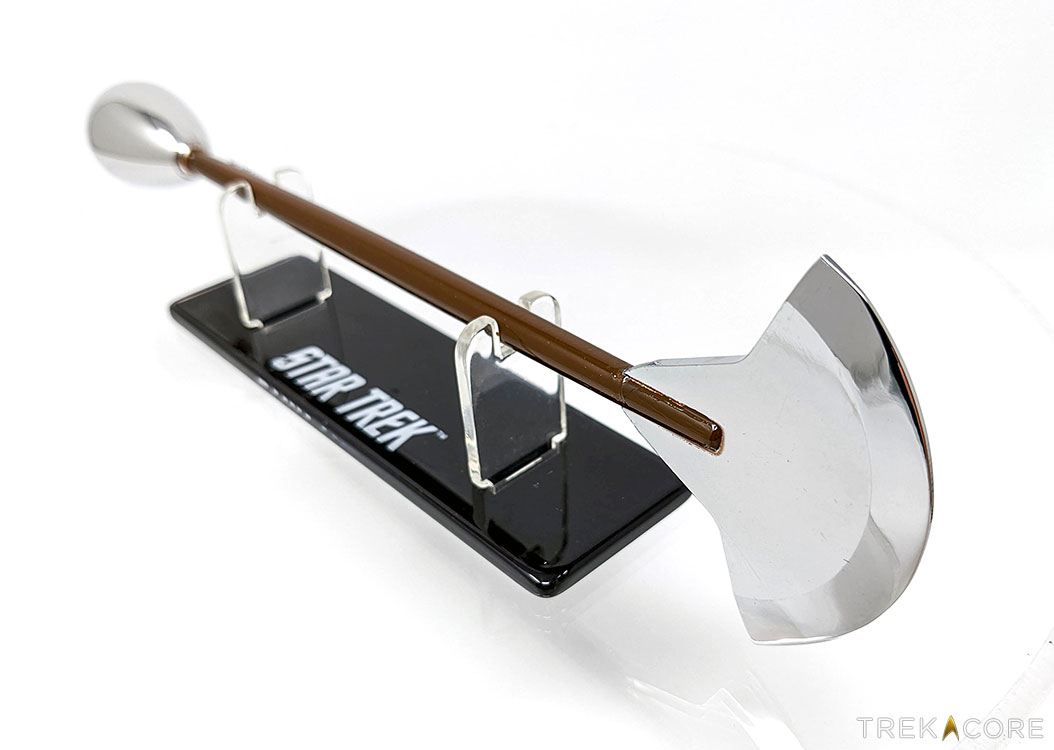
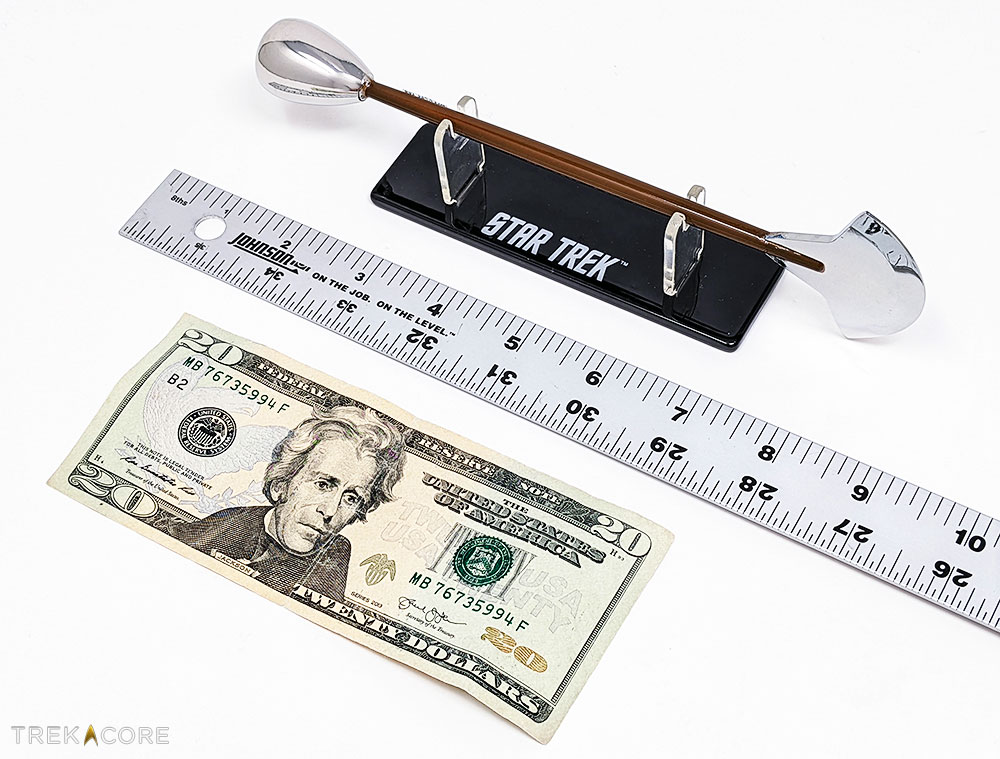
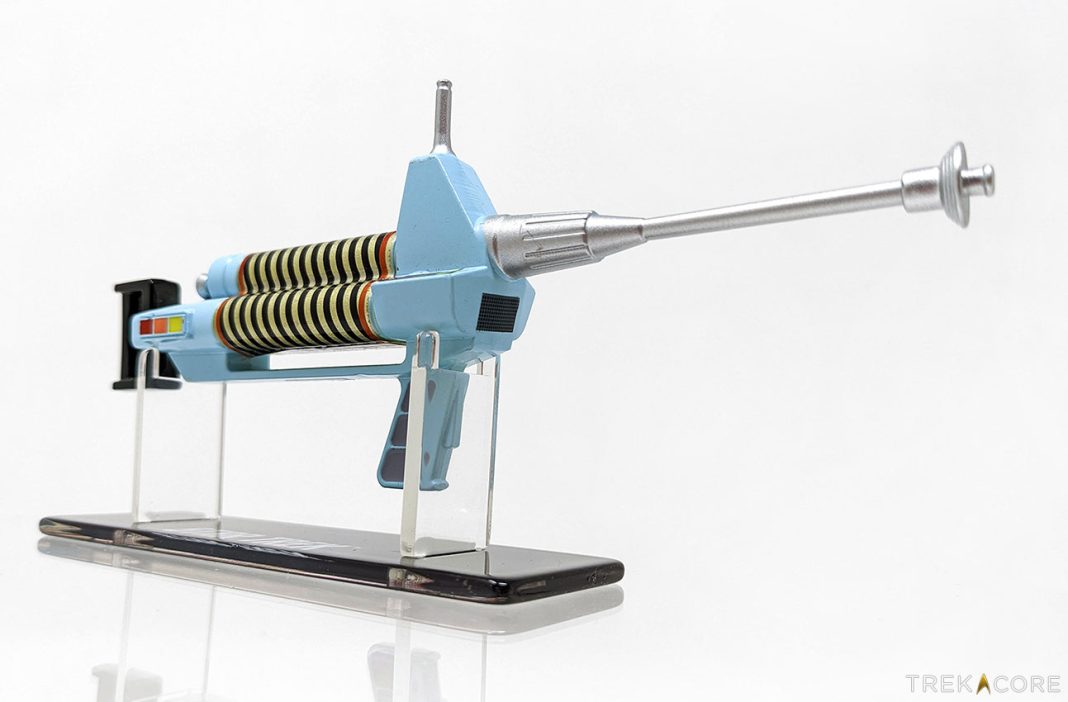
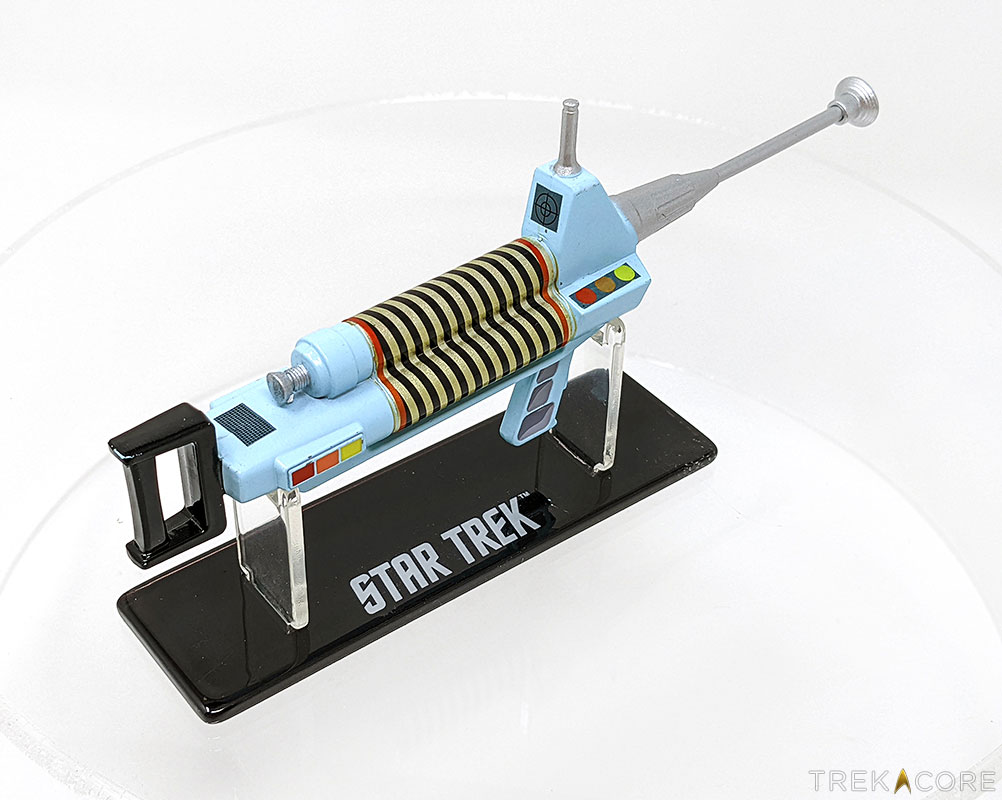
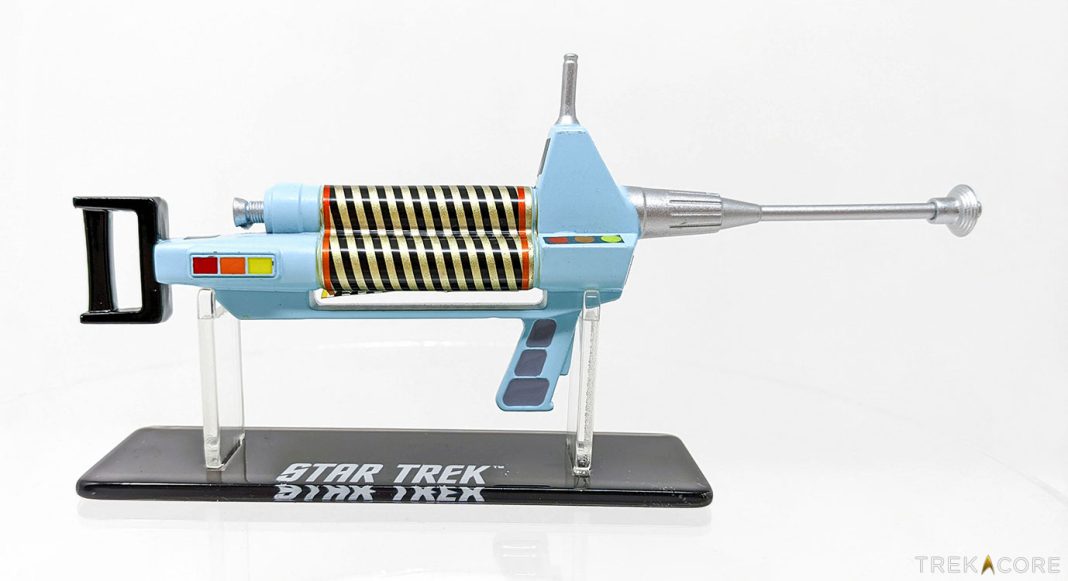
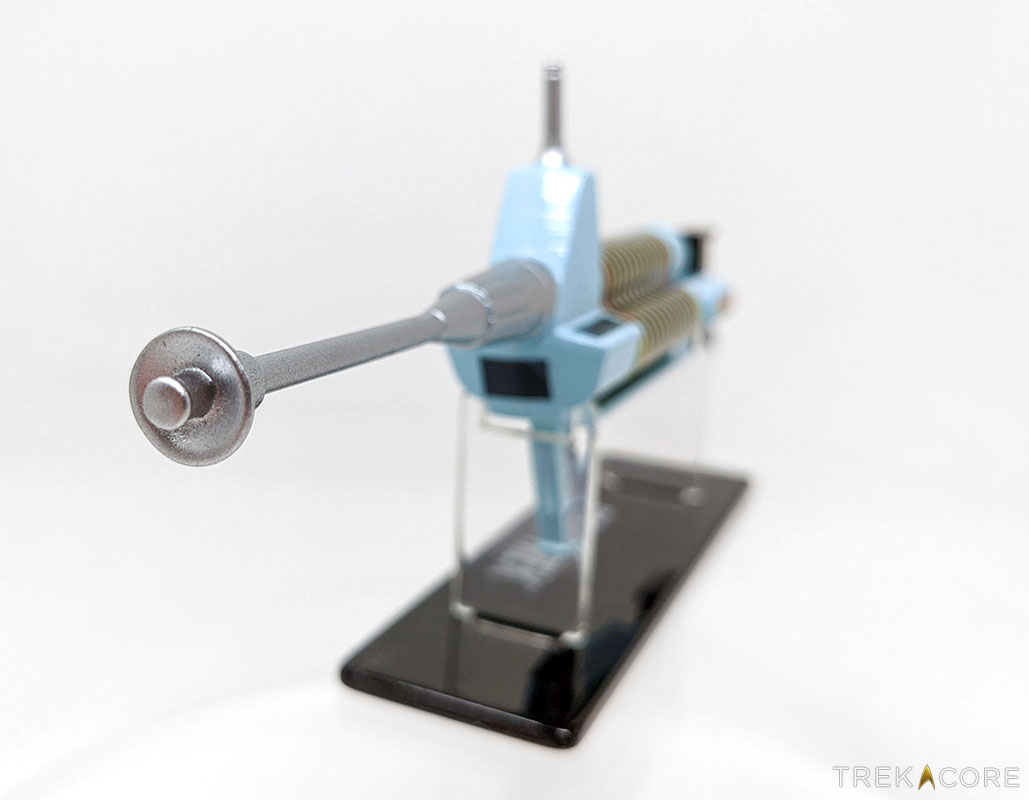
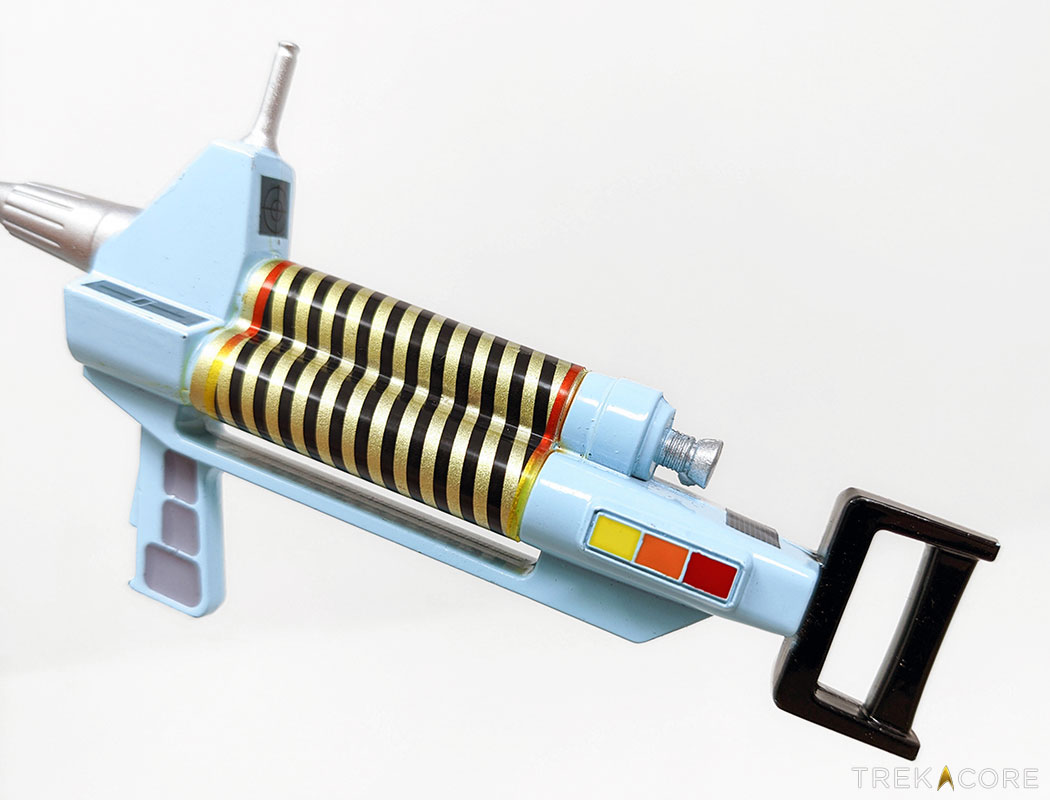
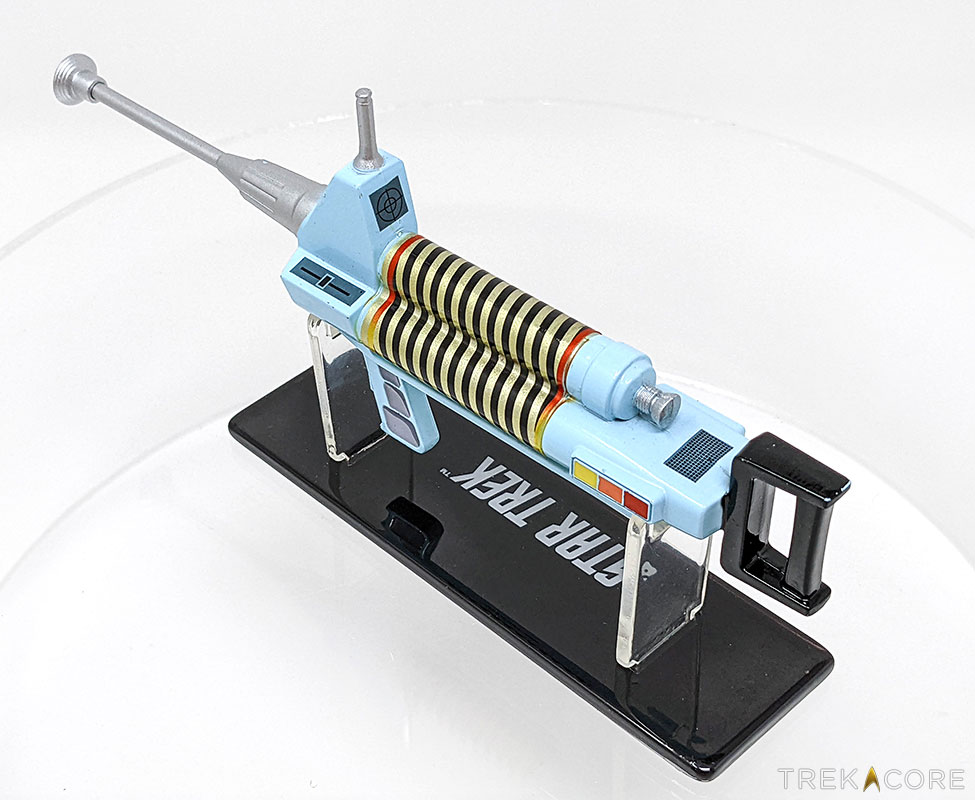
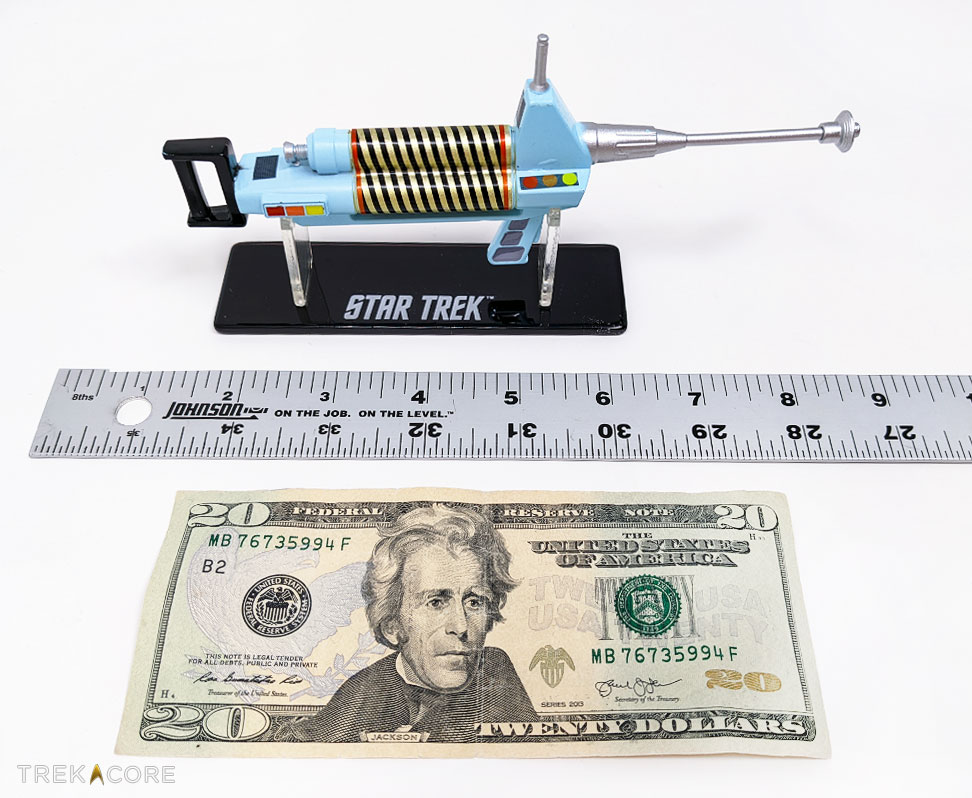
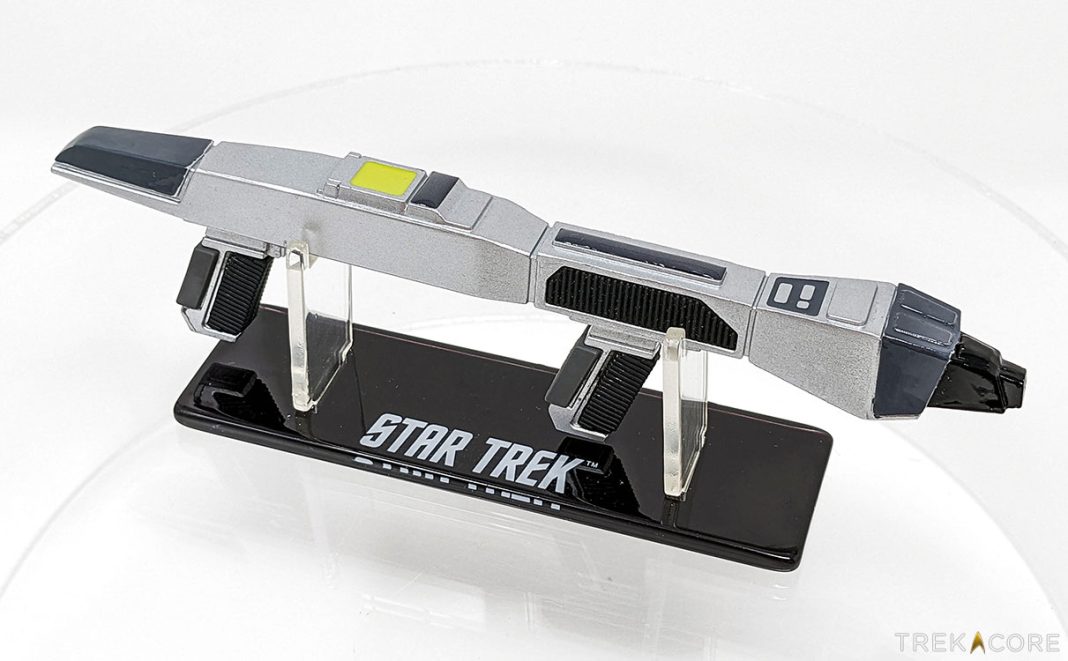
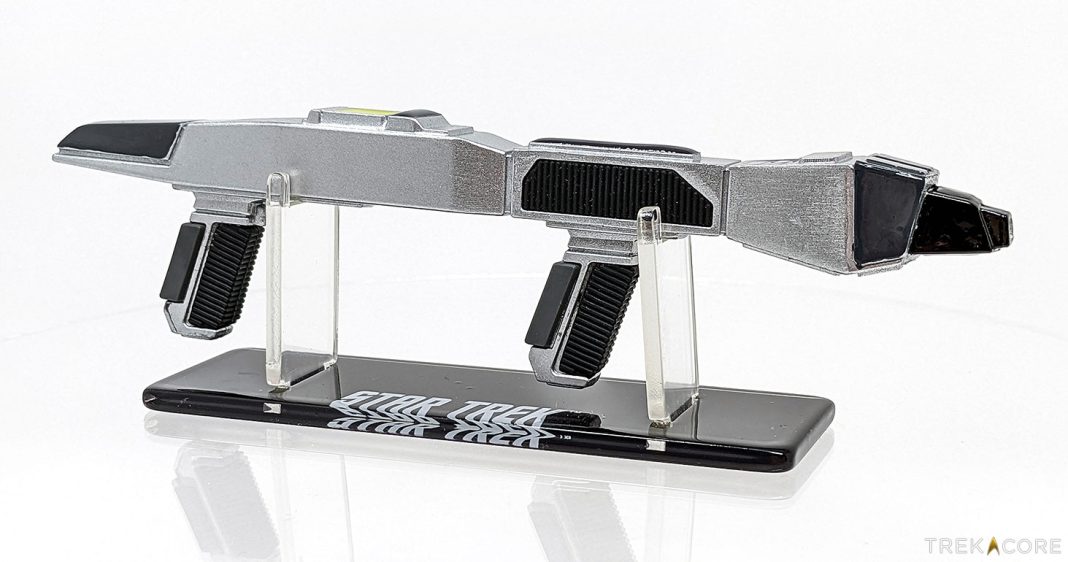
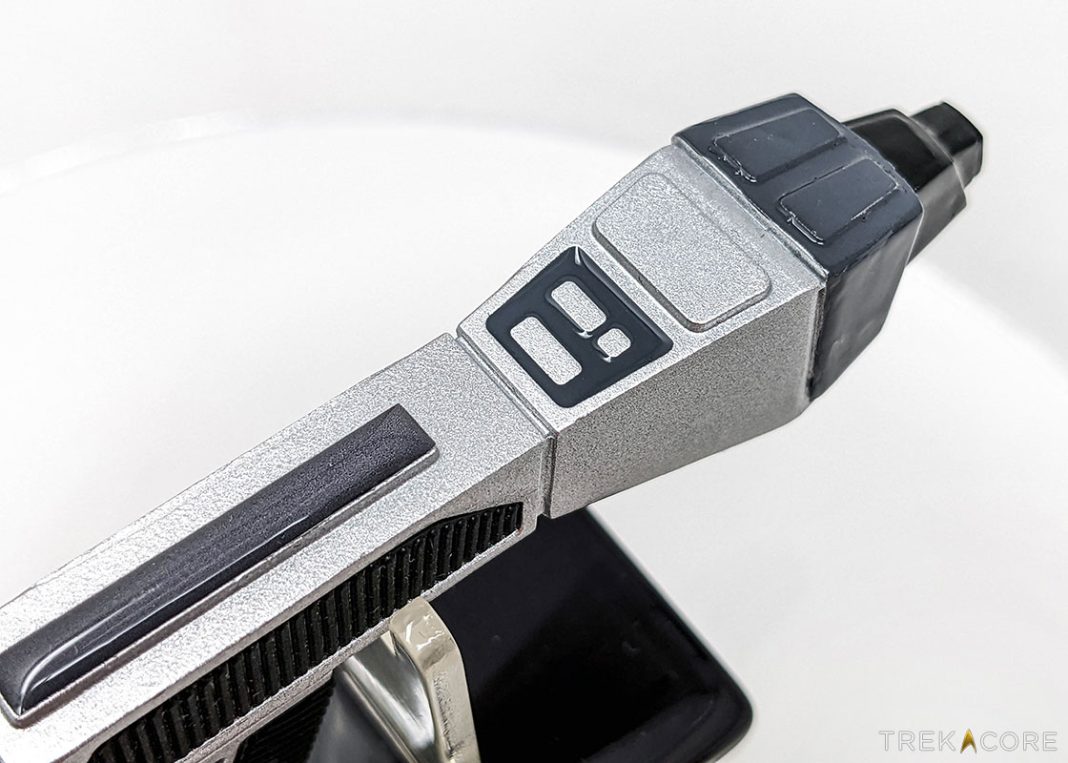
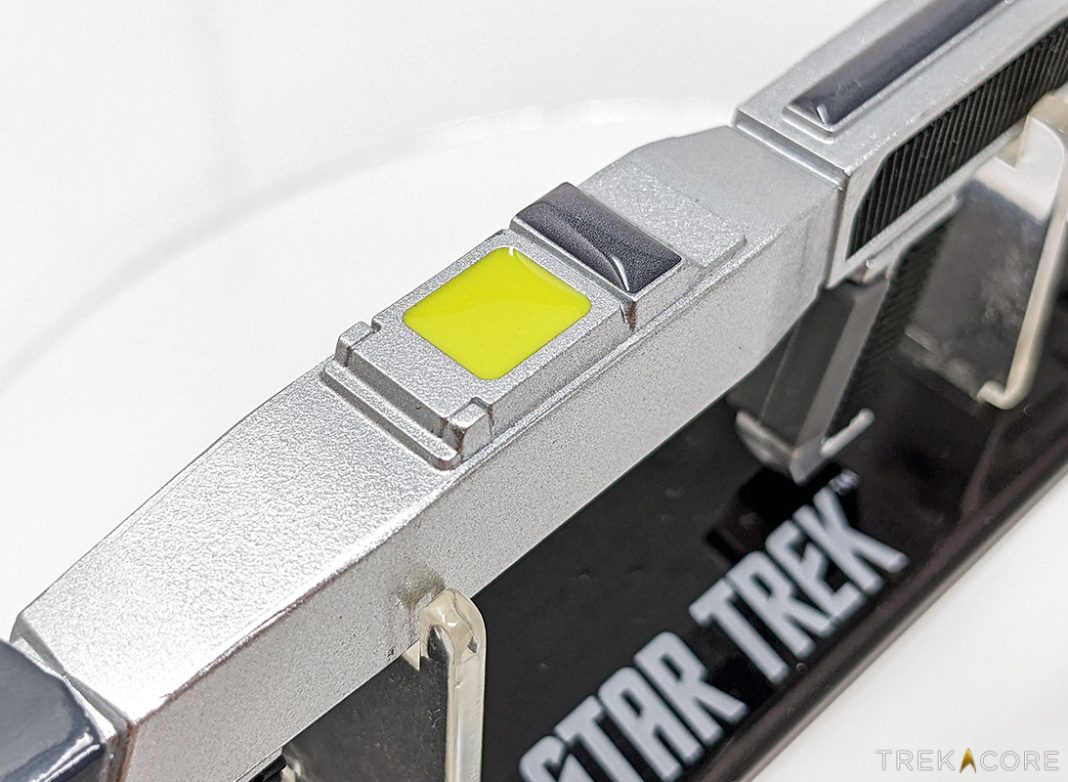
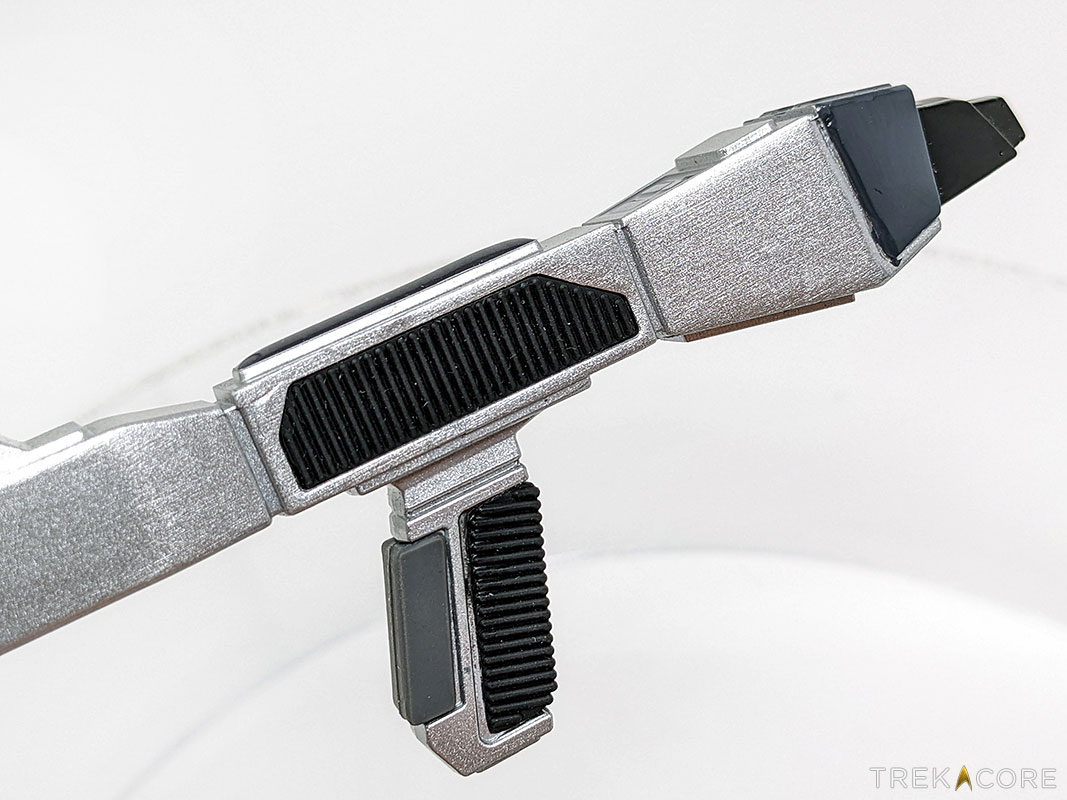
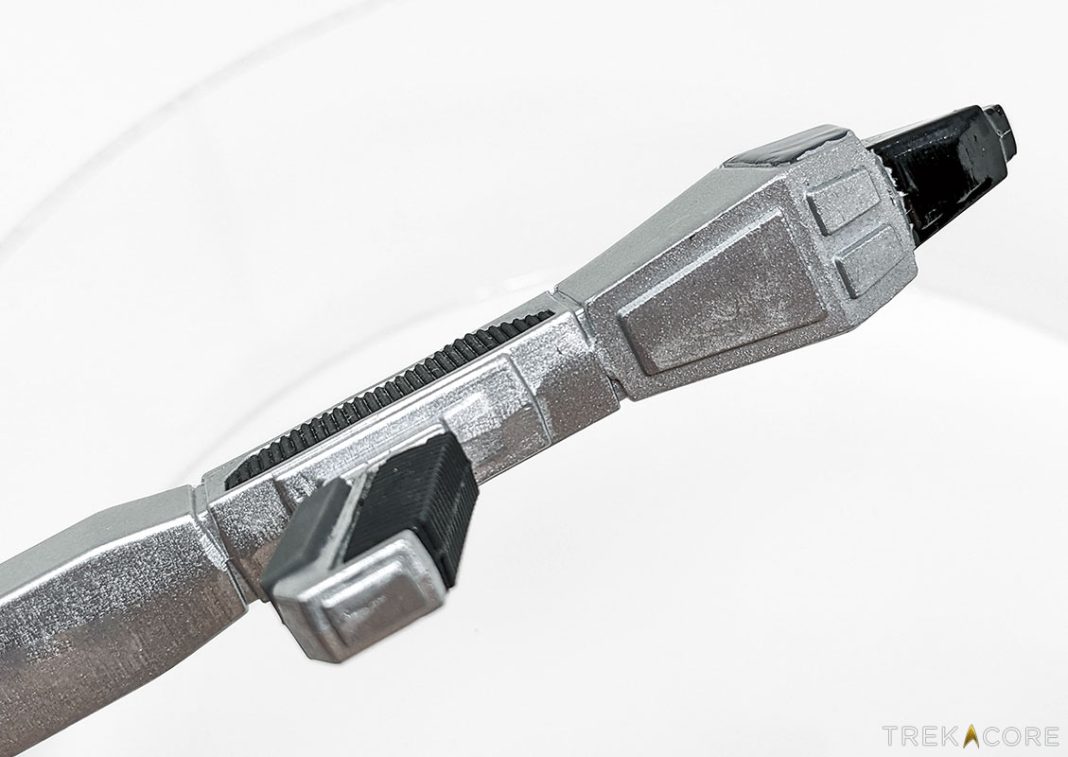
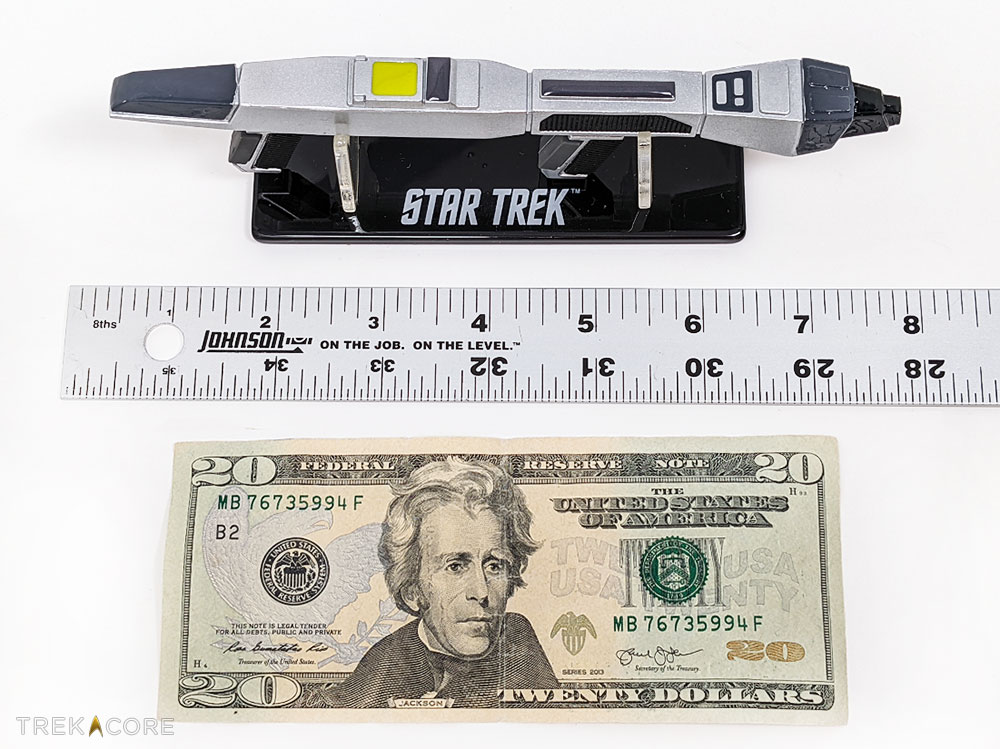
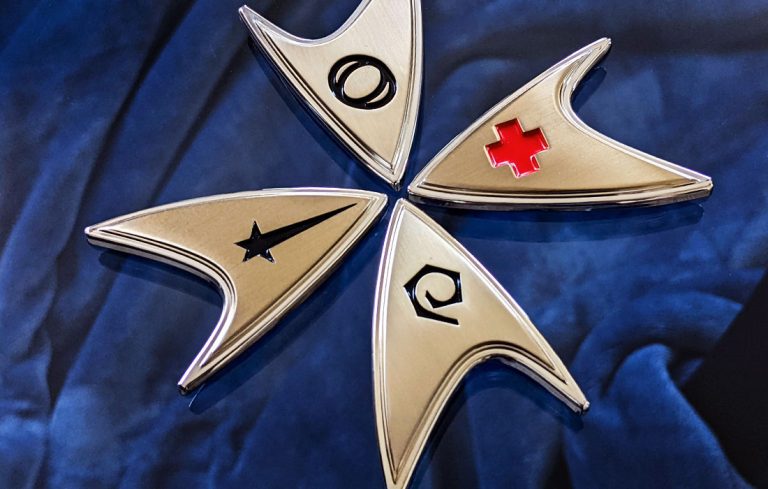
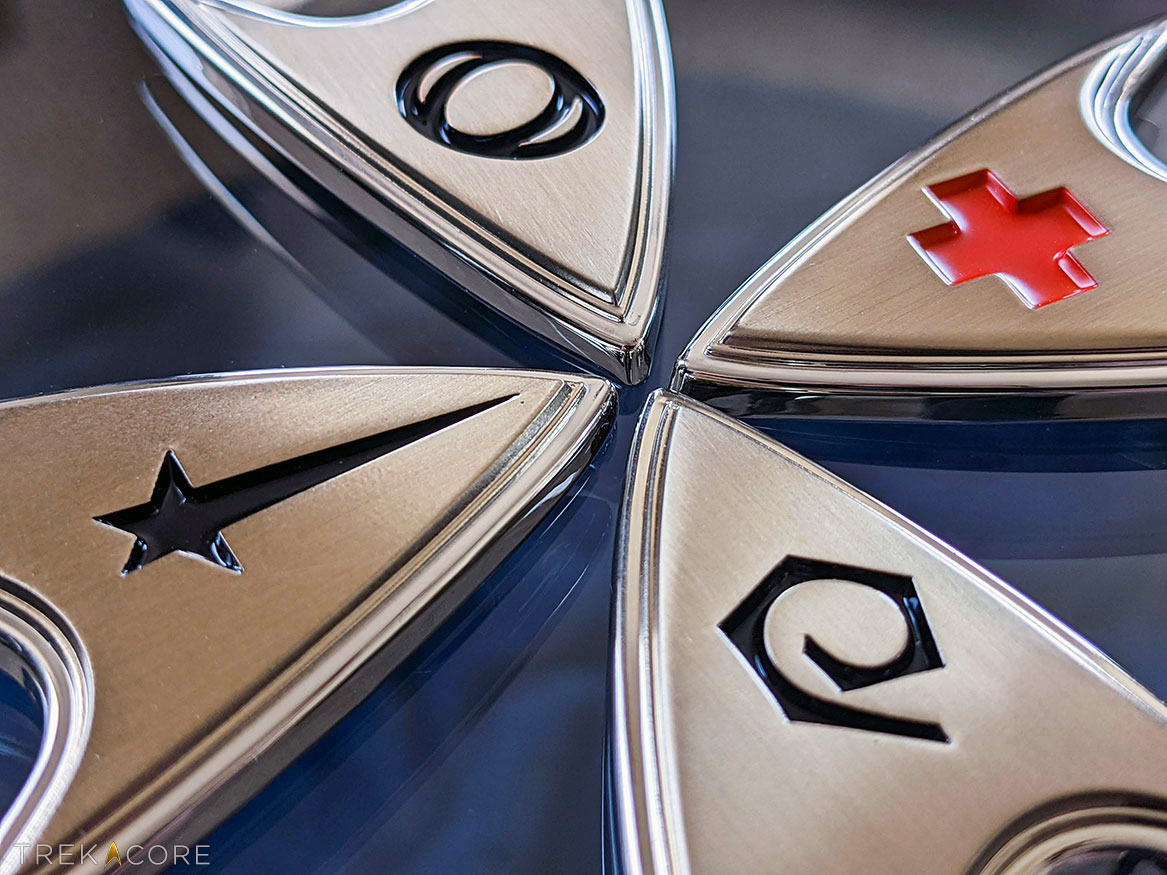
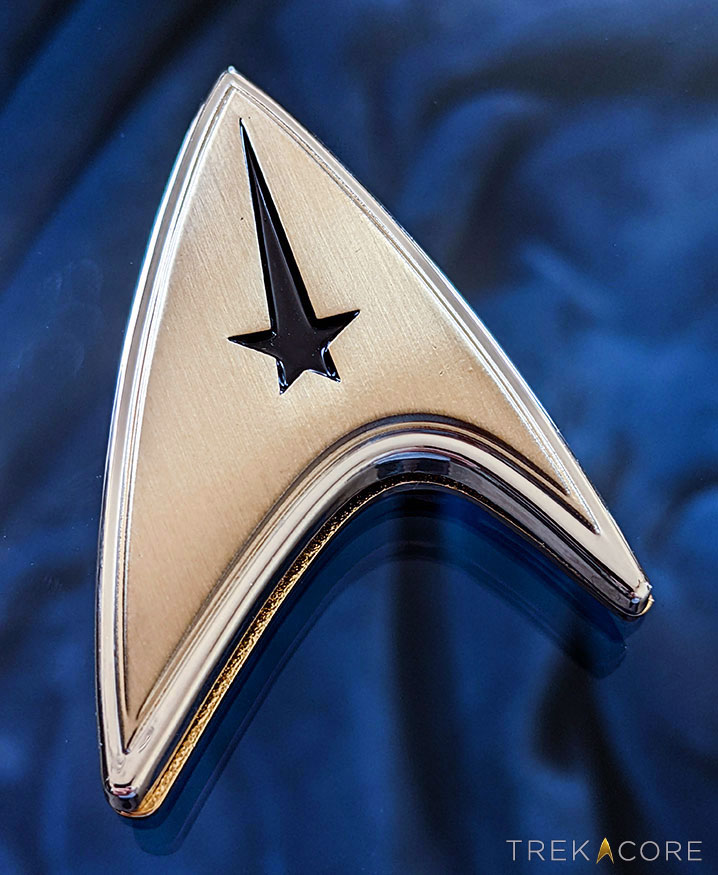
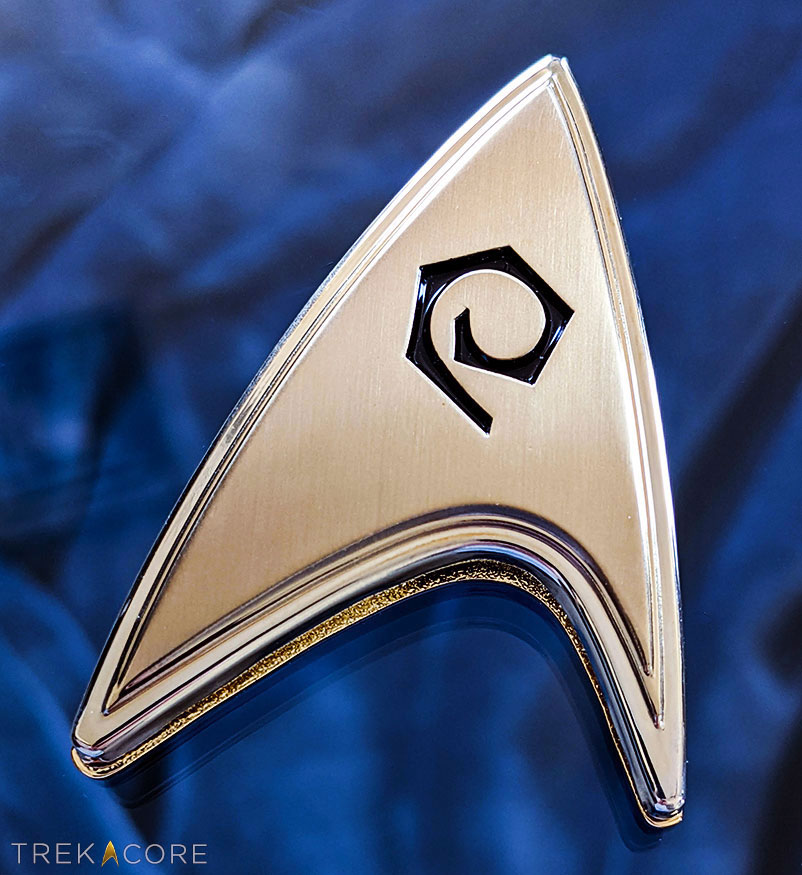
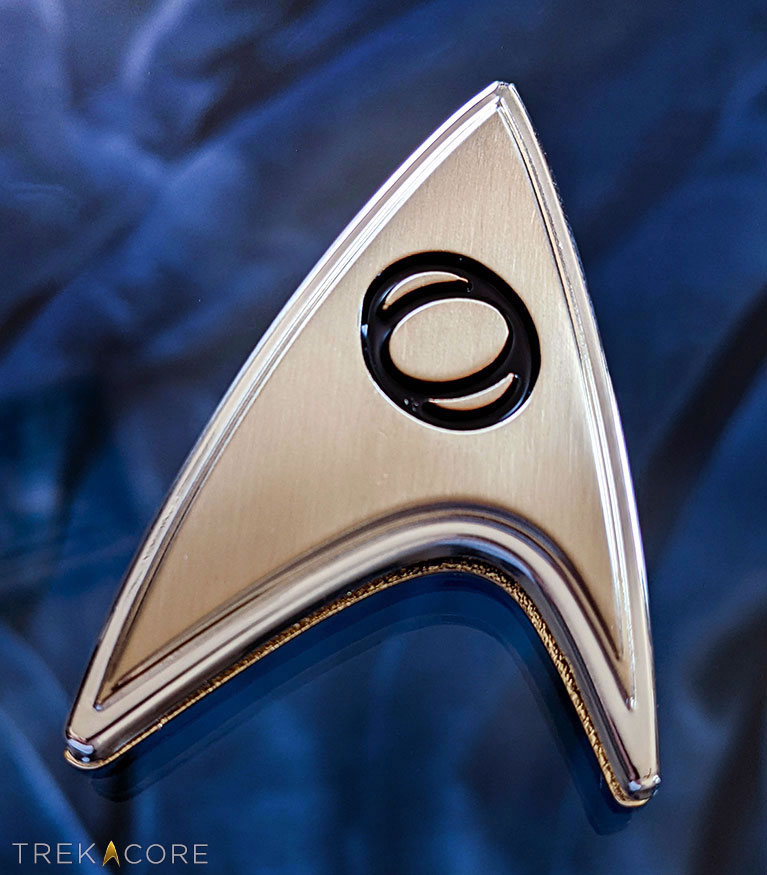
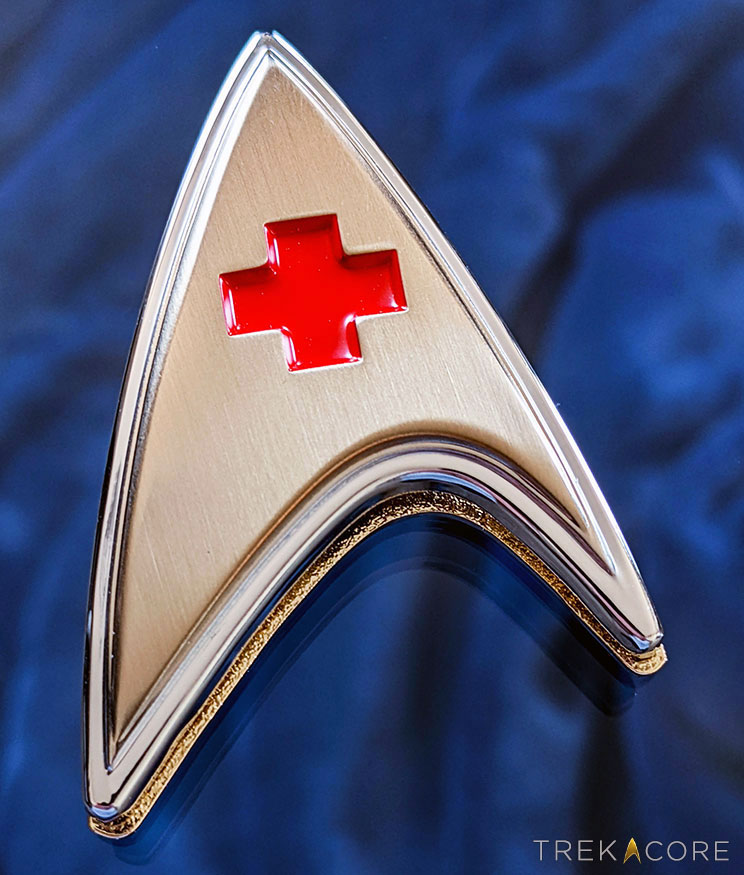
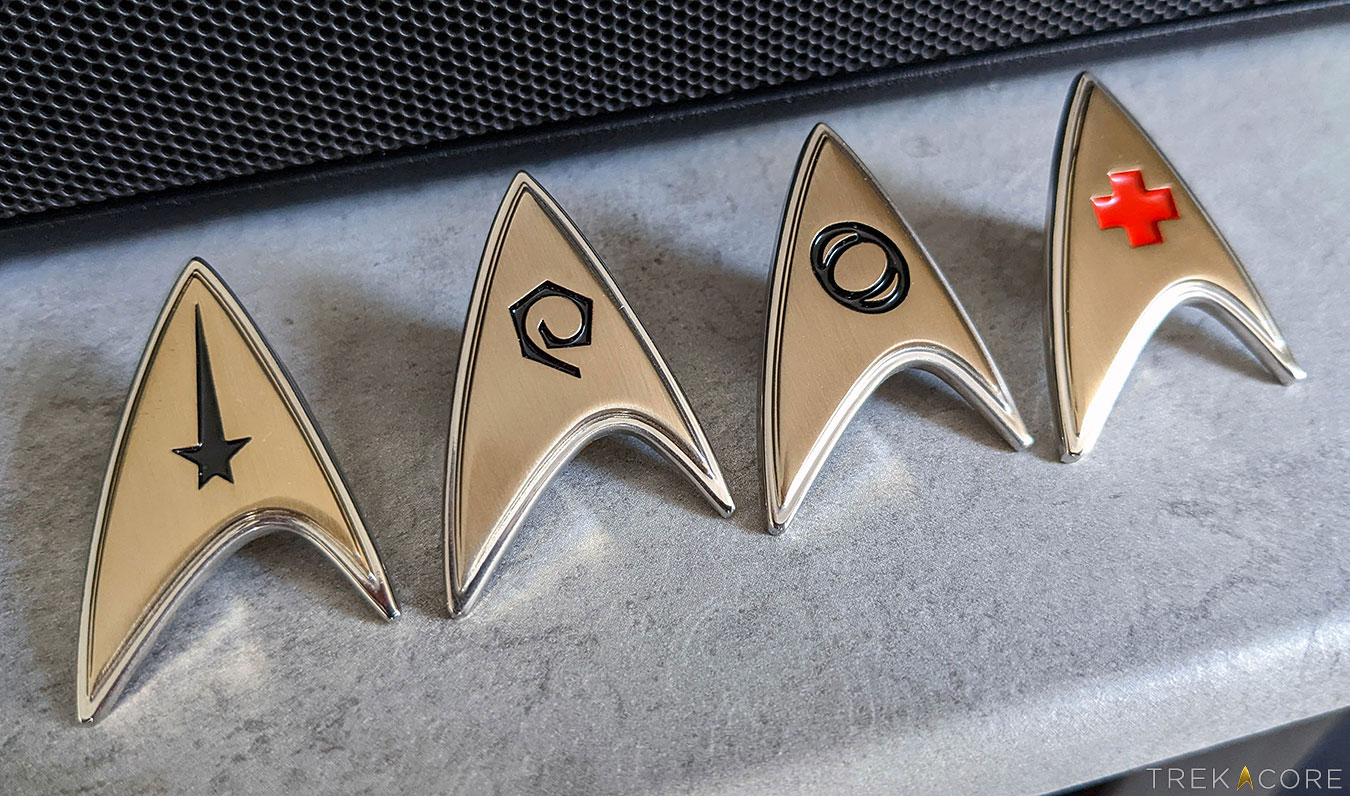
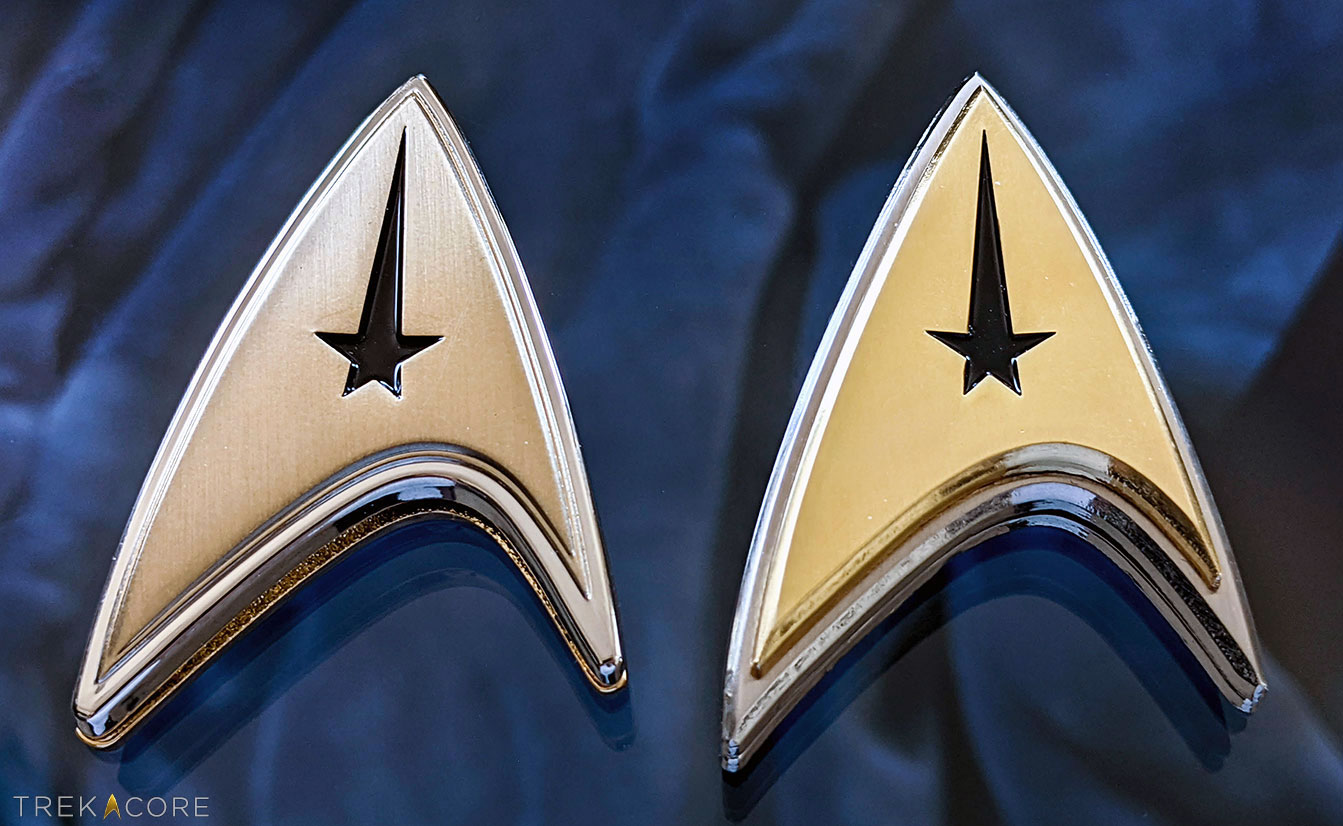
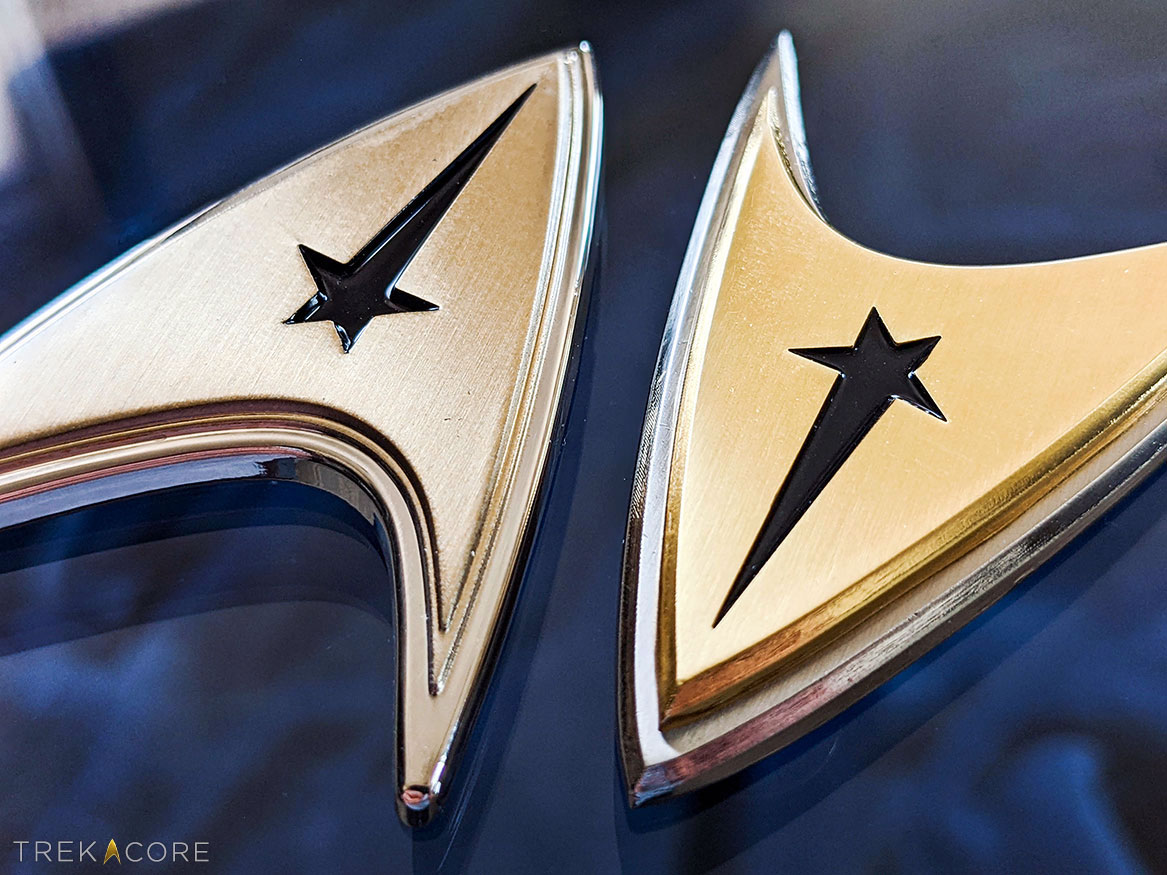
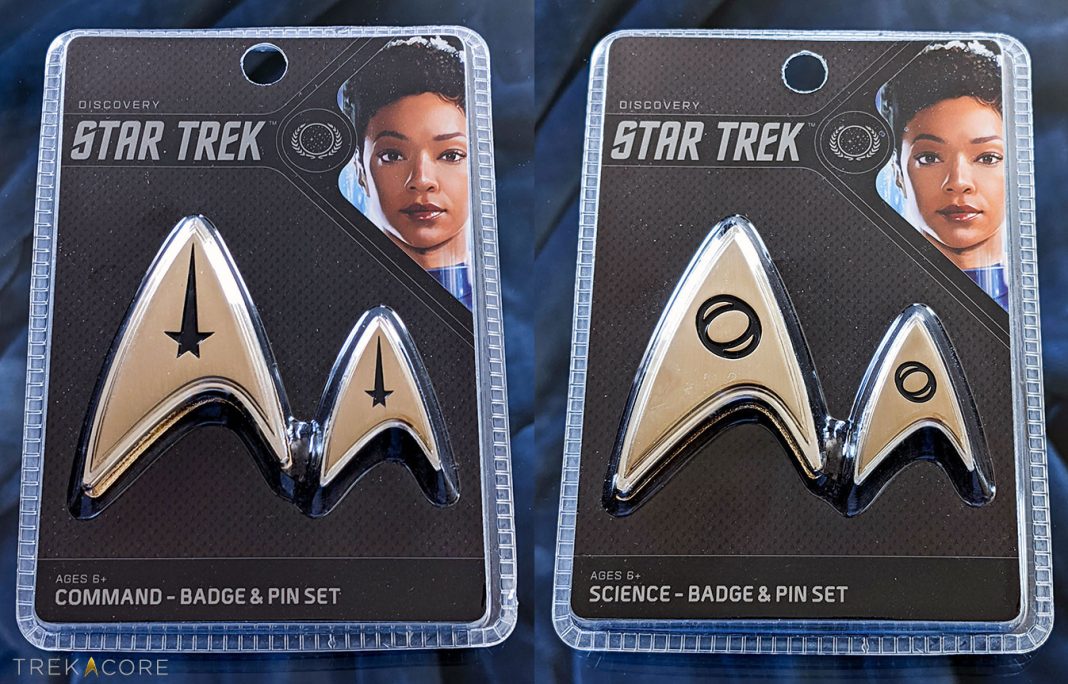

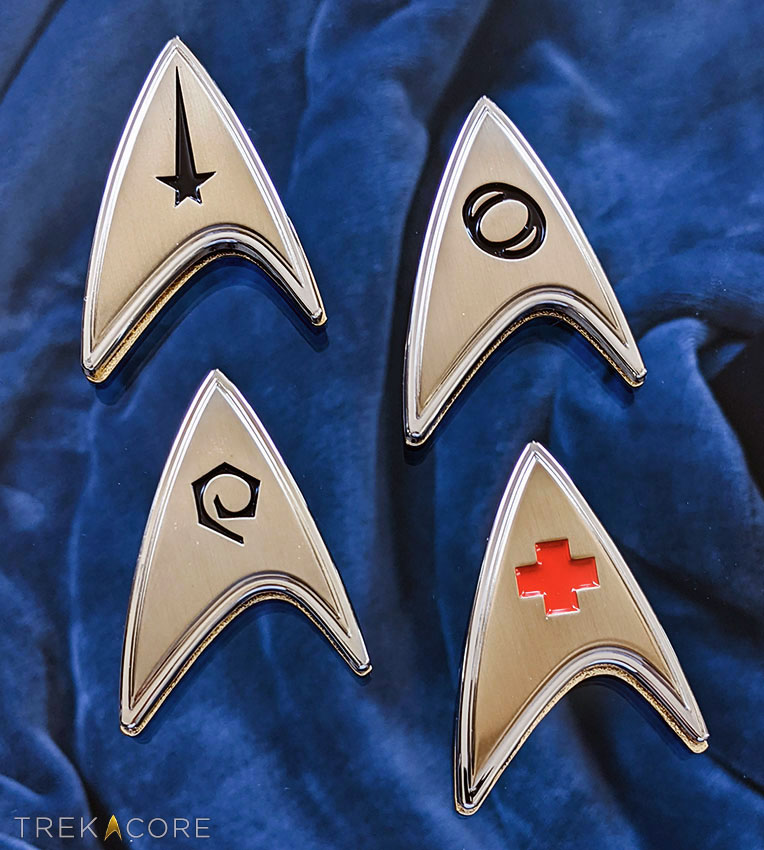

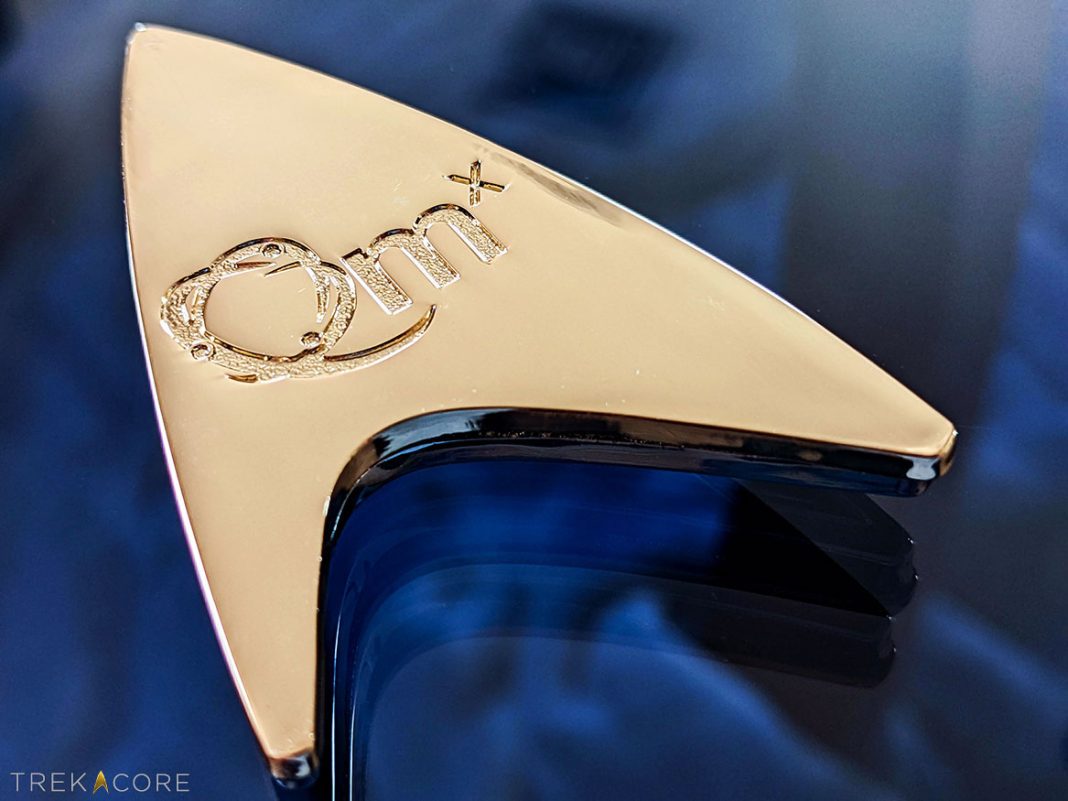
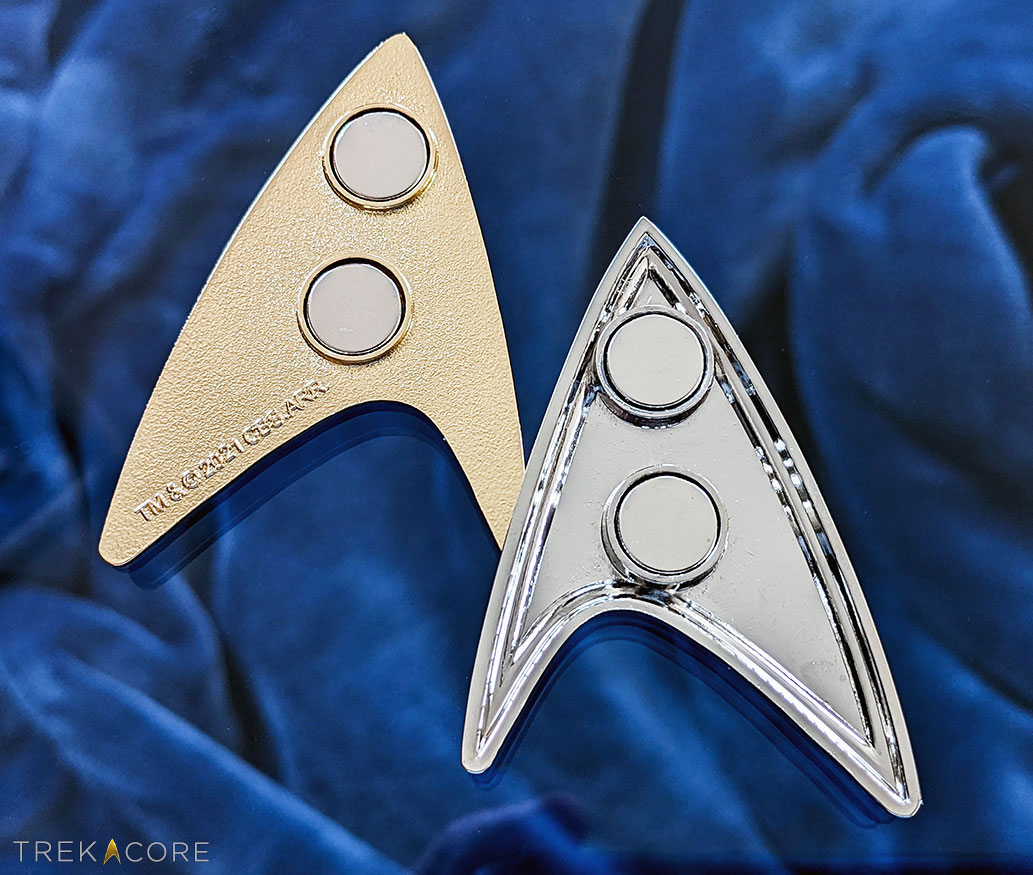
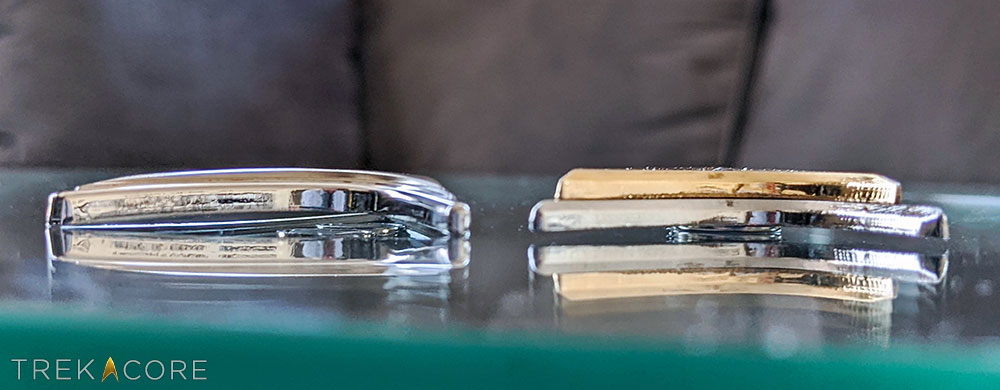
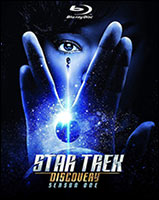 Star Trek: DiscoverySeason 1 Blu-ray
Star Trek: DiscoverySeason 1 Blu-ray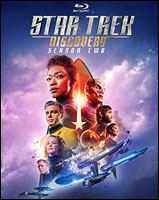 Star Trek: DiscoverySeason 2 Blu-ray
Star Trek: DiscoverySeason 2 Blu-ray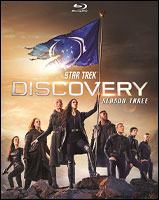 Star Trek: DiscoverySeason 3 Blu-ray
Star Trek: DiscoverySeason 3 Blu-ray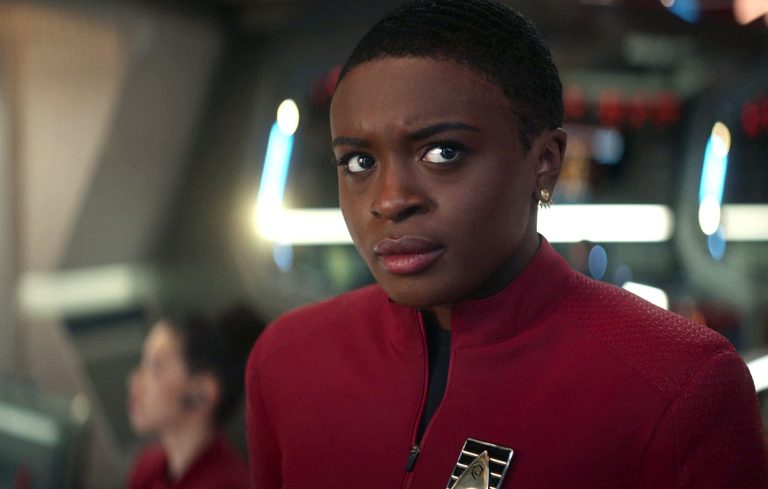
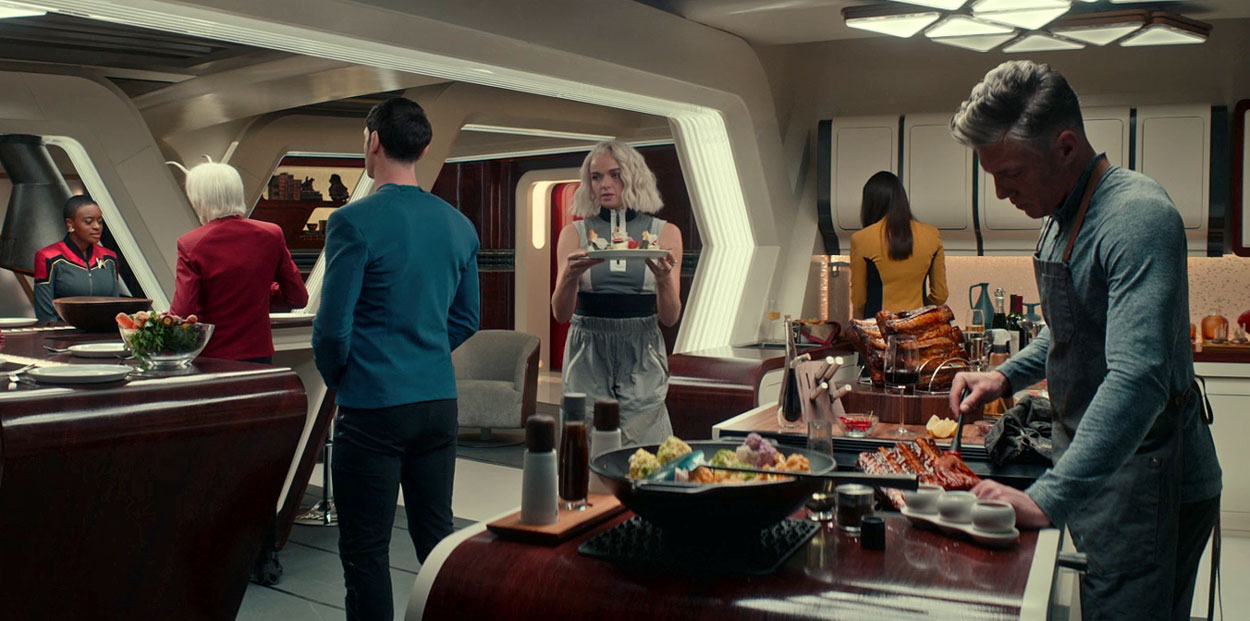
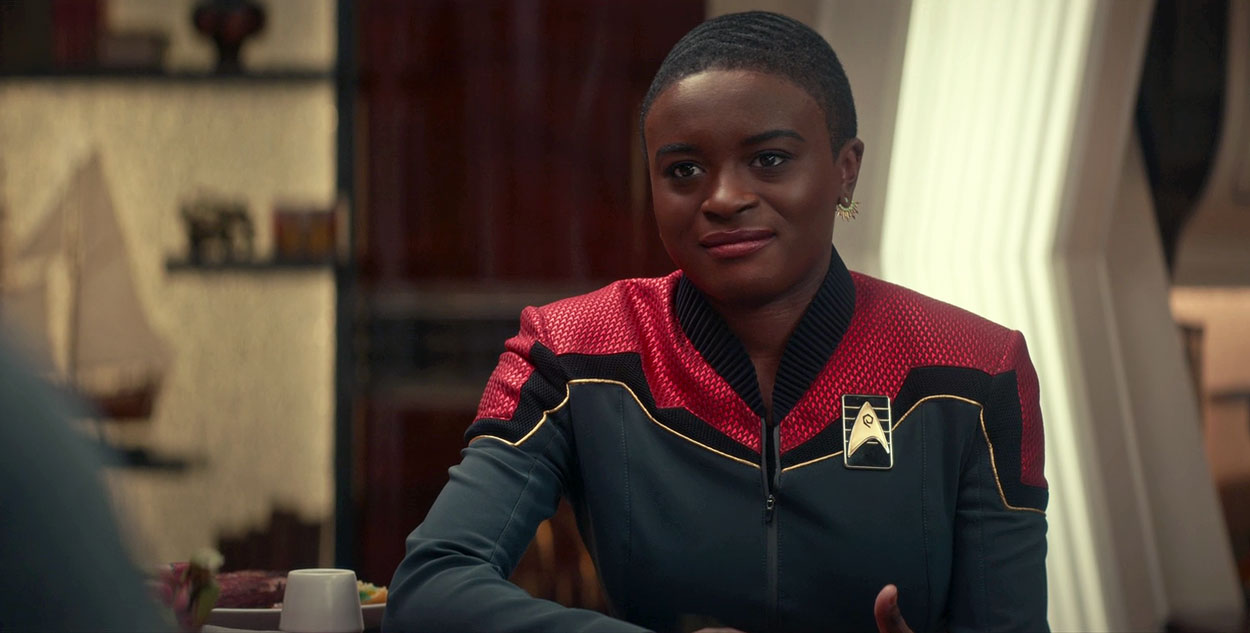
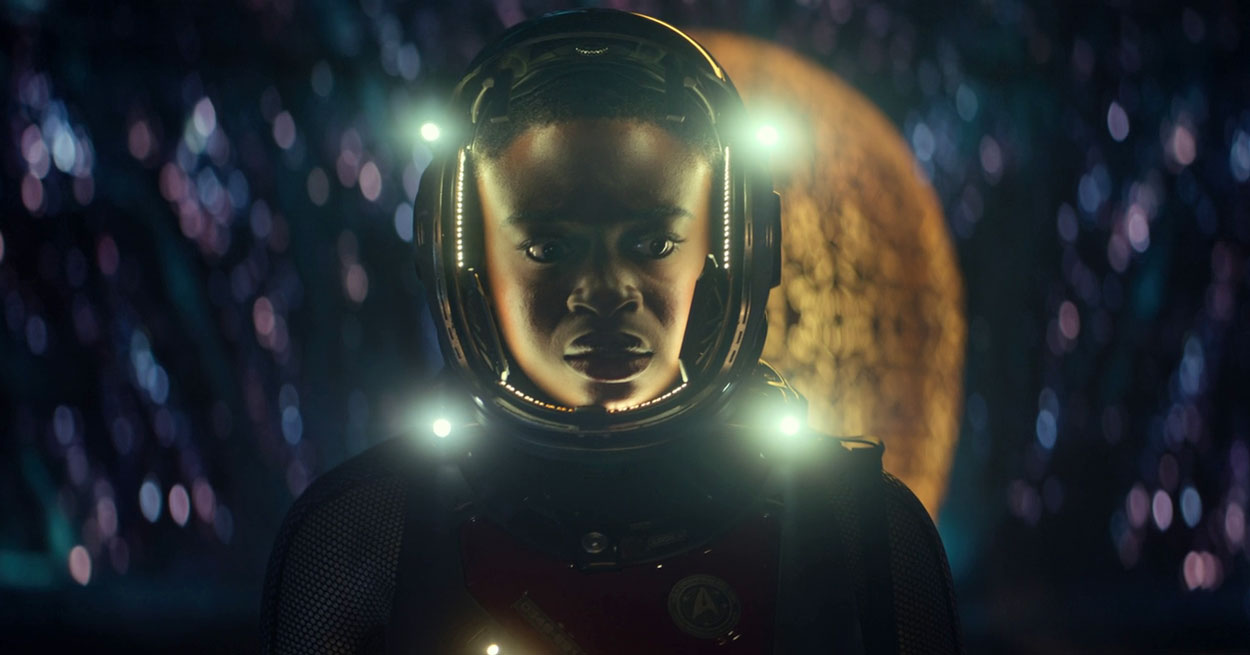
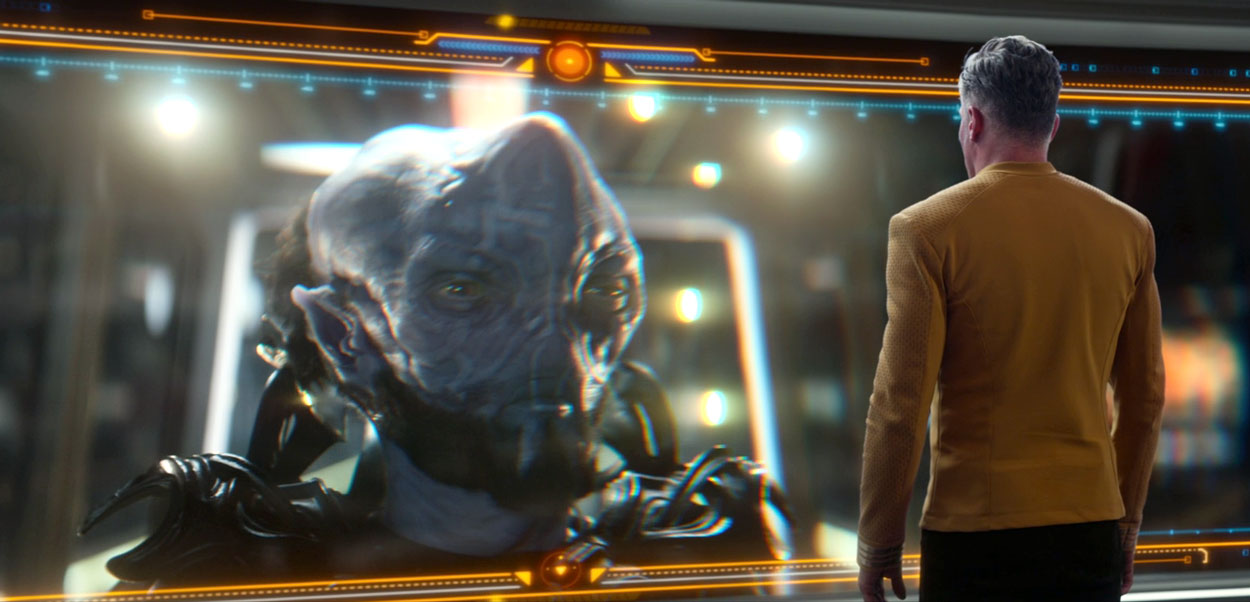
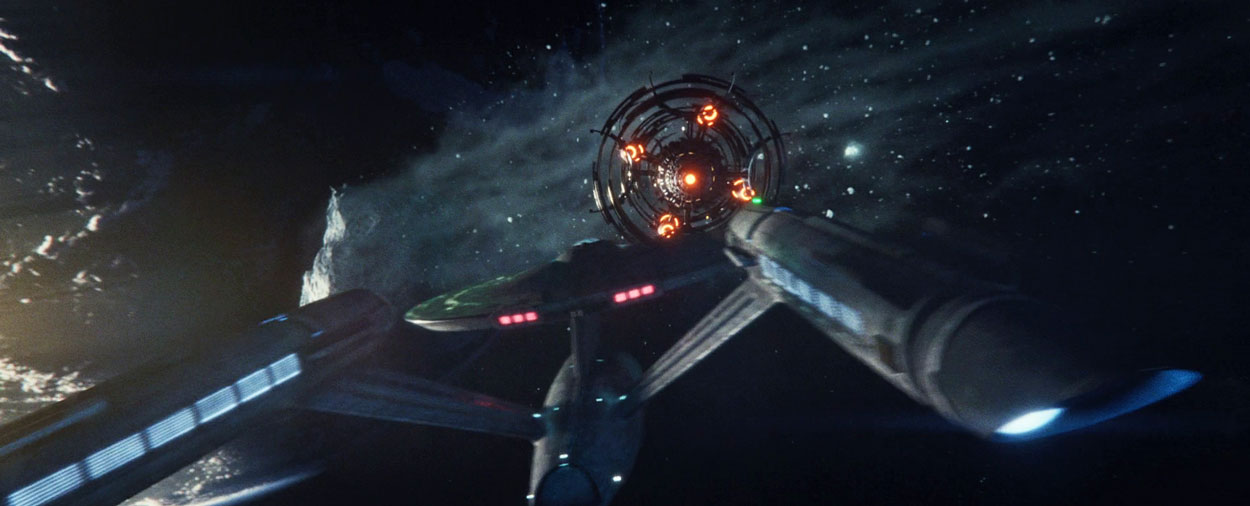
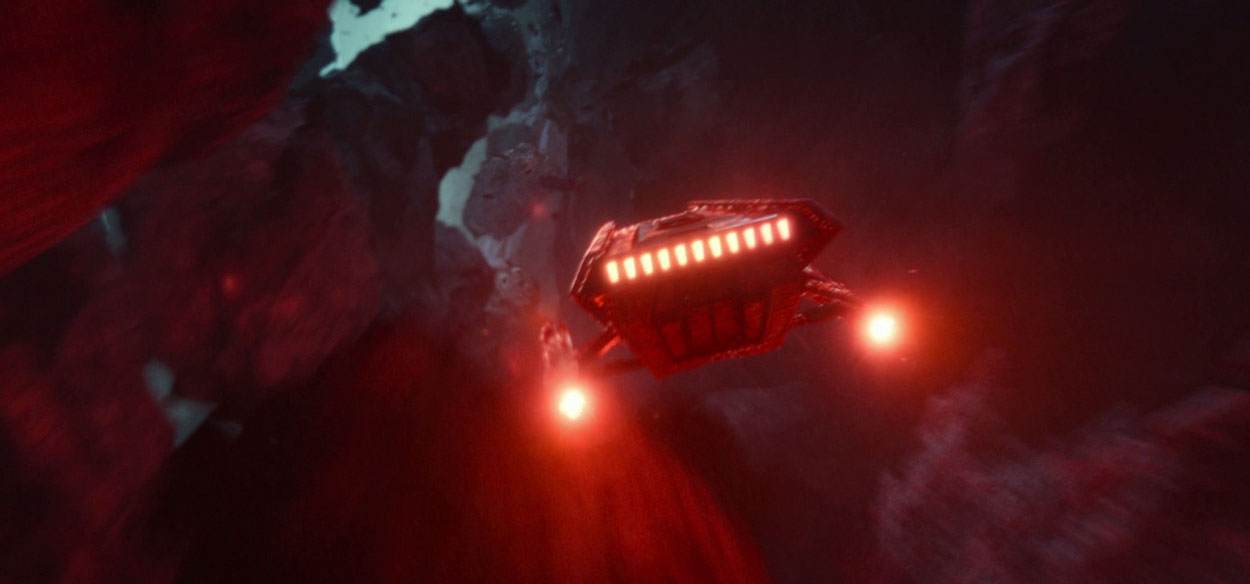
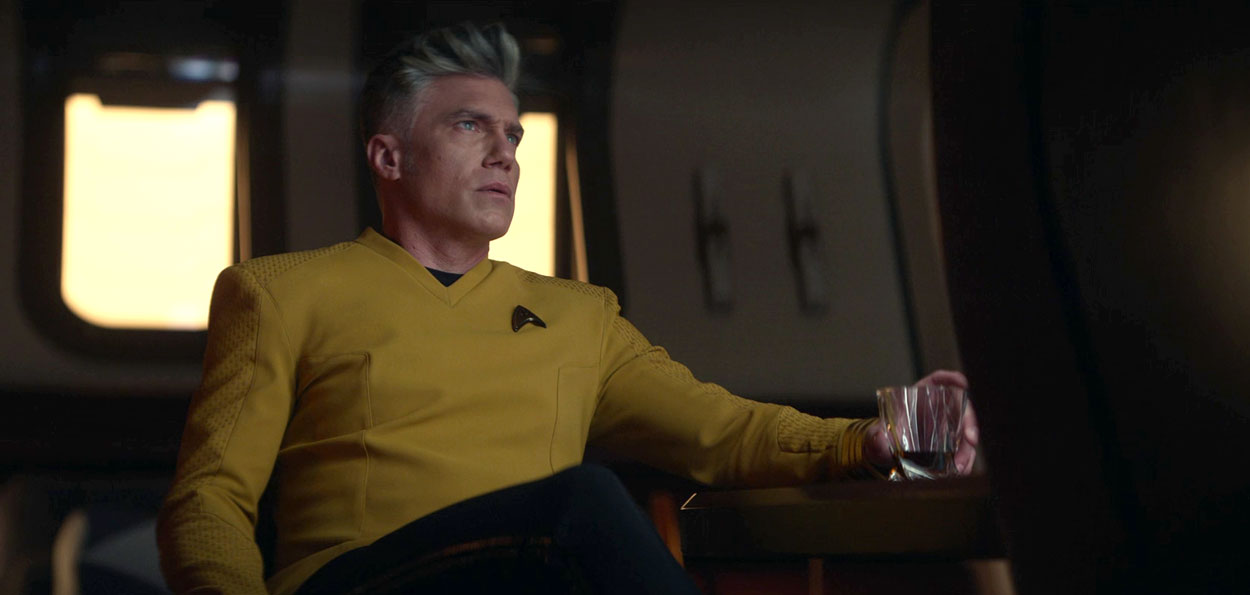
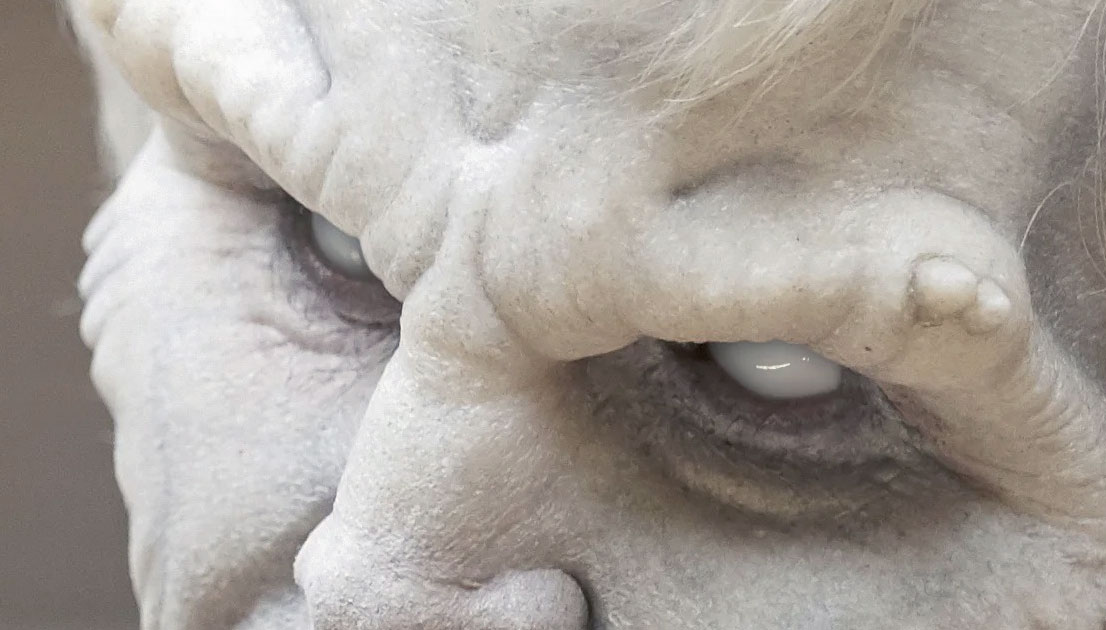
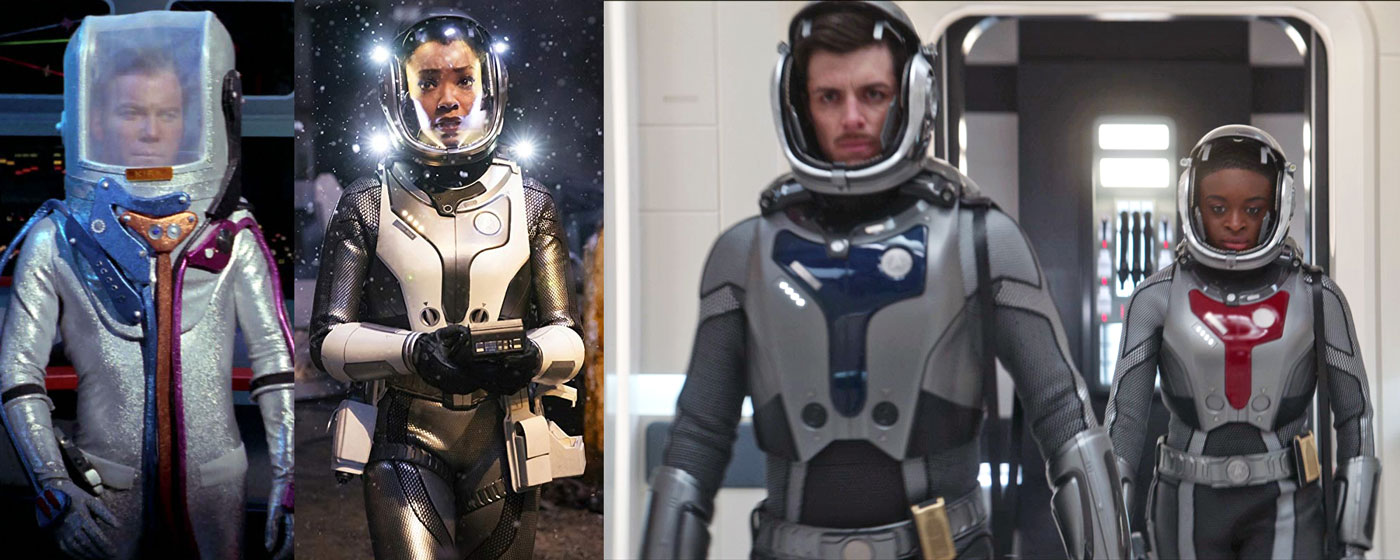
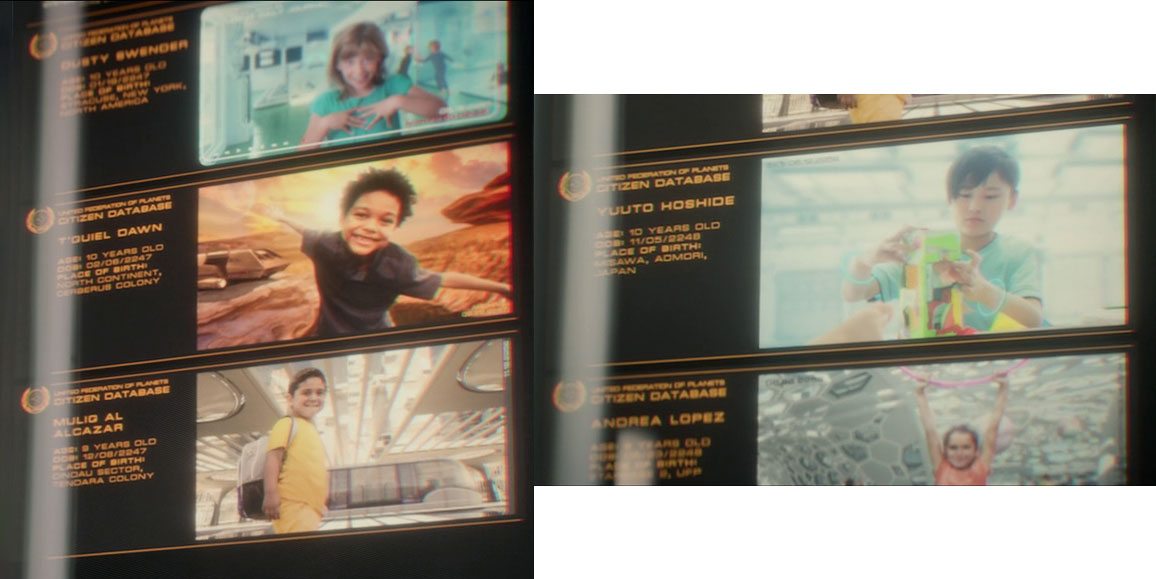
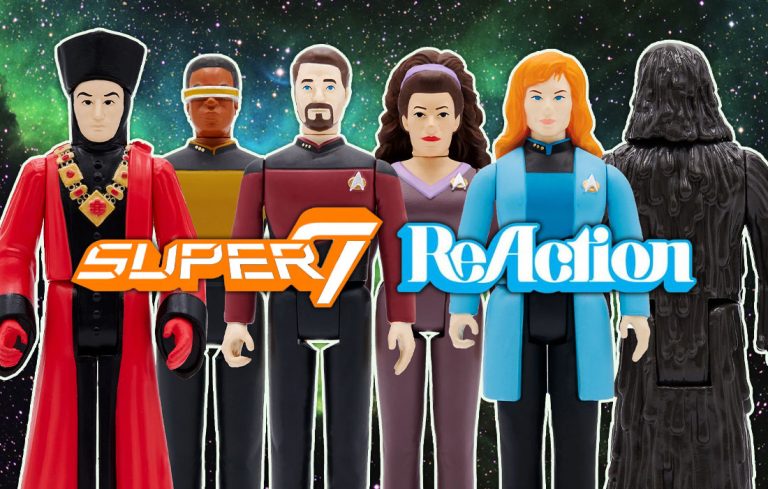
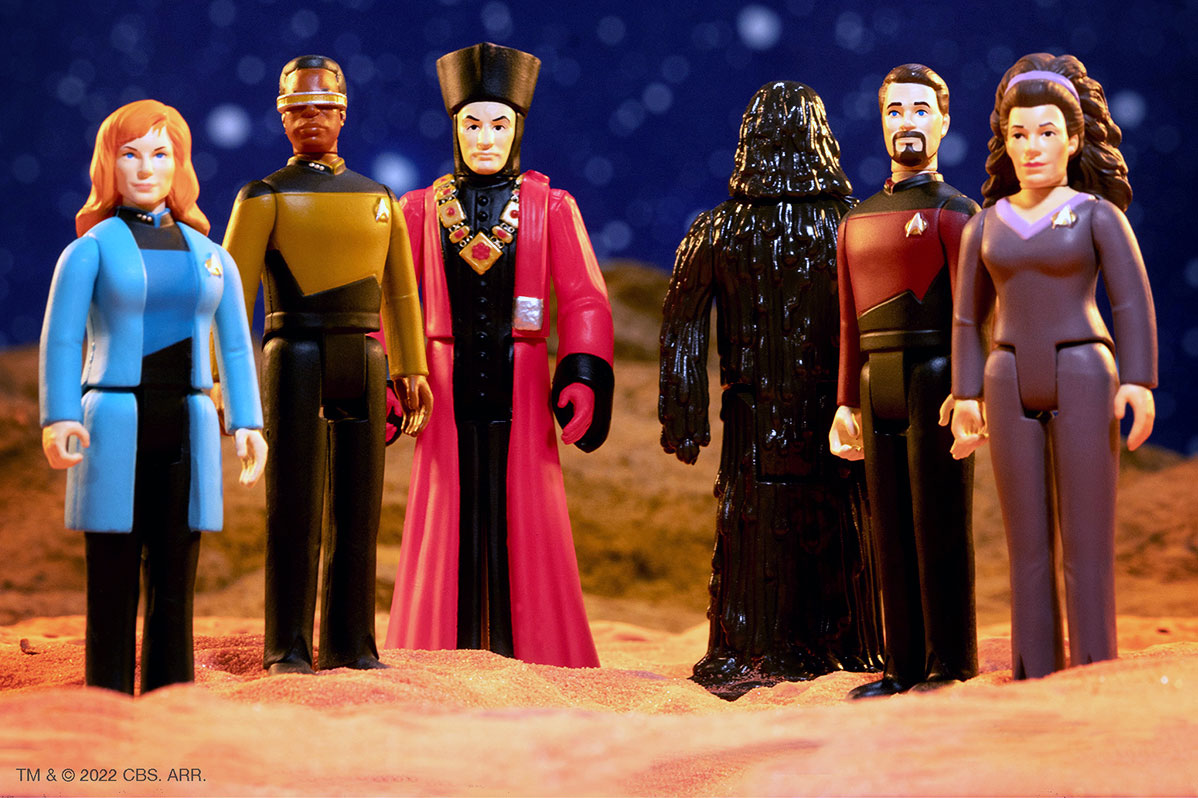

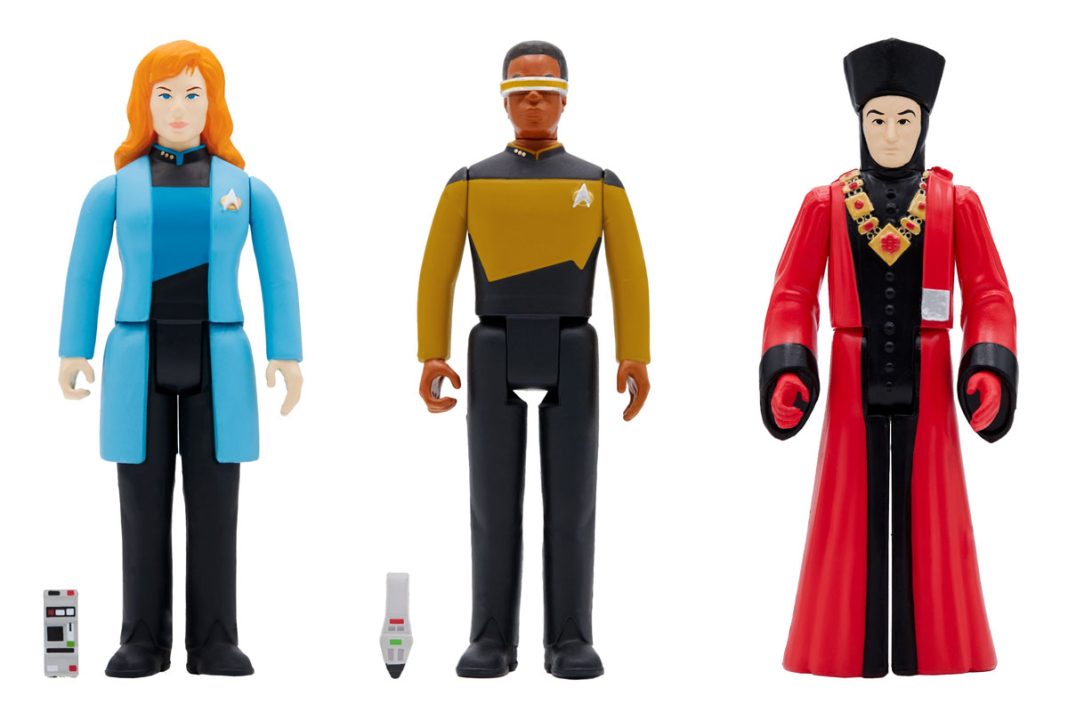

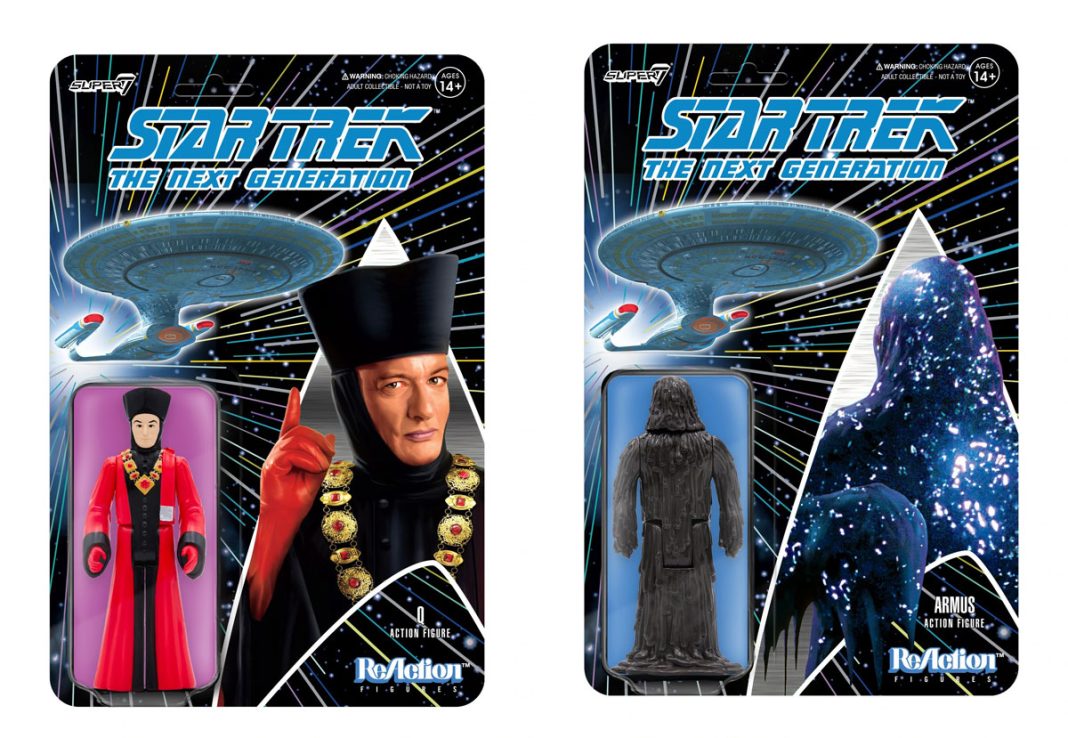
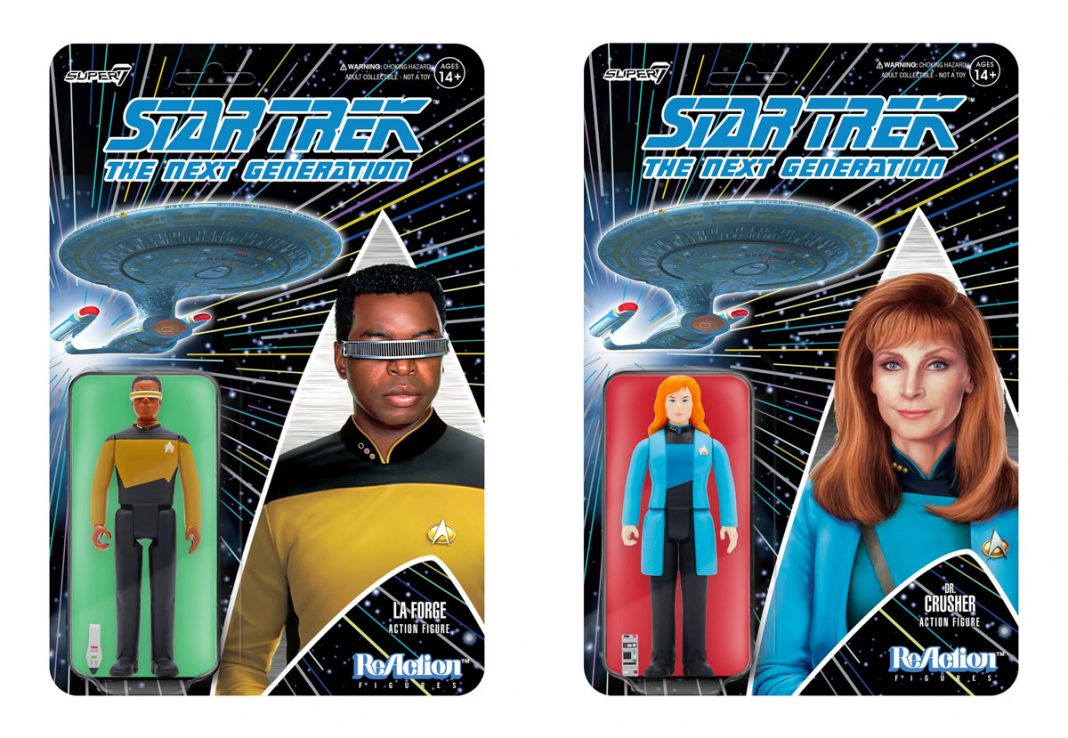
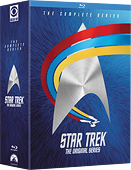 Order theStar Trek: TOSBlu-ray Collection!
Order theStar Trek: TOSBlu-ray Collection!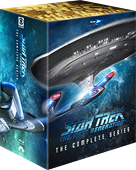 Order theStar Trek: TNGBlu-ray Collection!
Order theStar Trek: TNGBlu-ray Collection!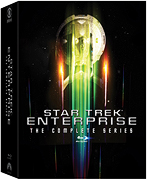 Order theStar Trek: Enterprise Blu-ray Collection!
Order theStar Trek: Enterprise Blu-ray Collection!